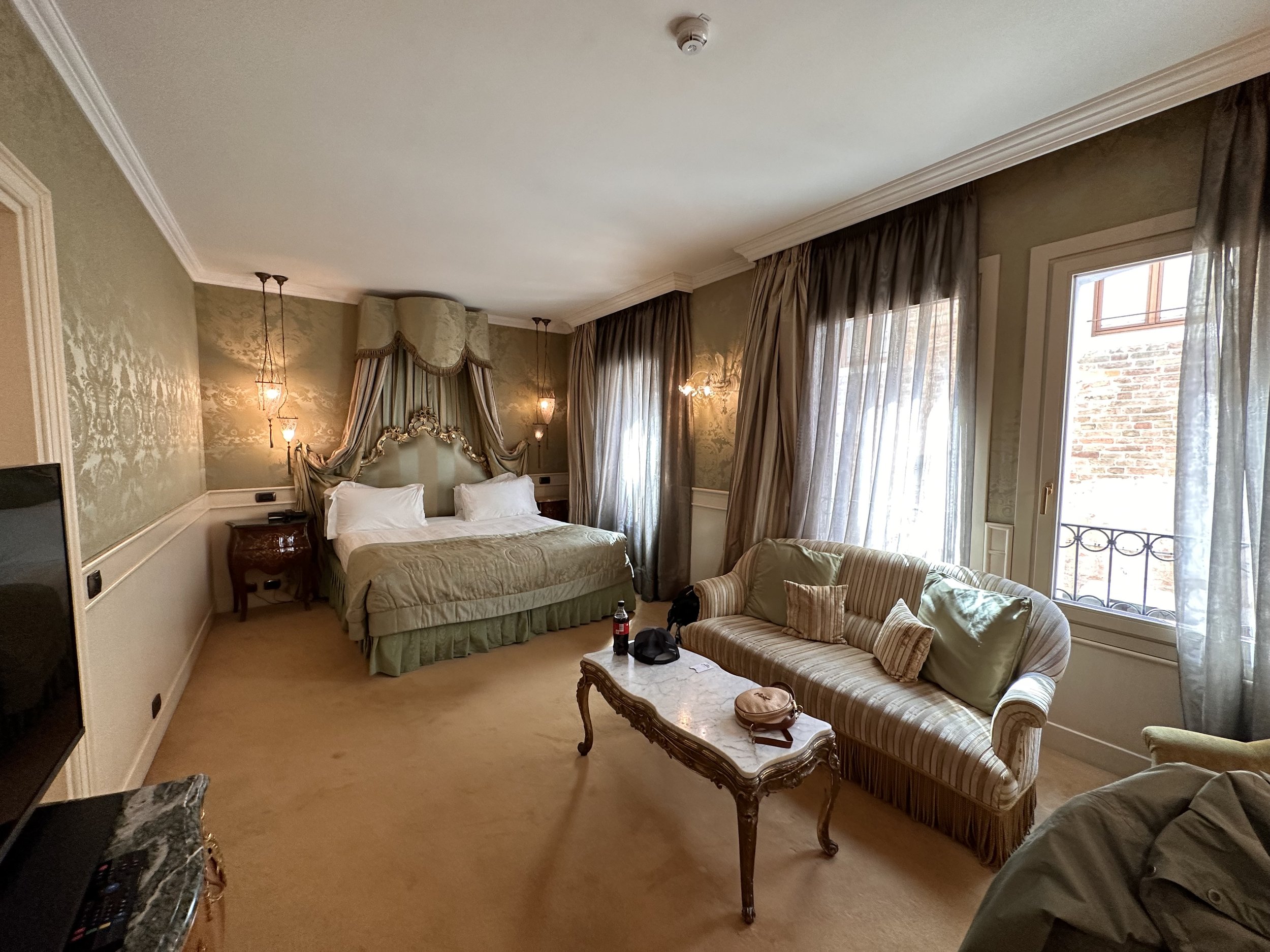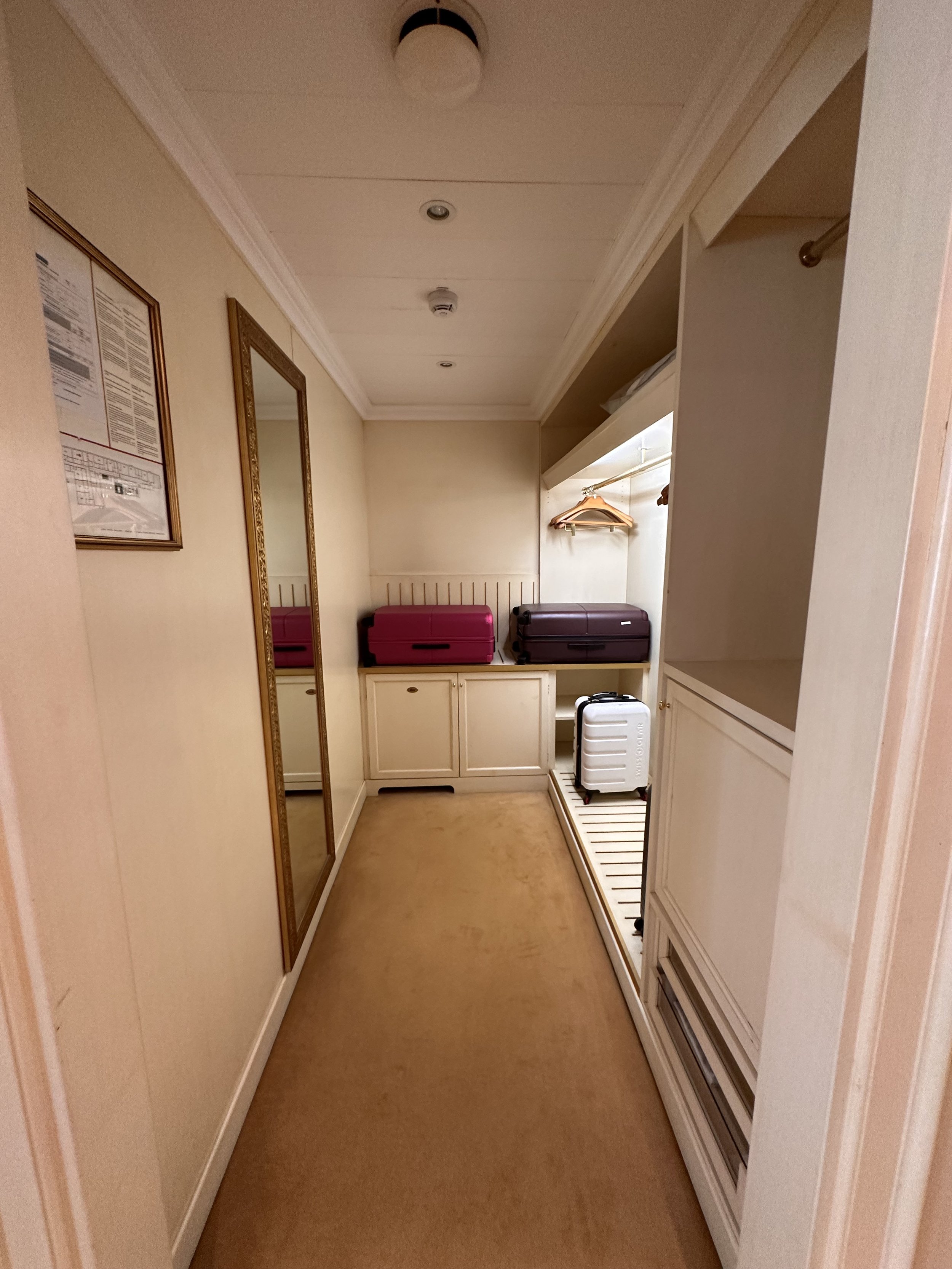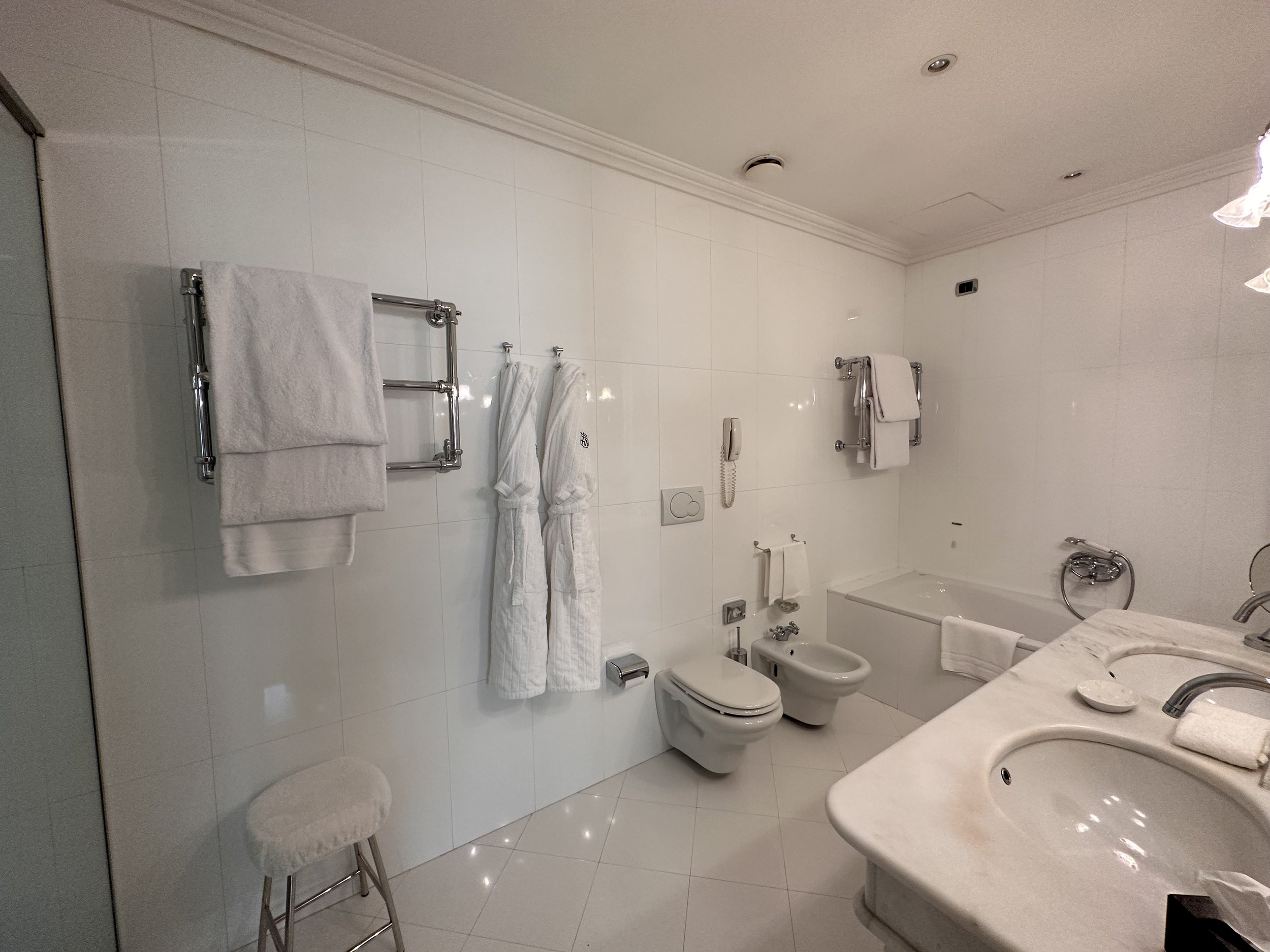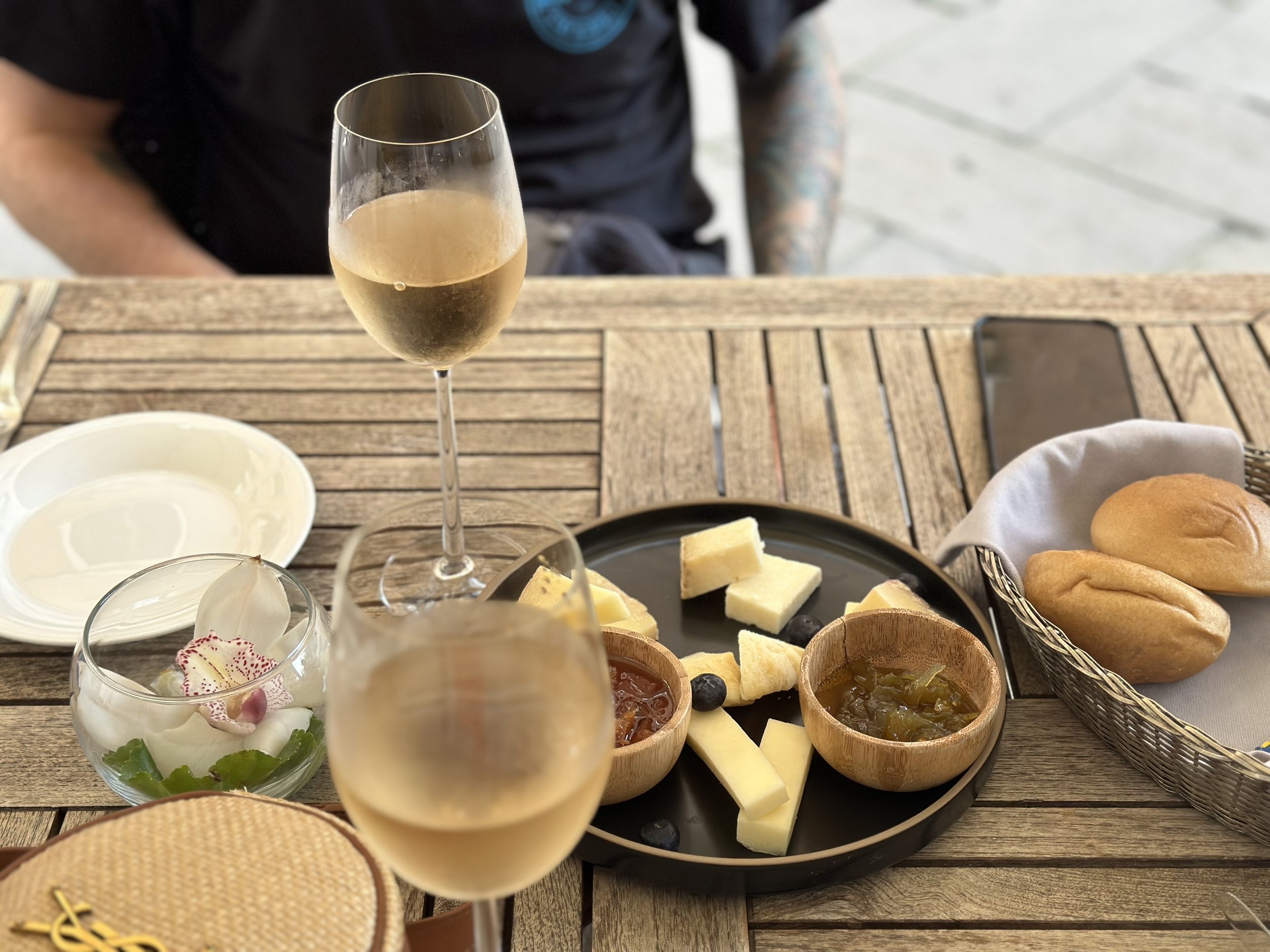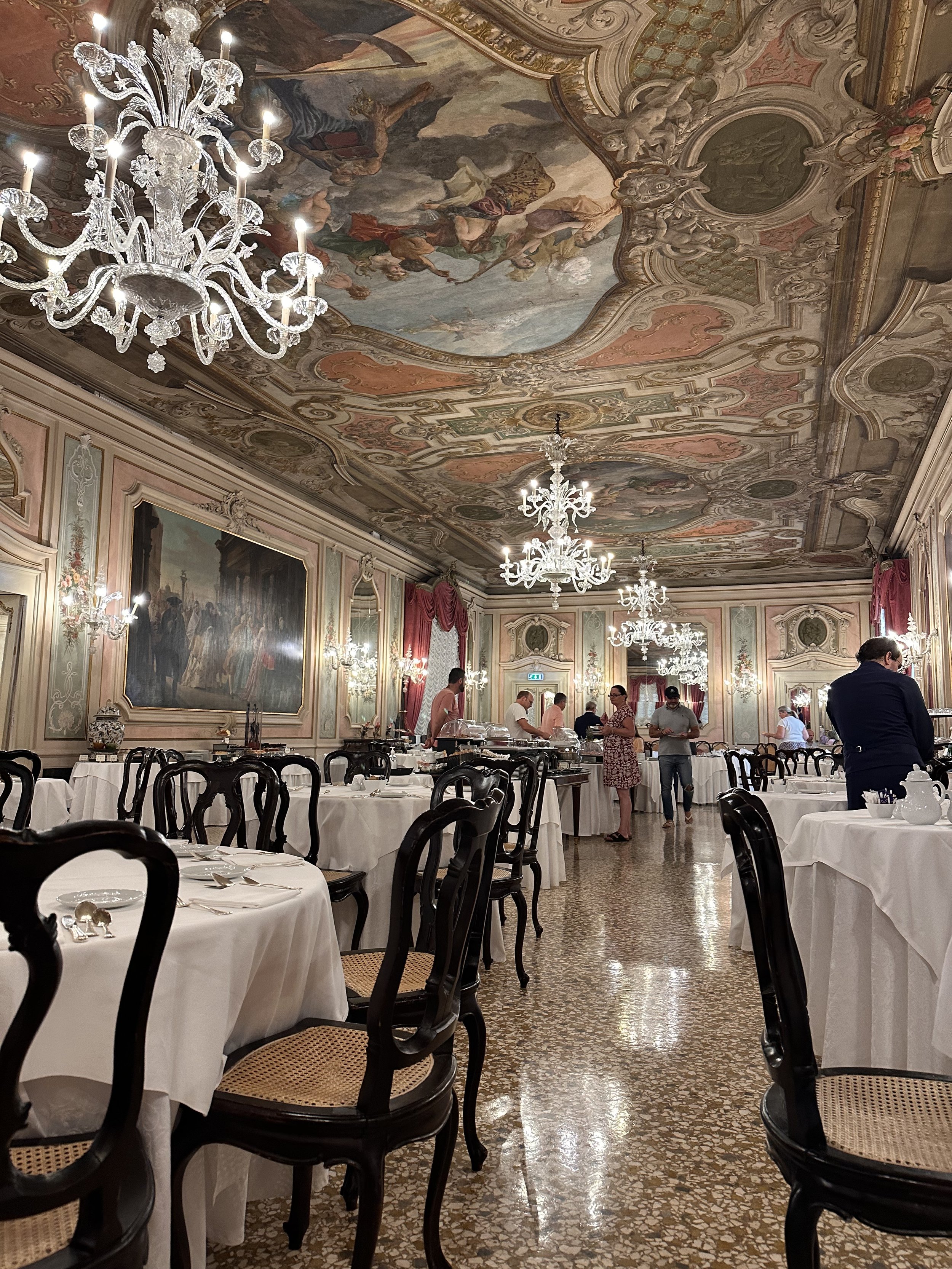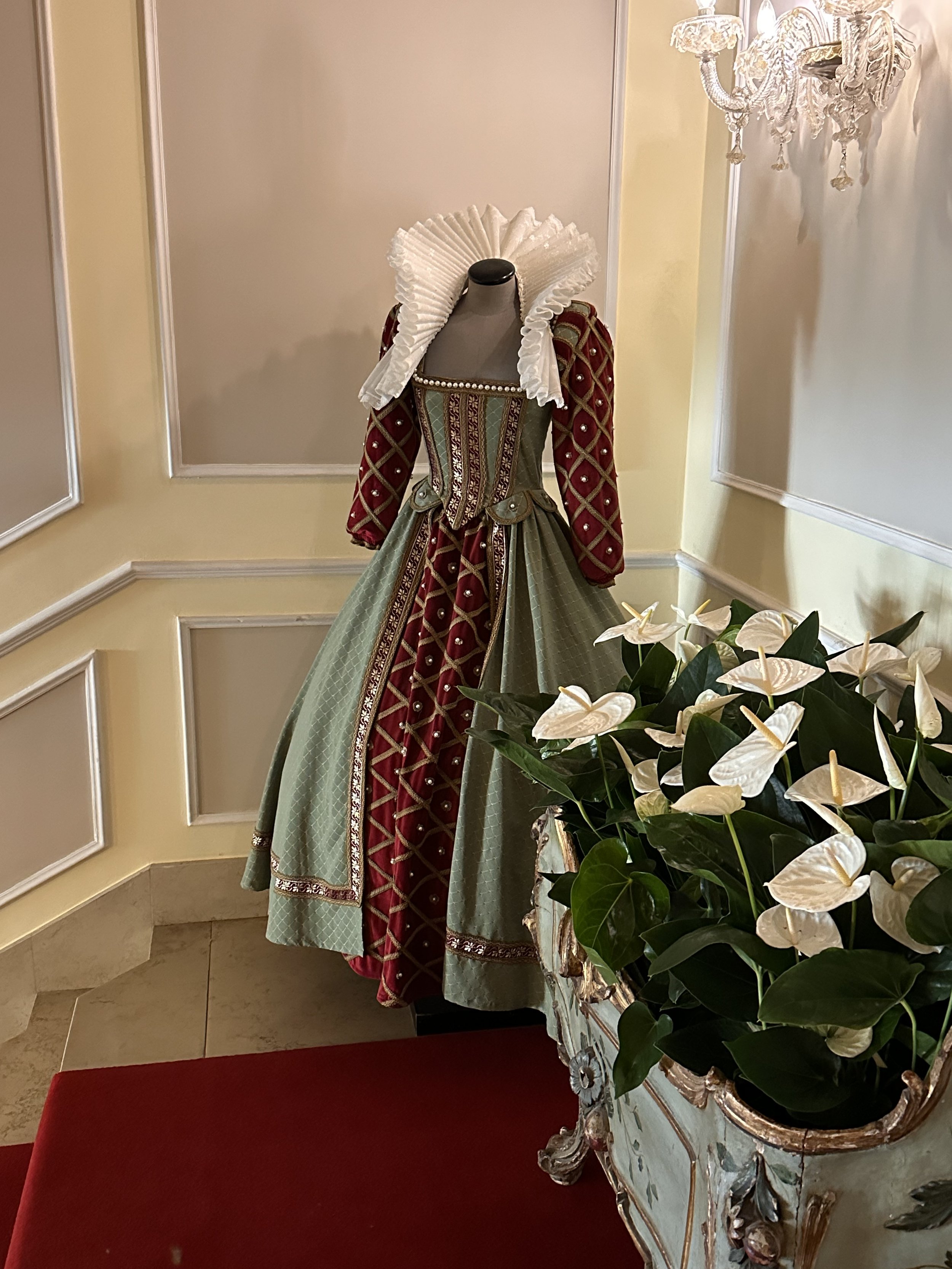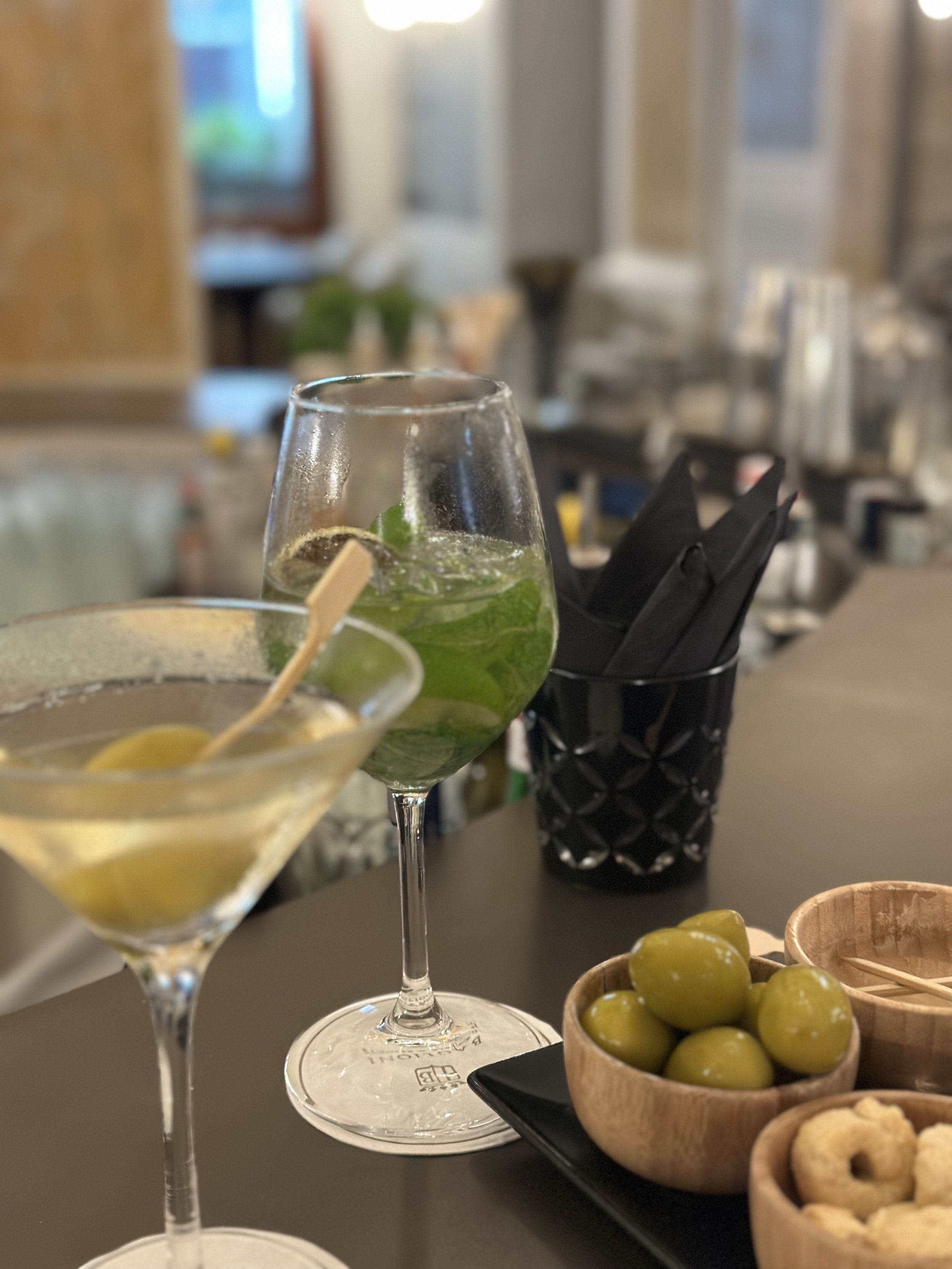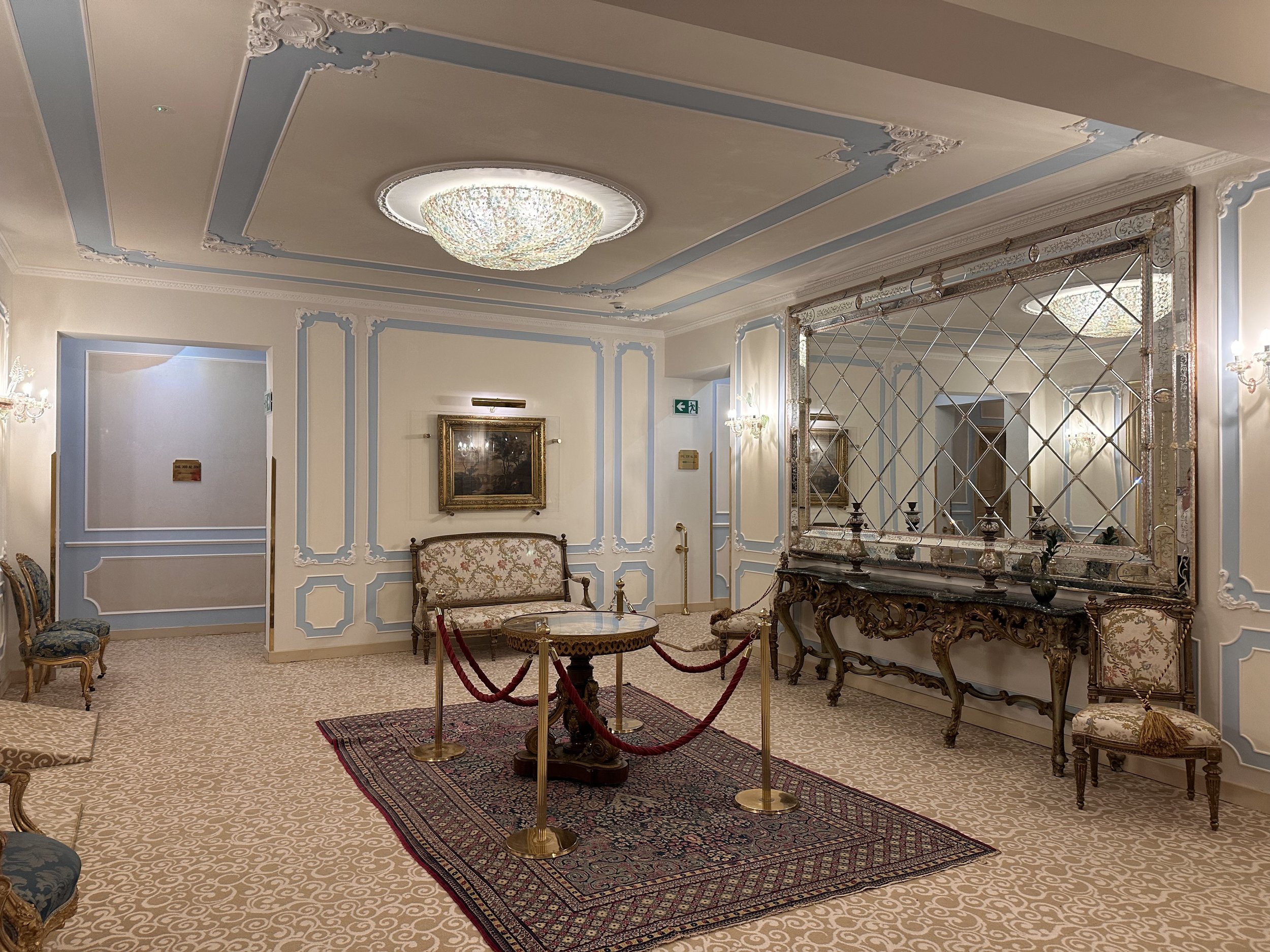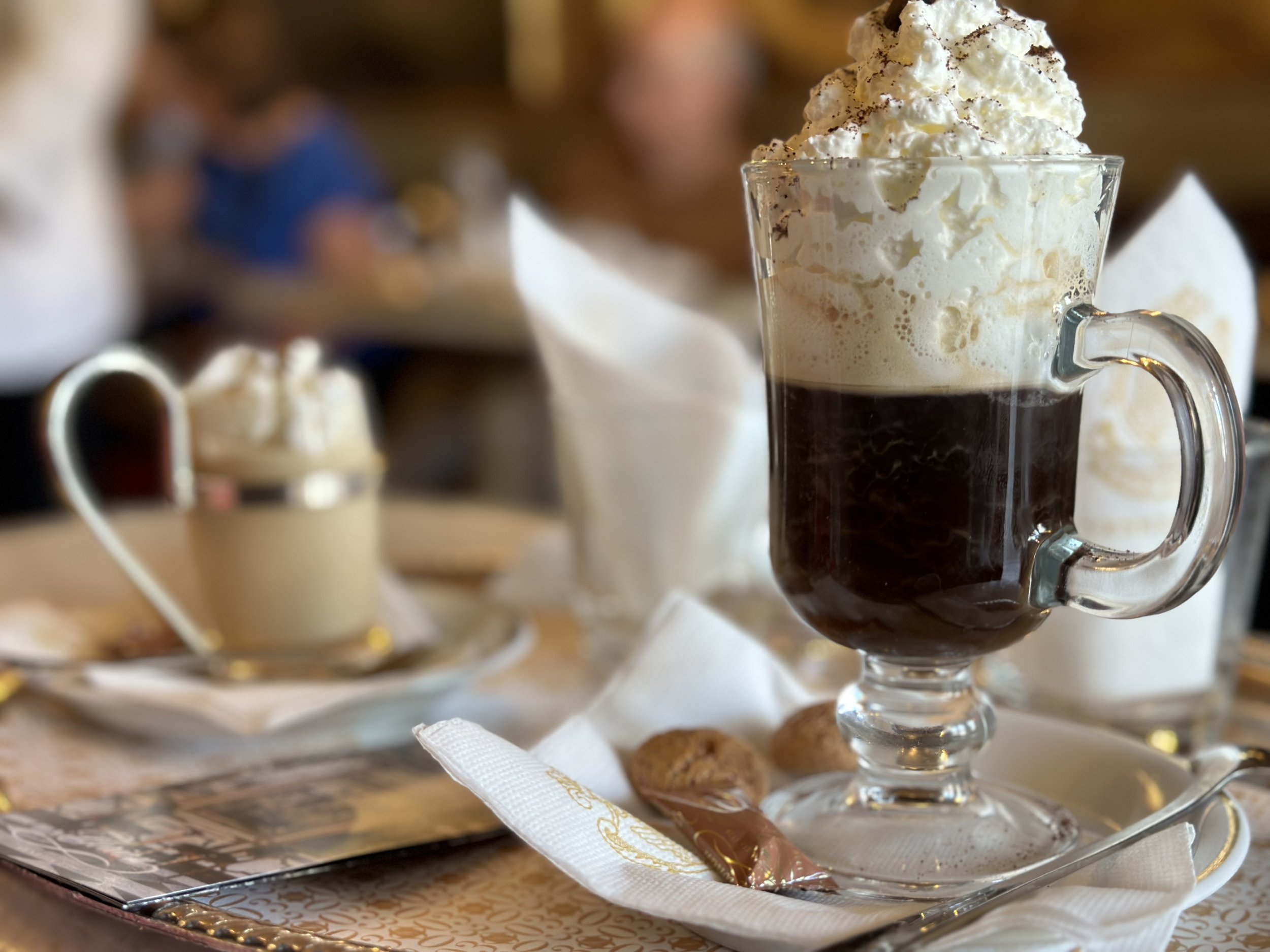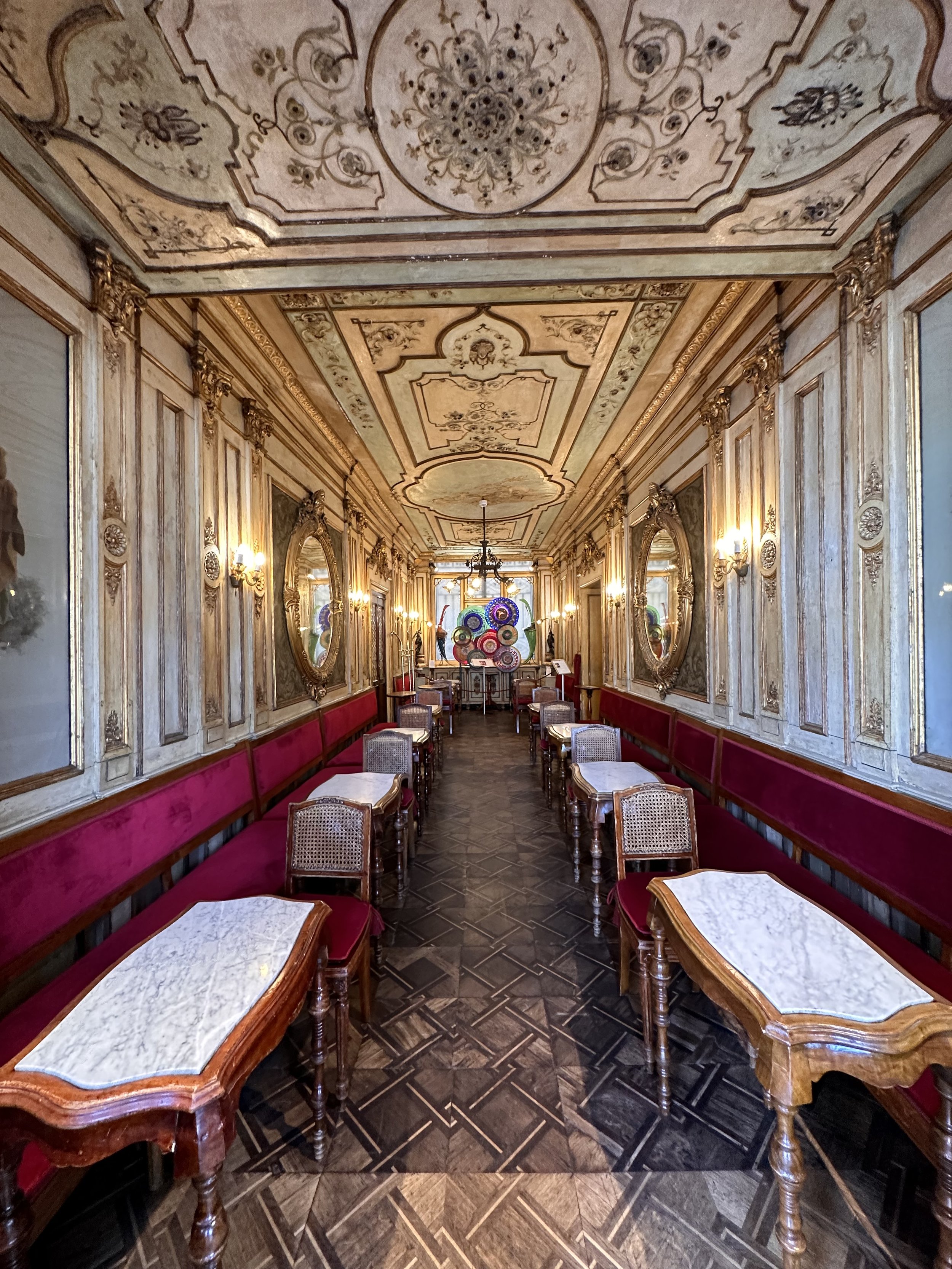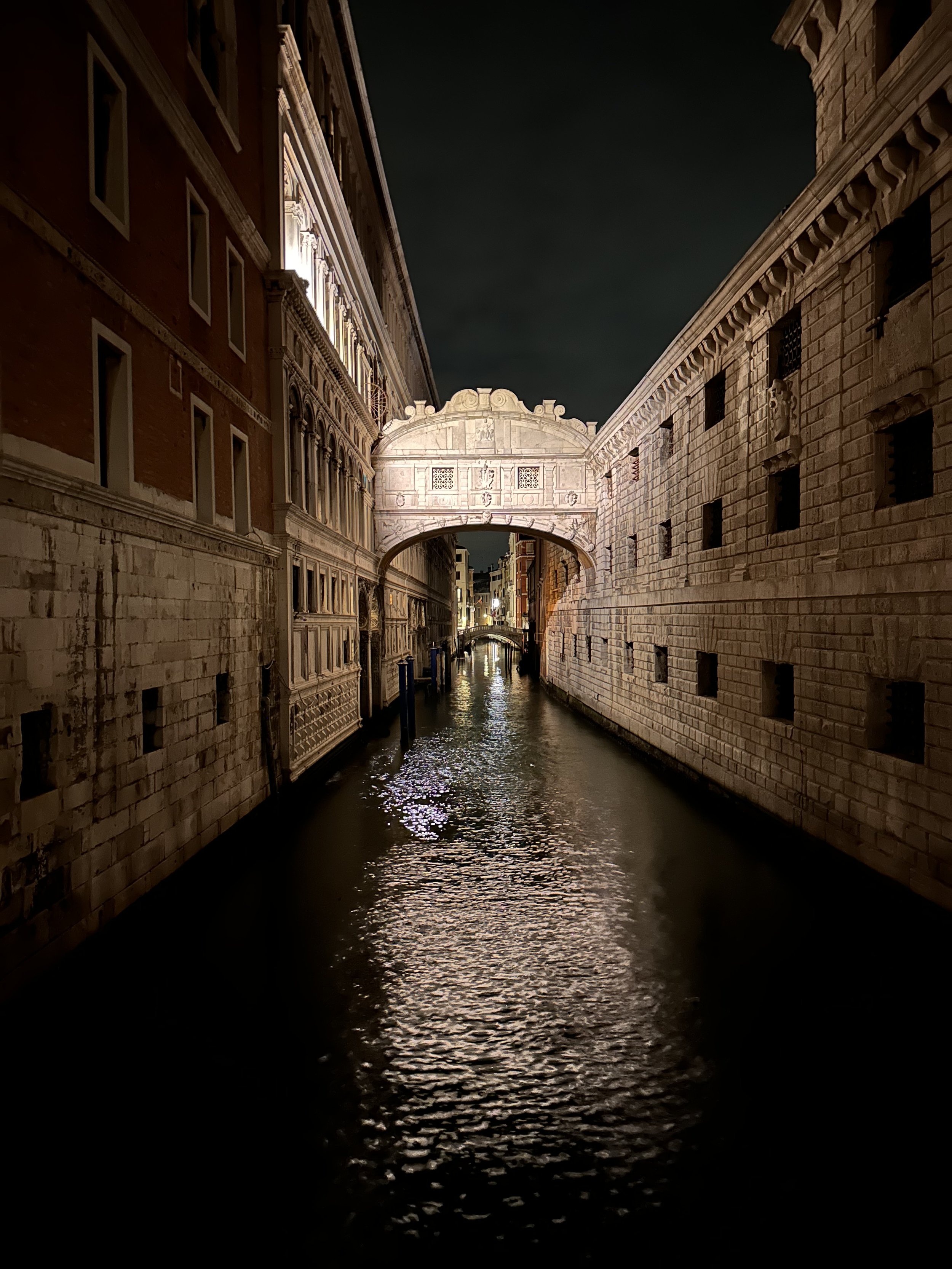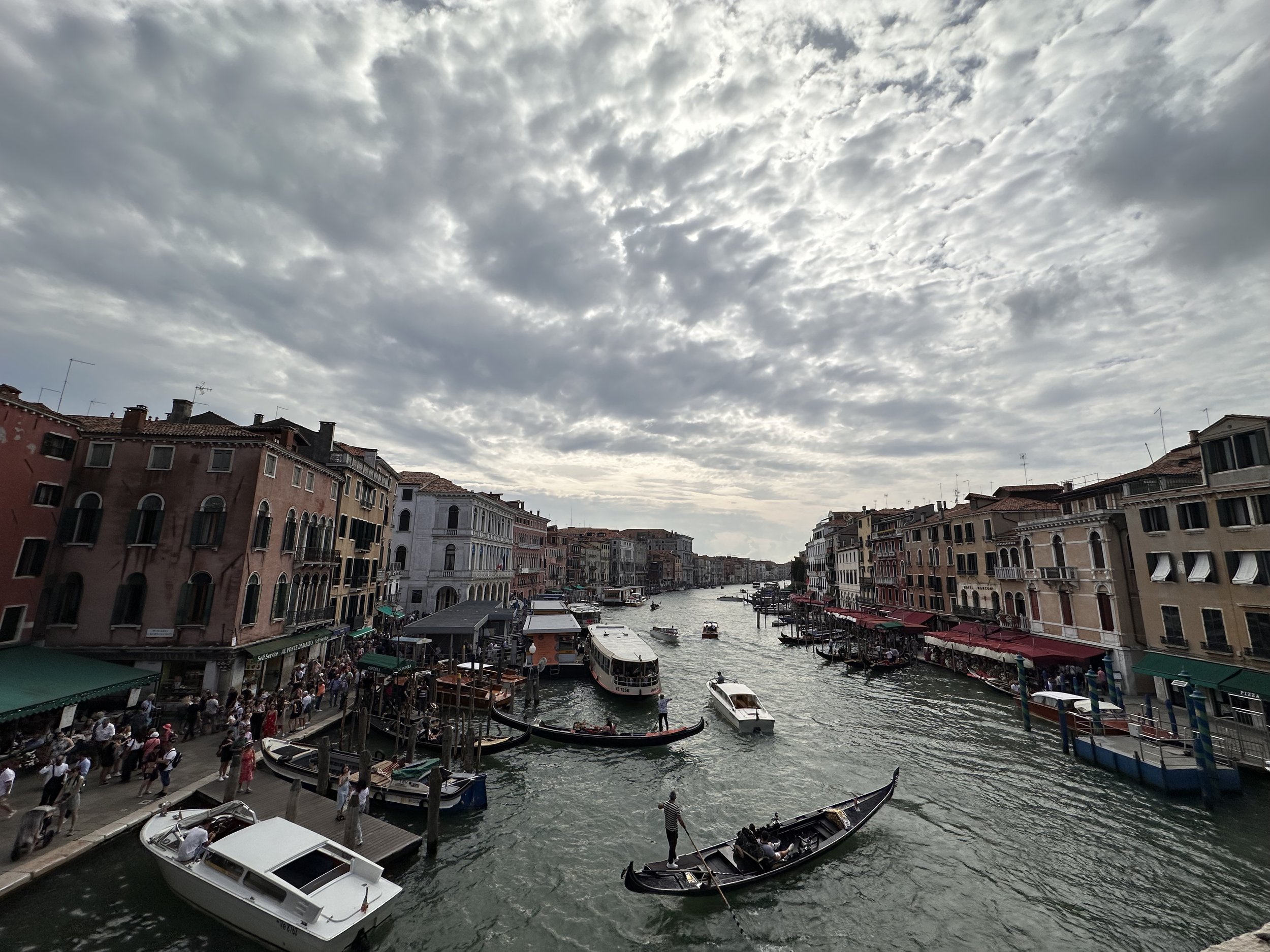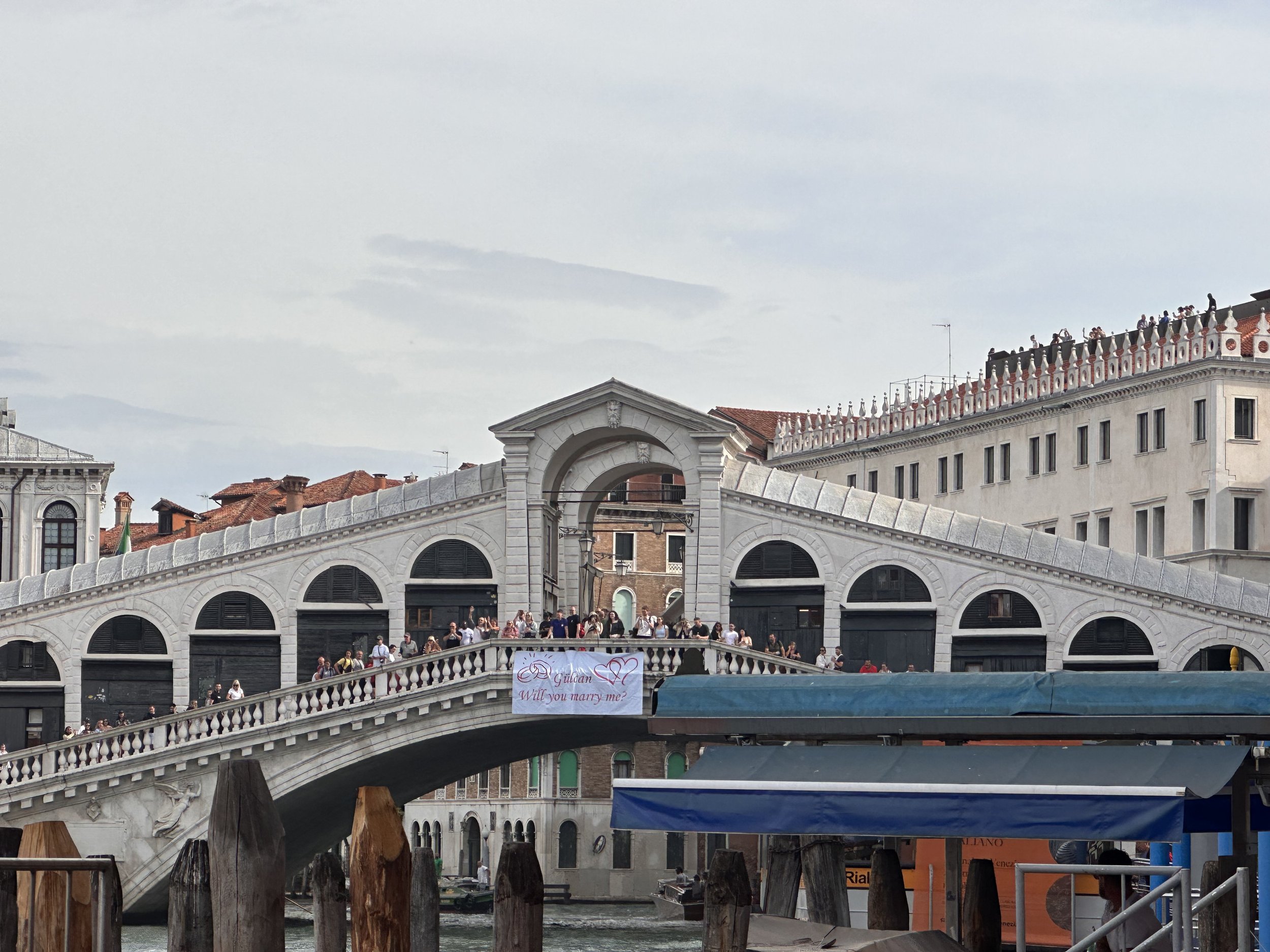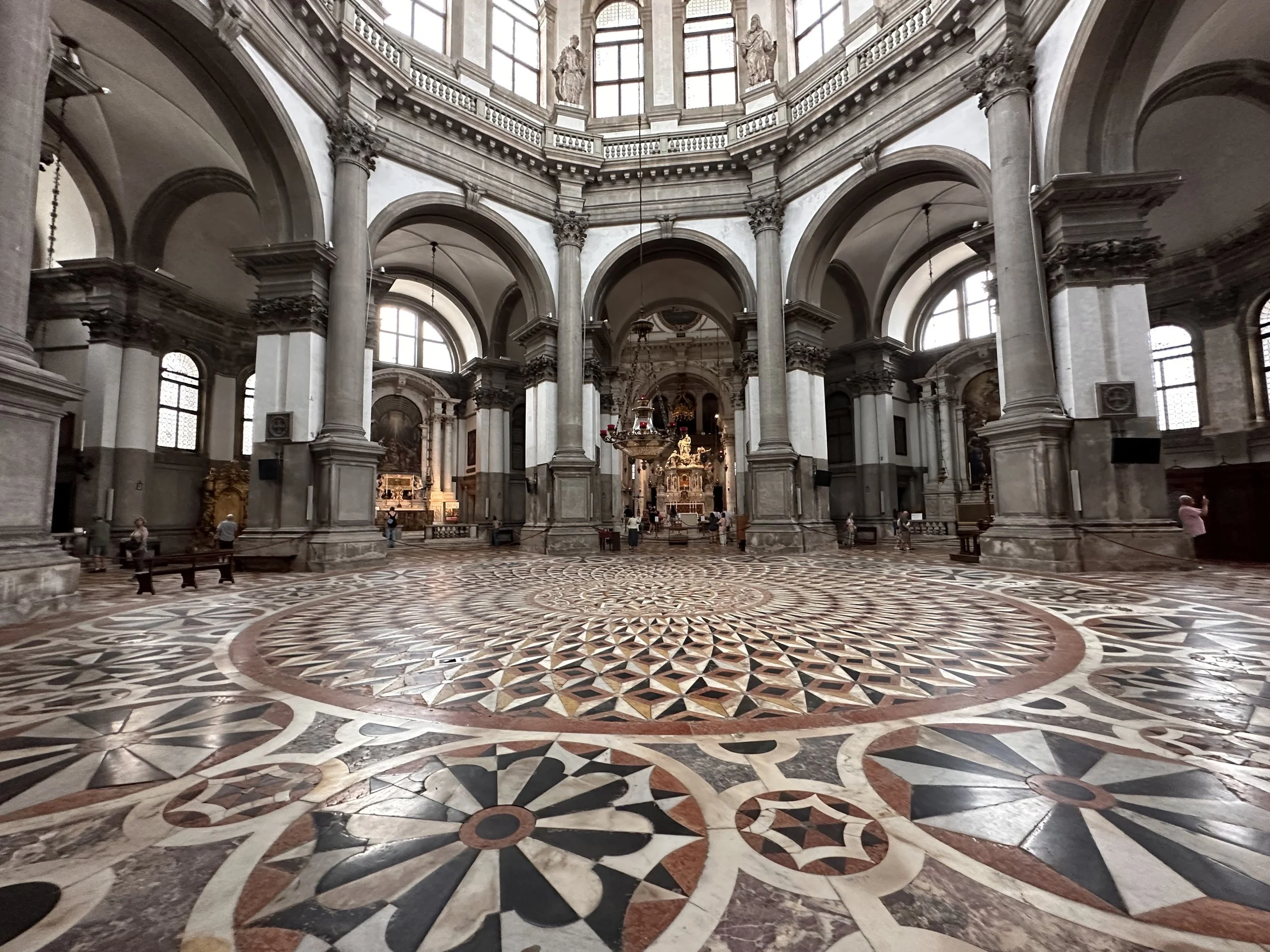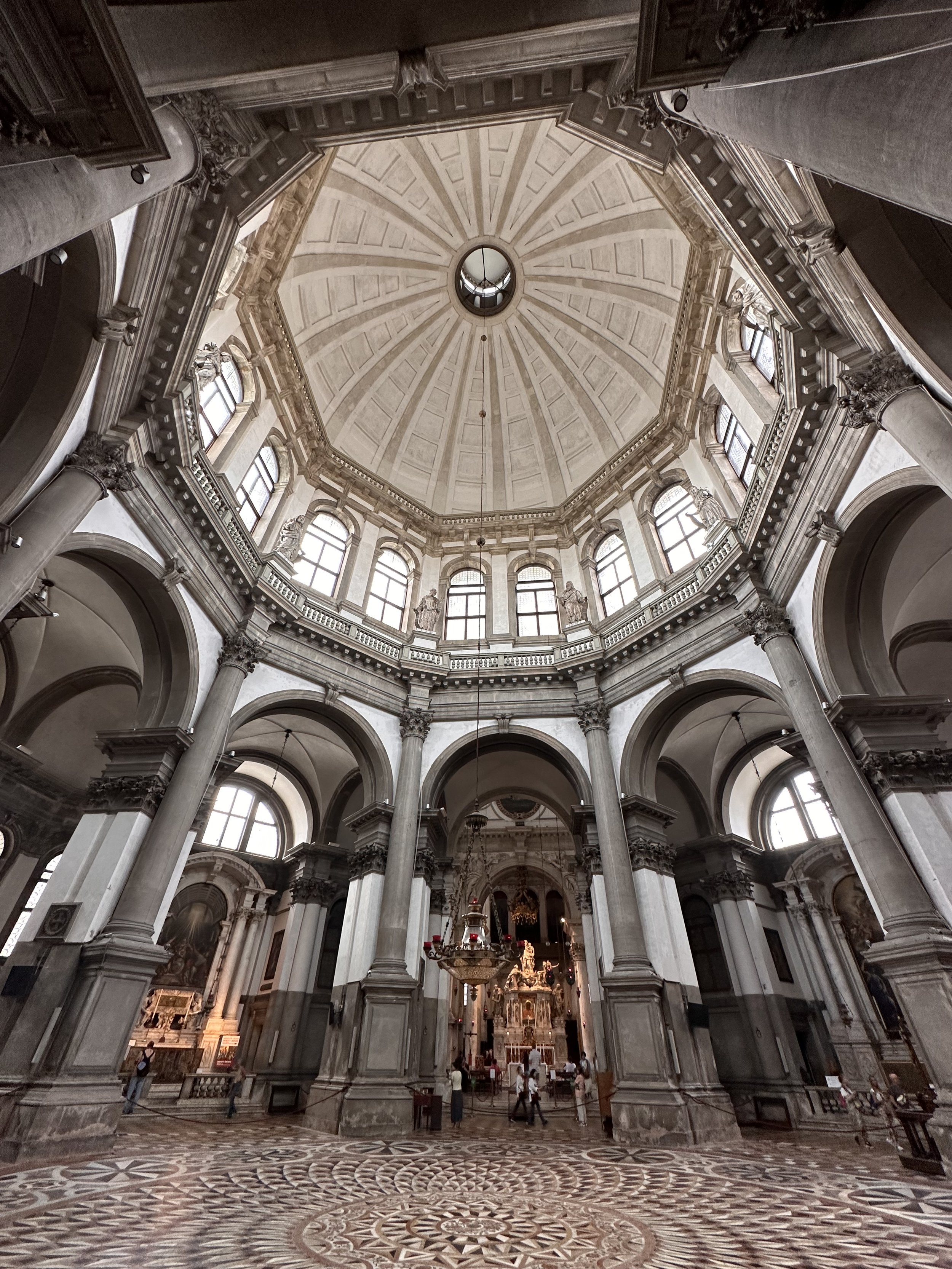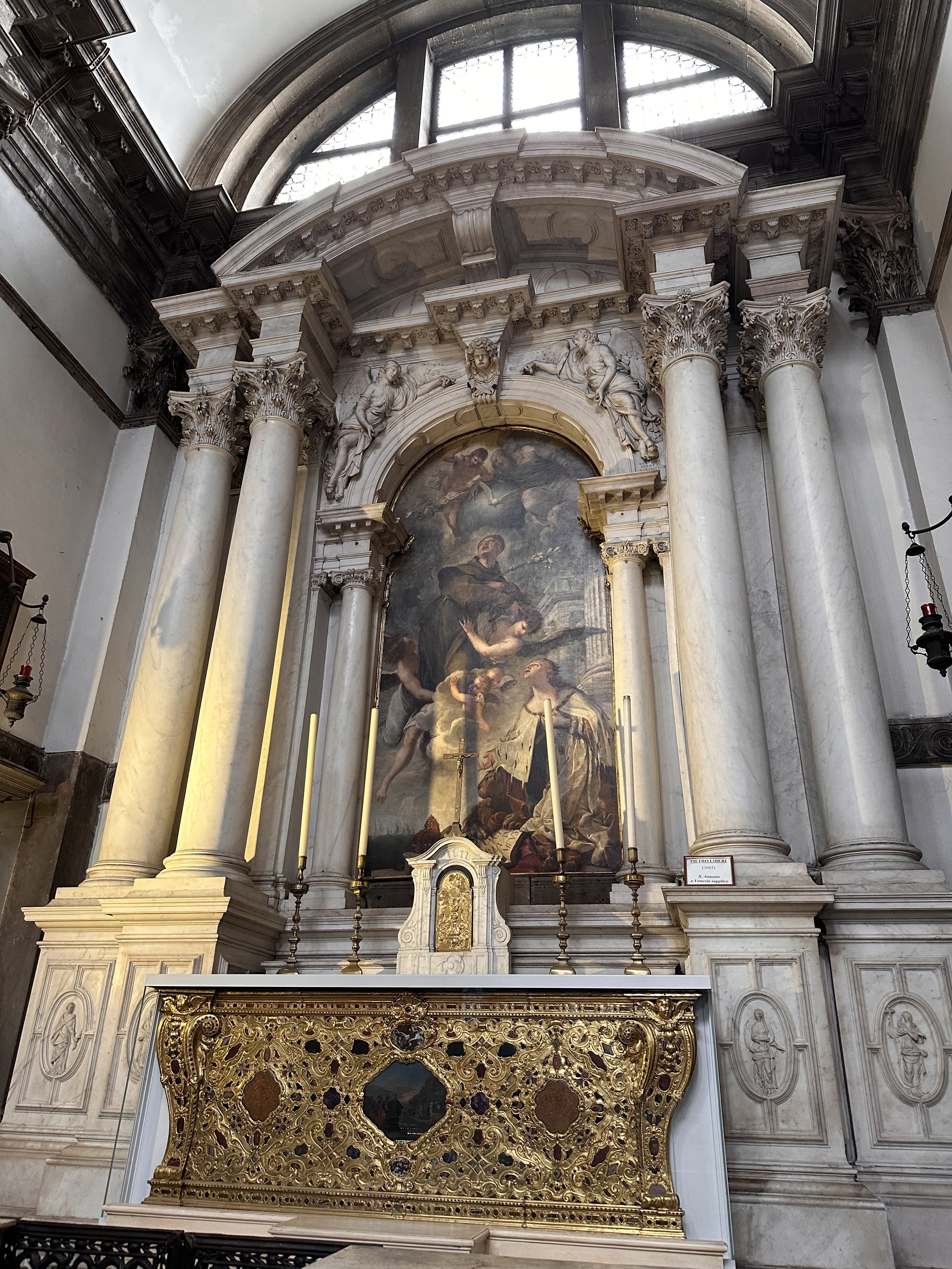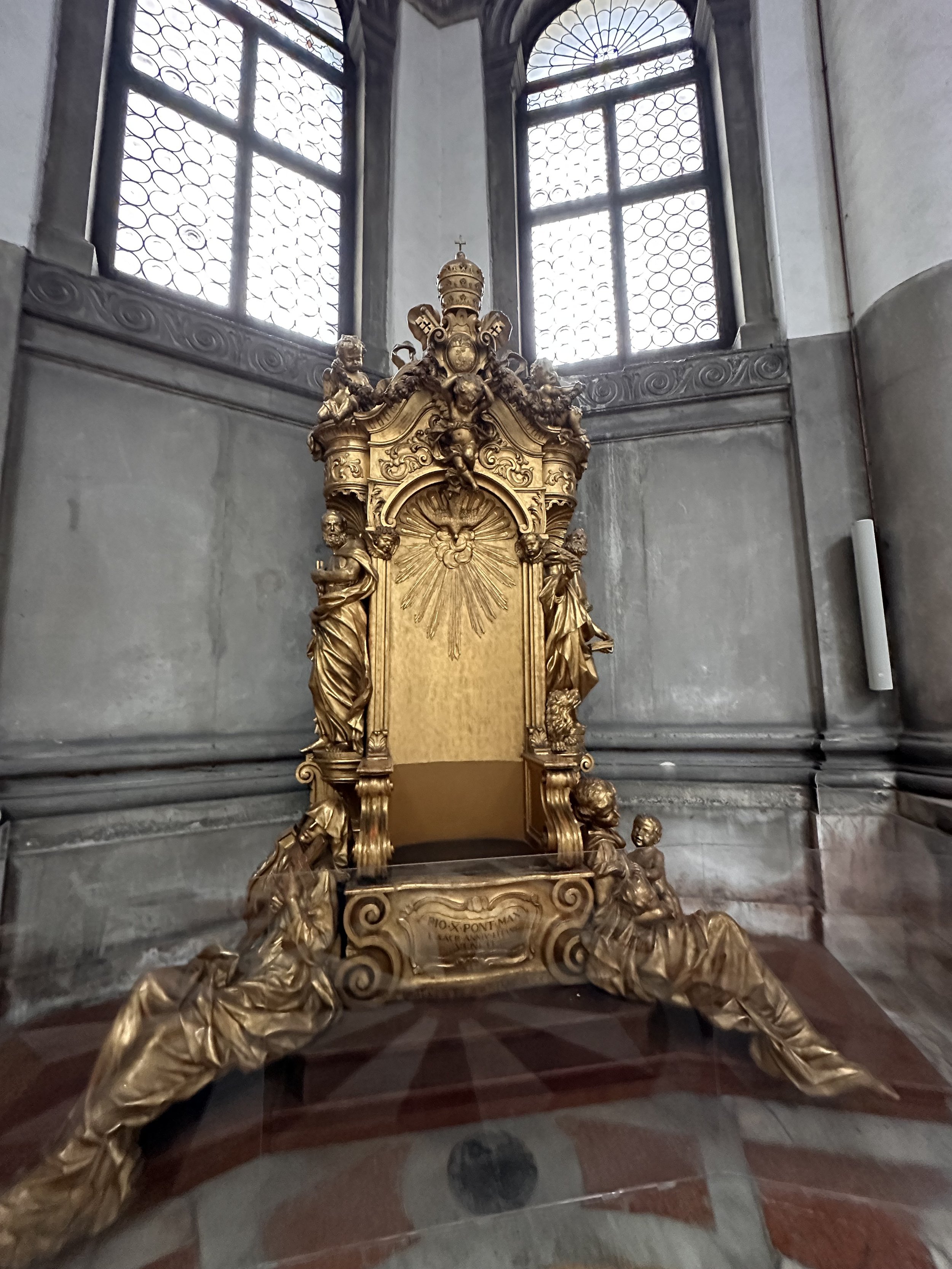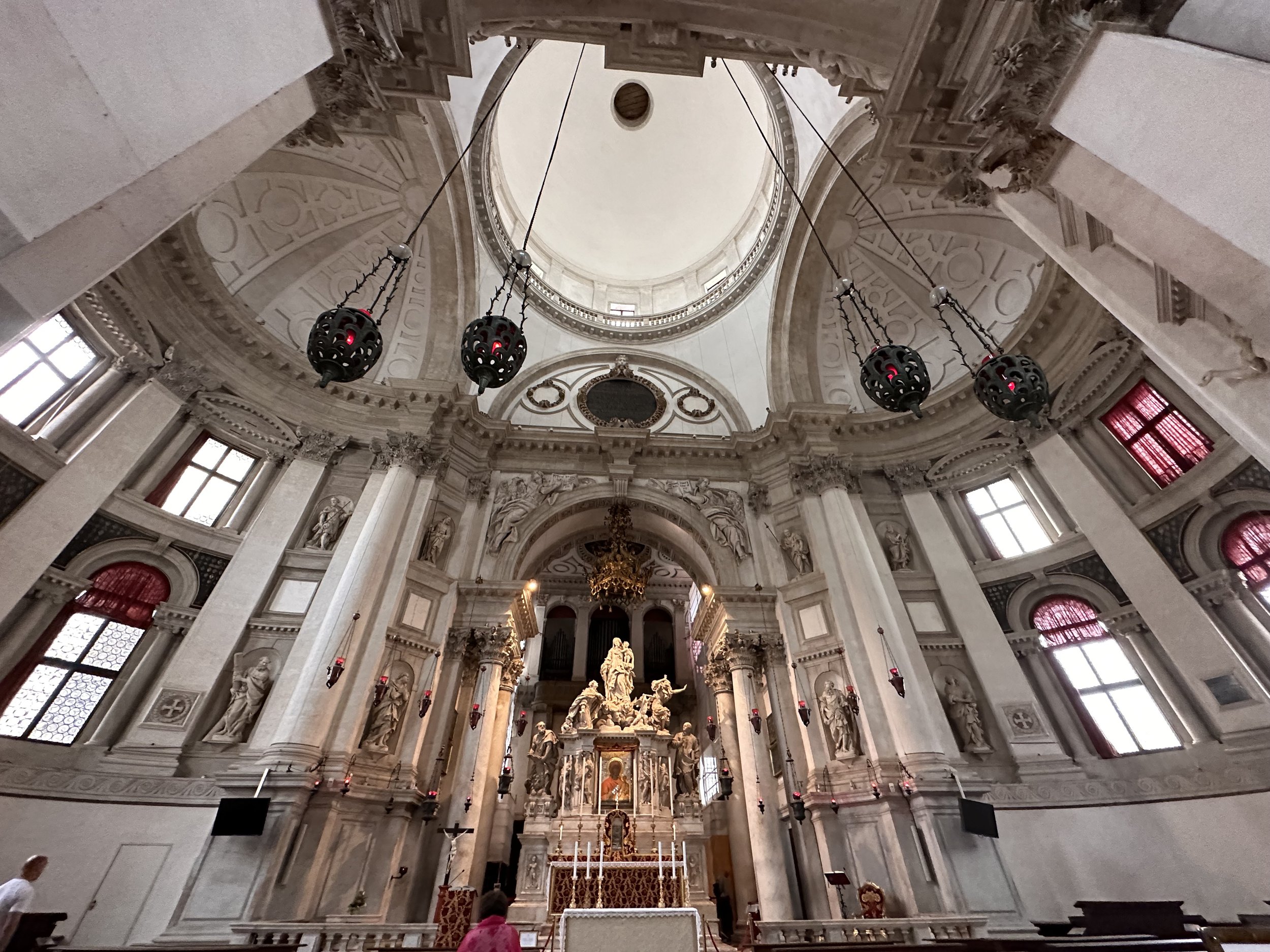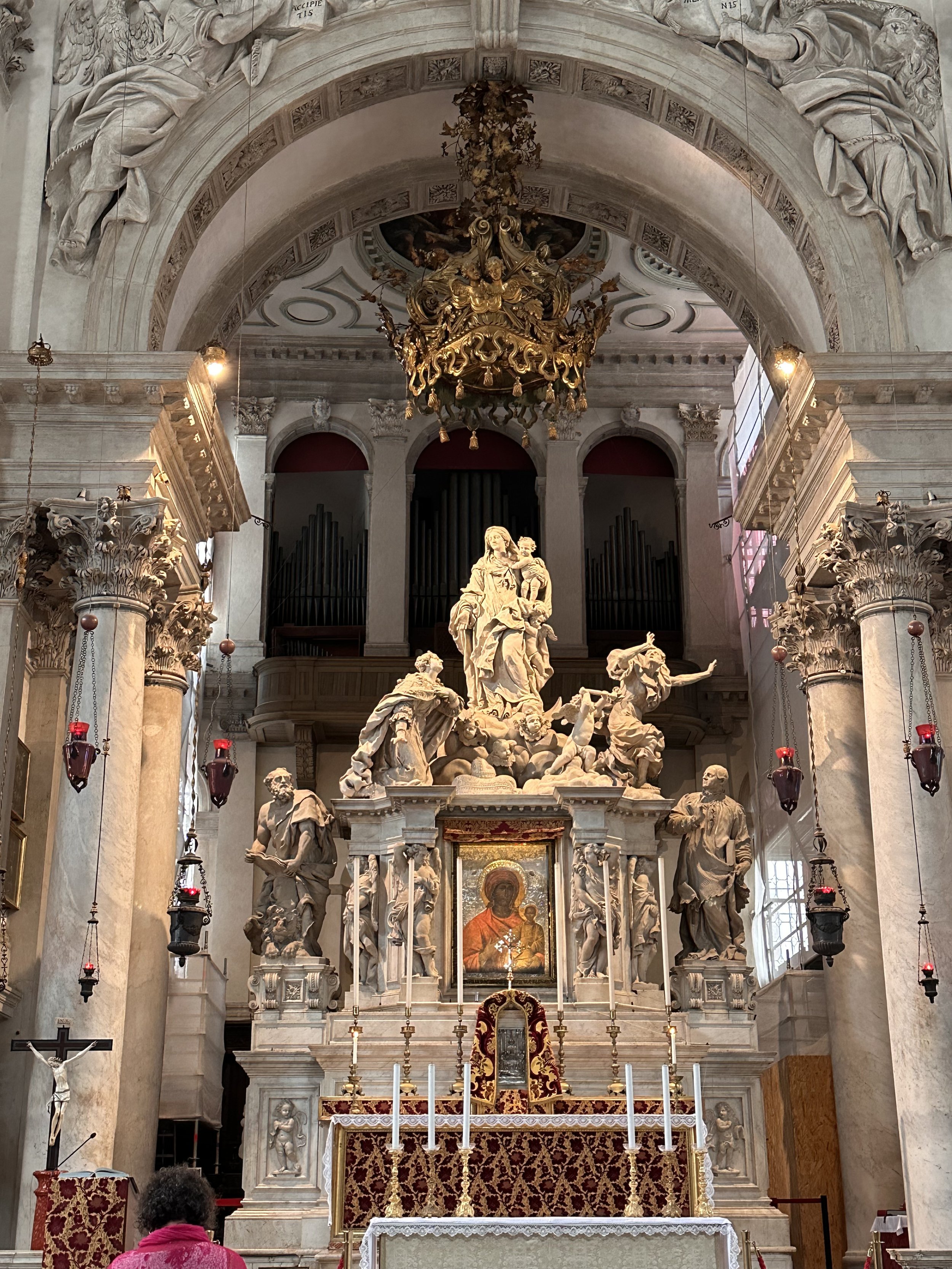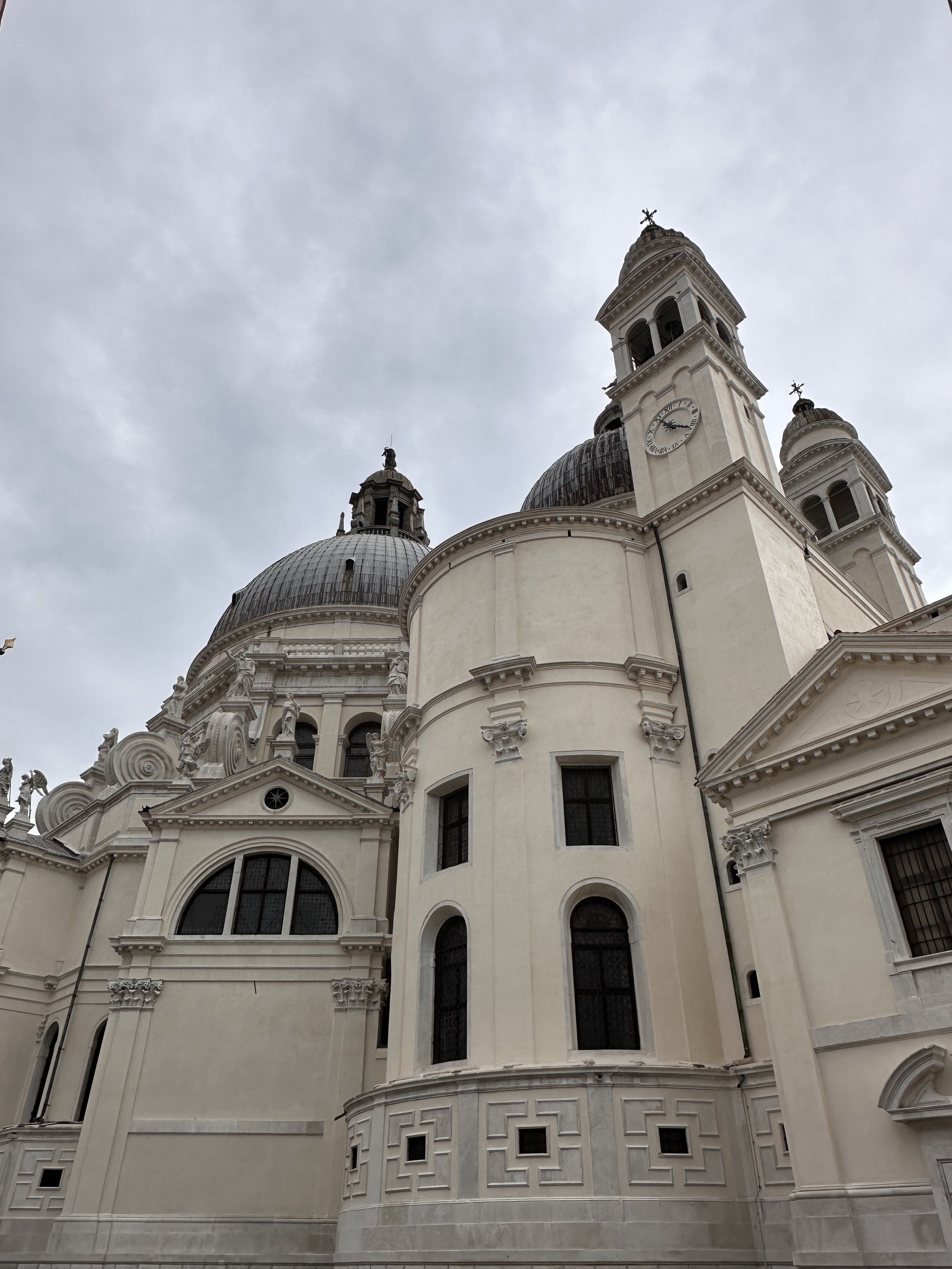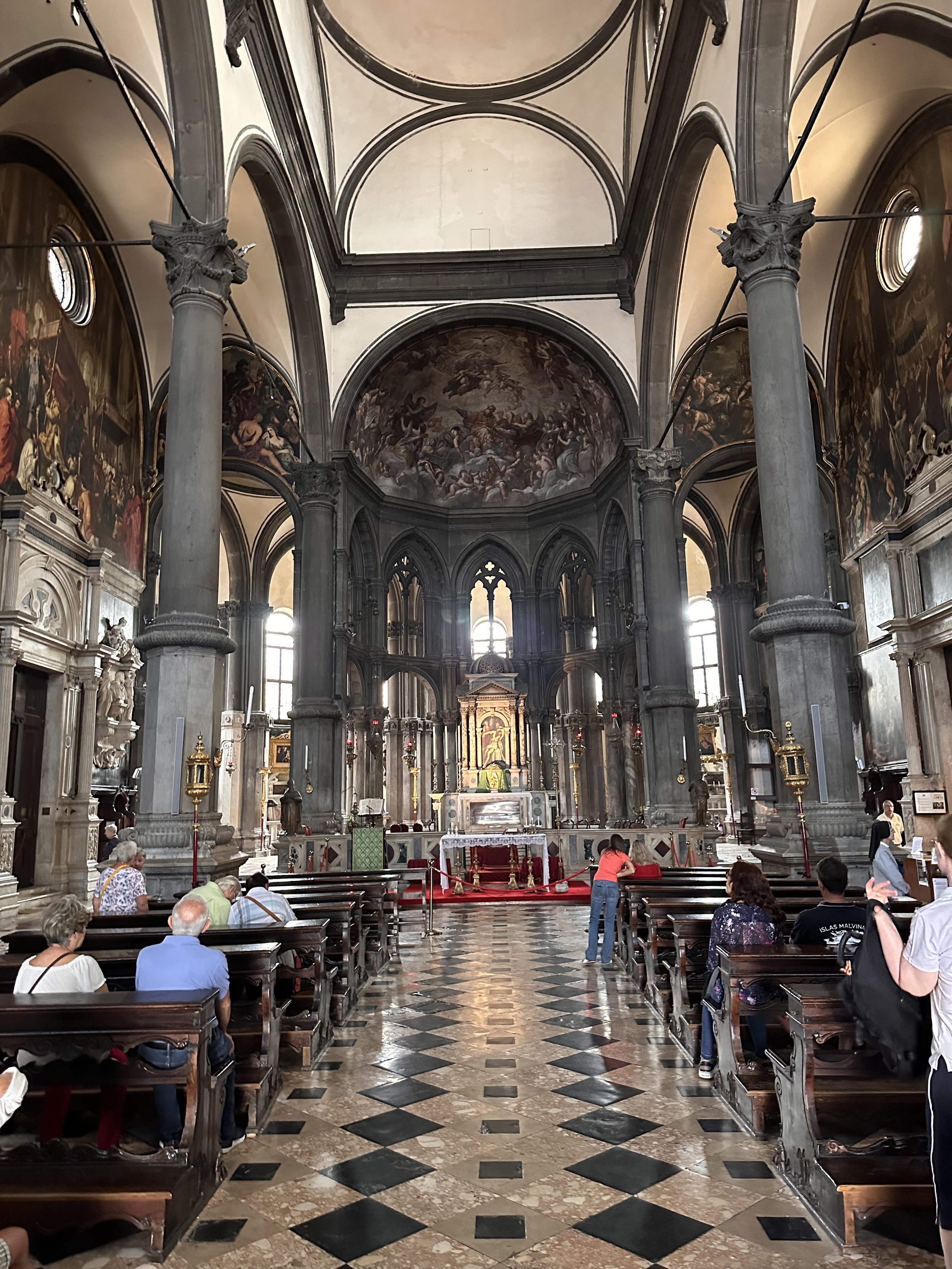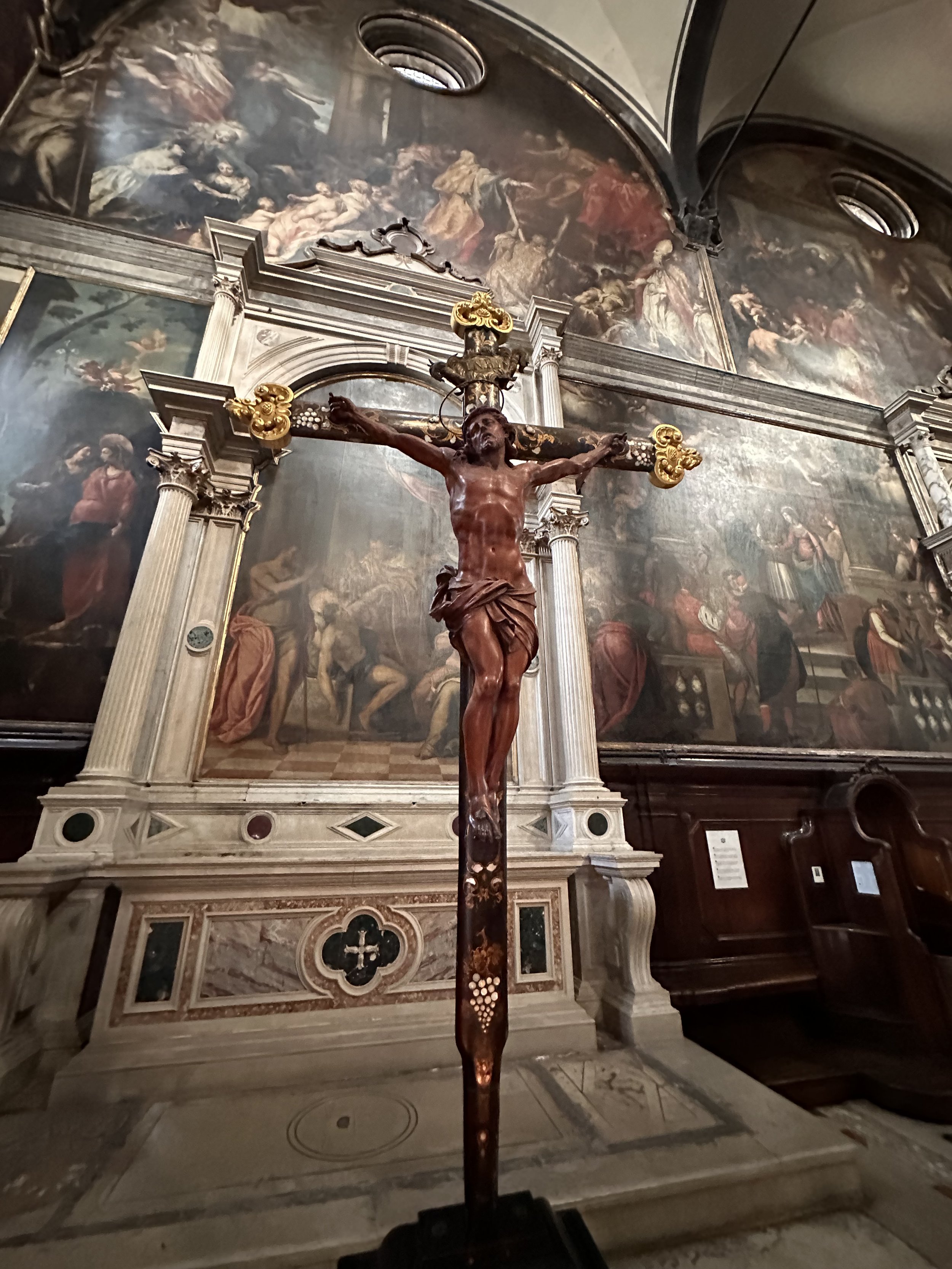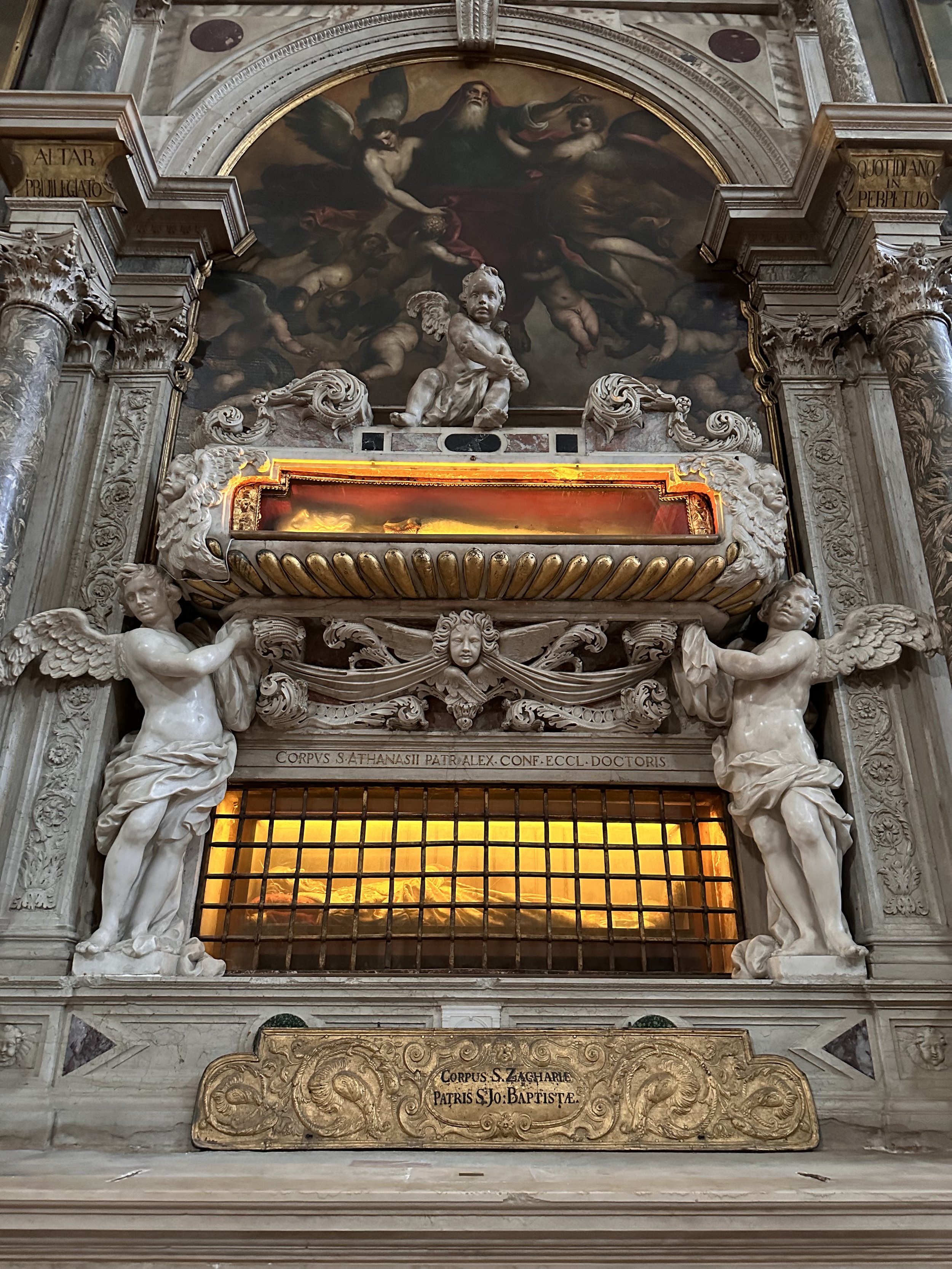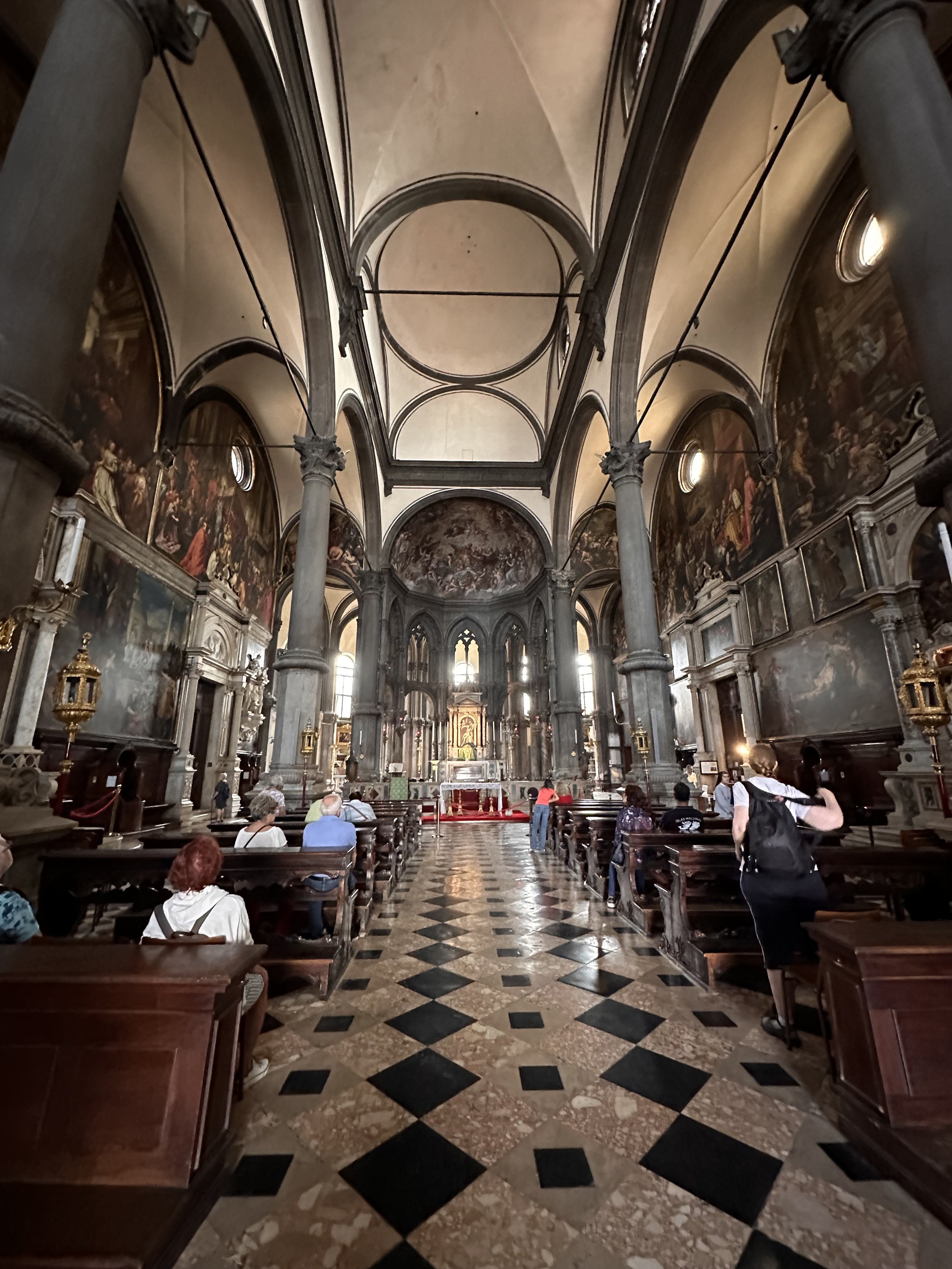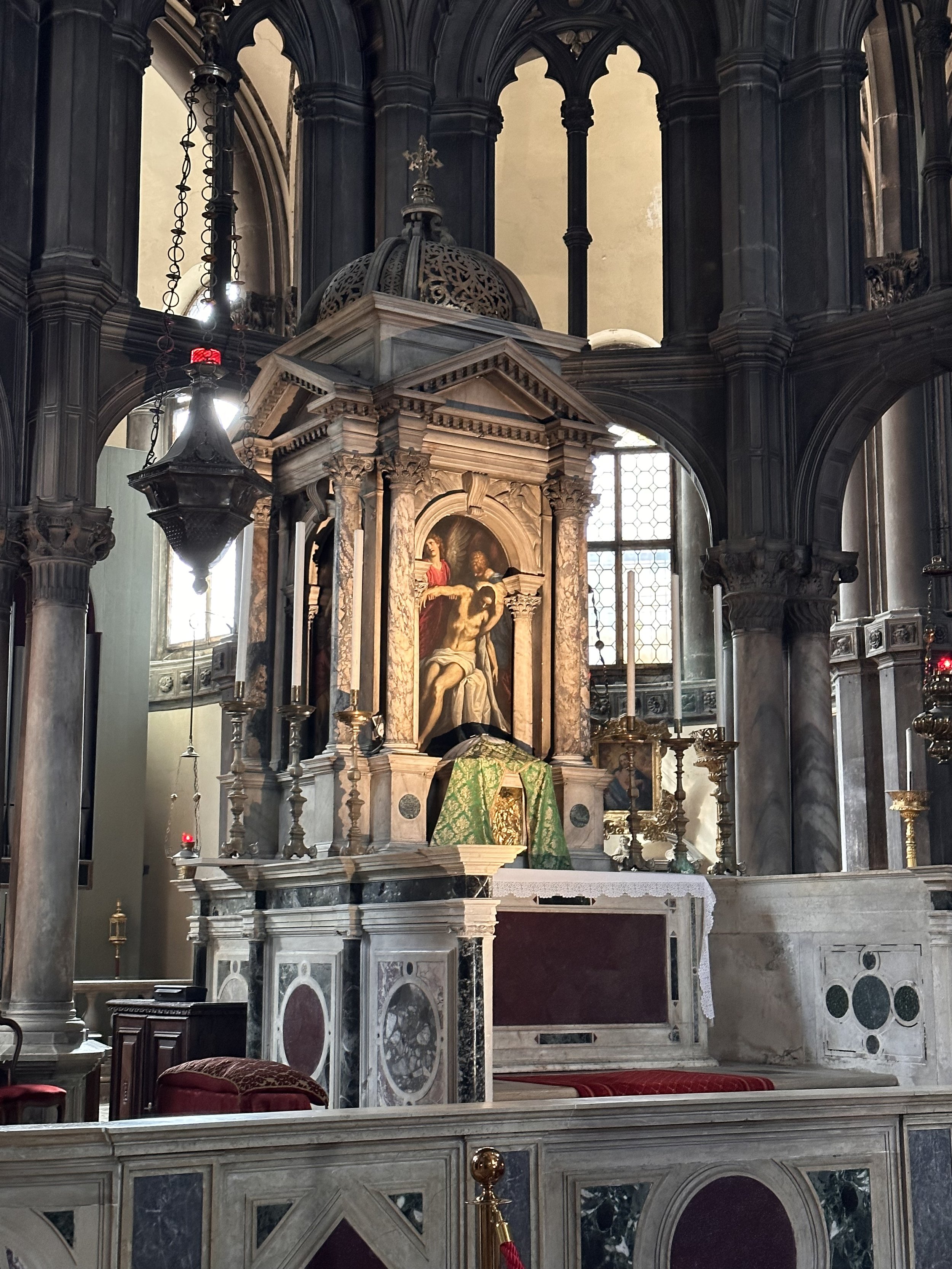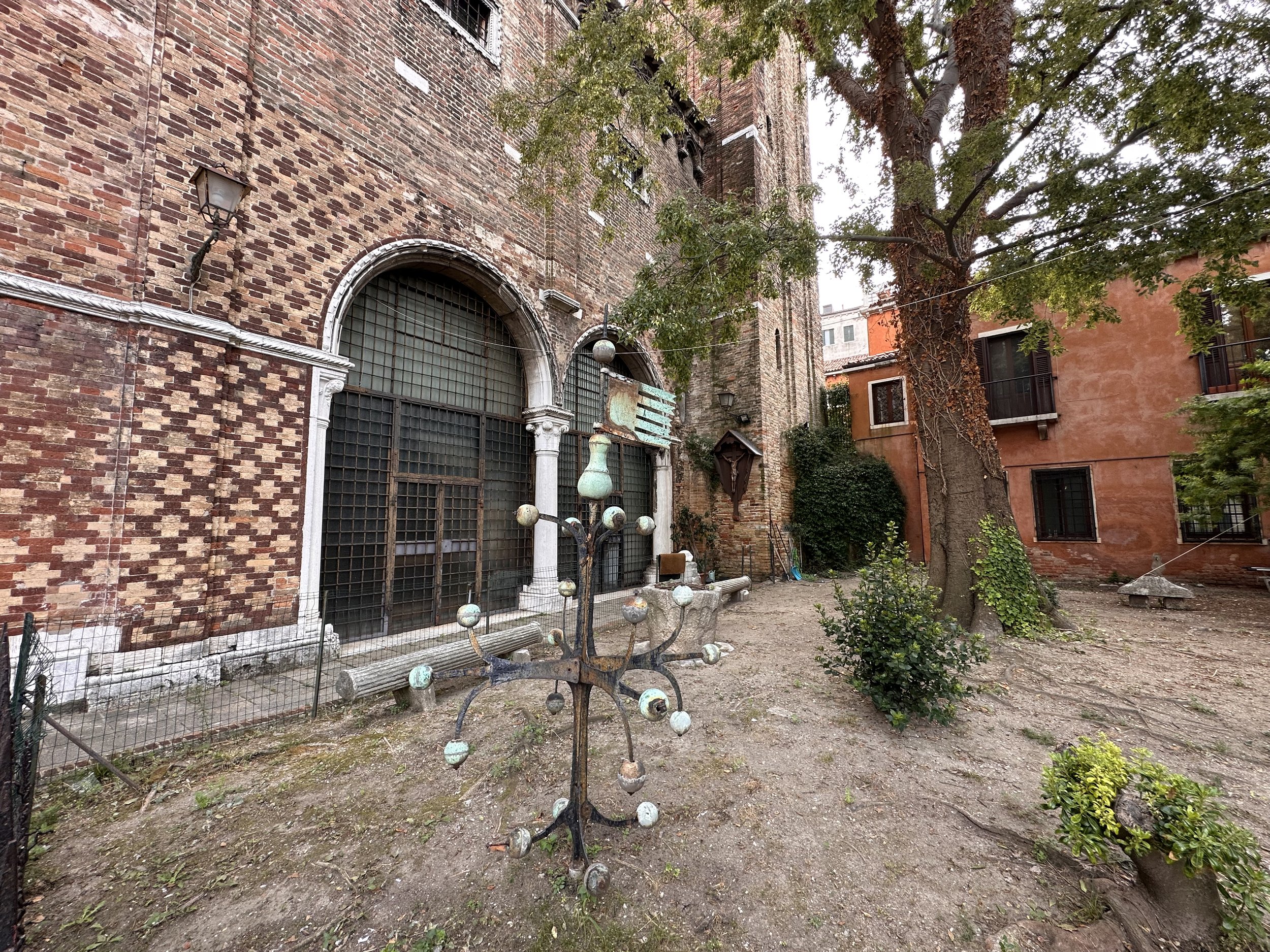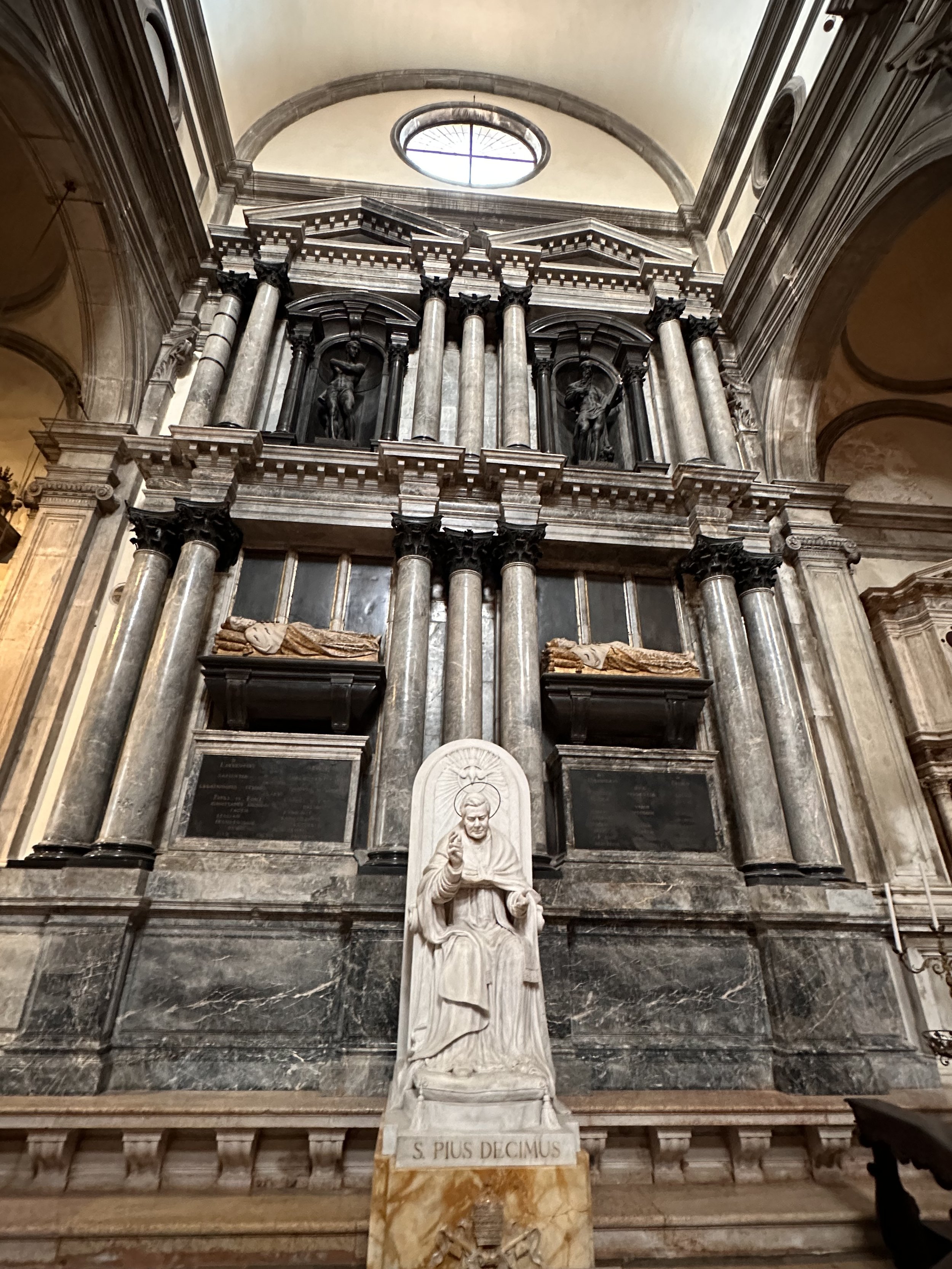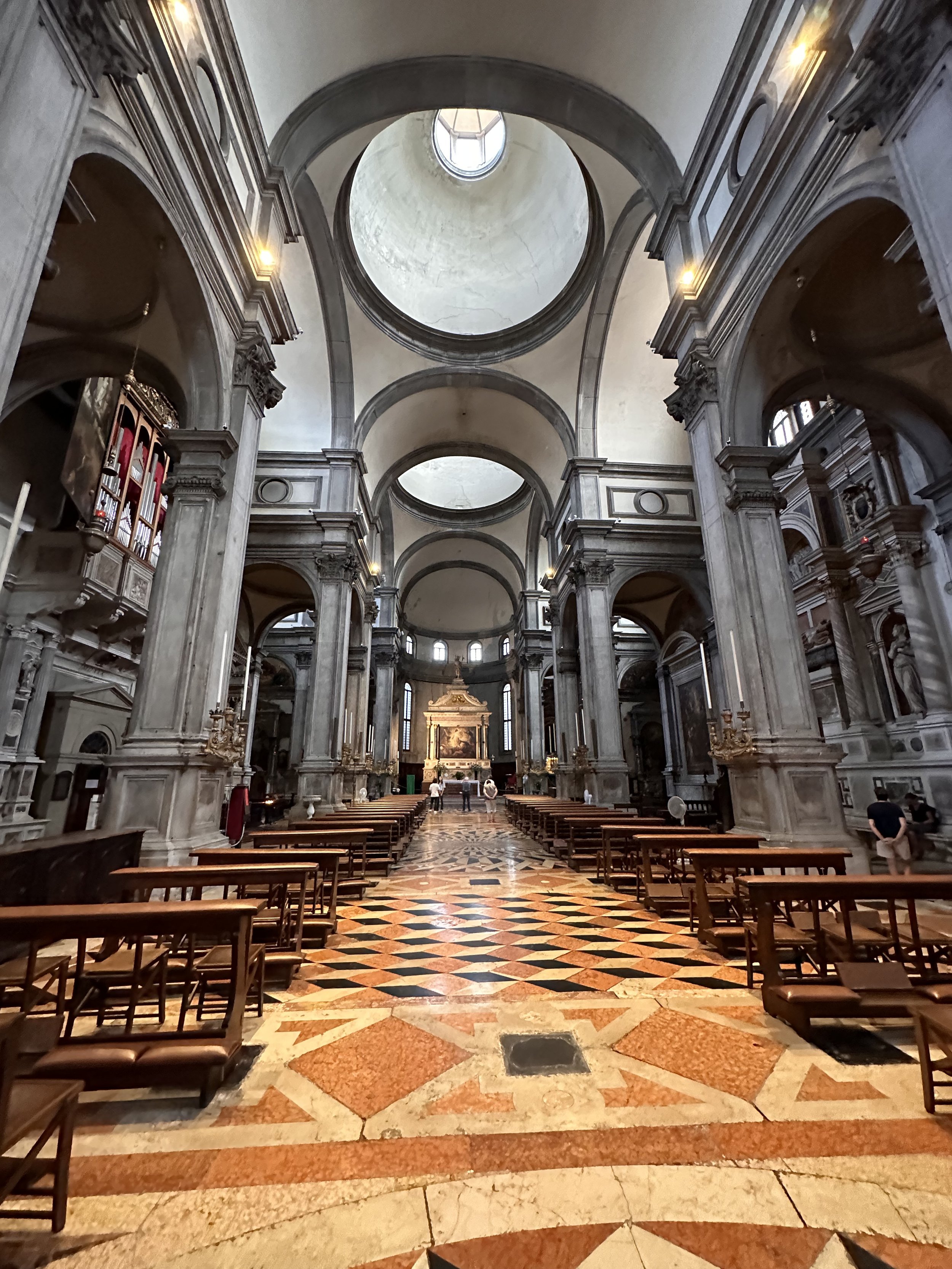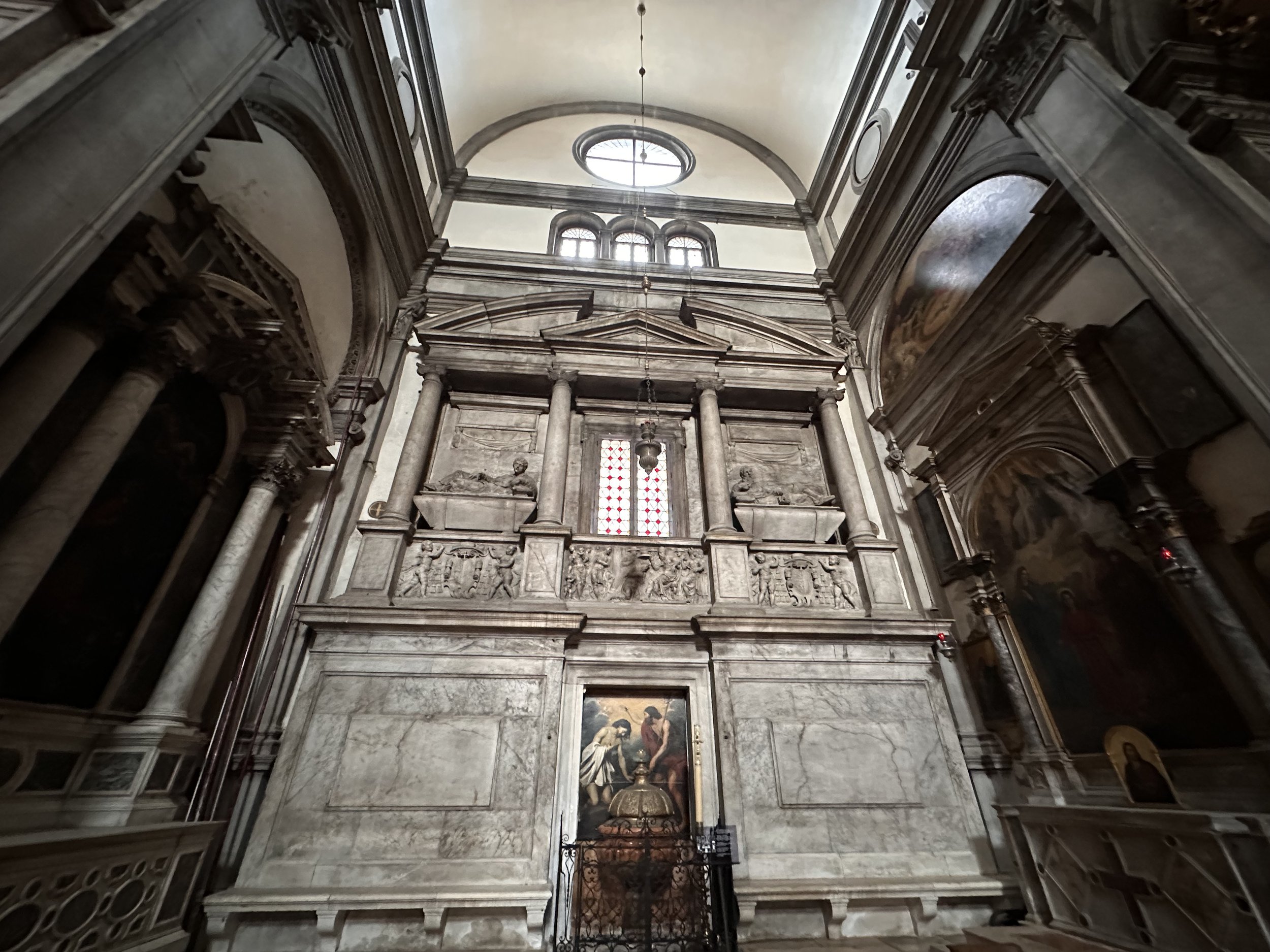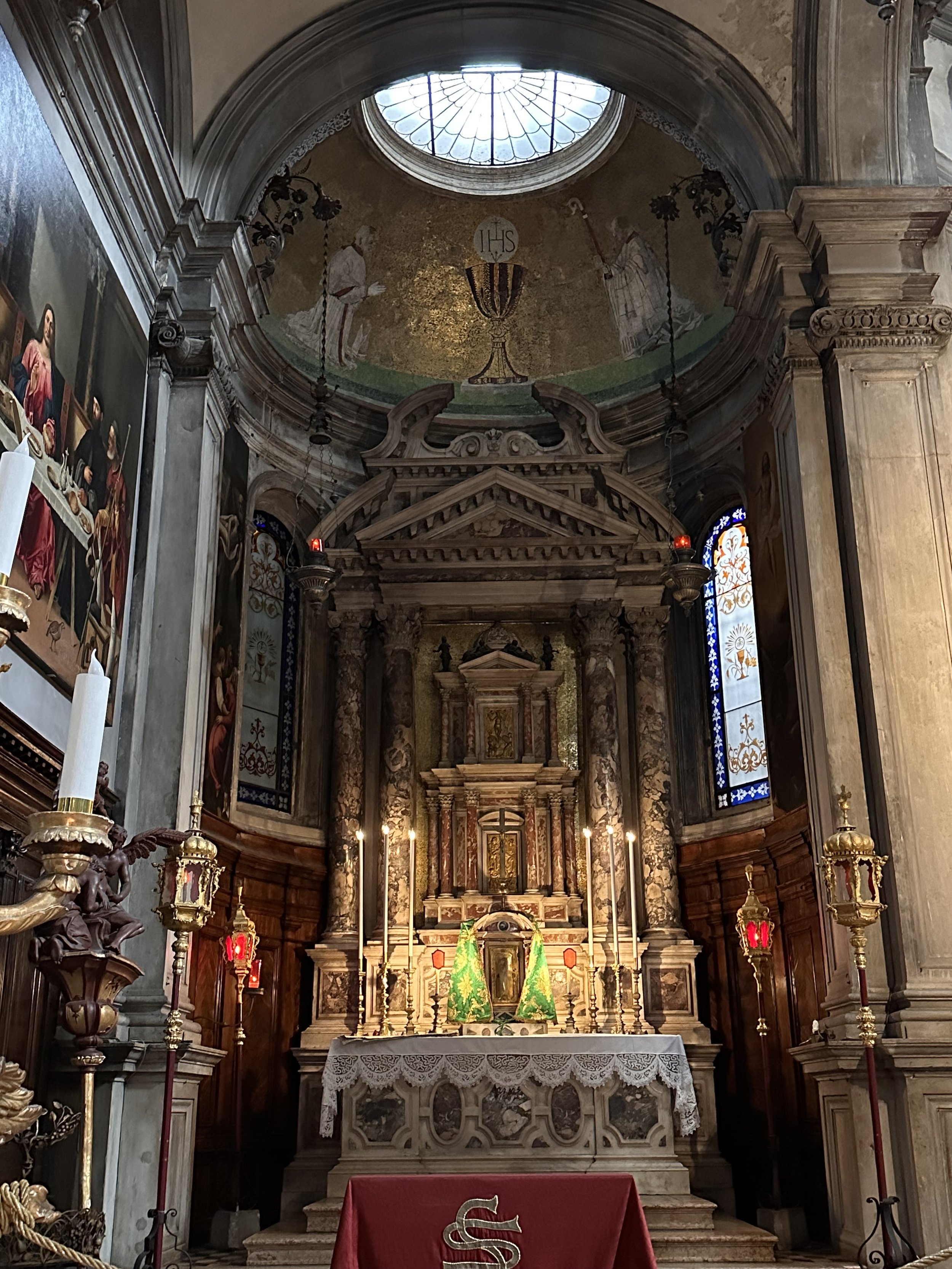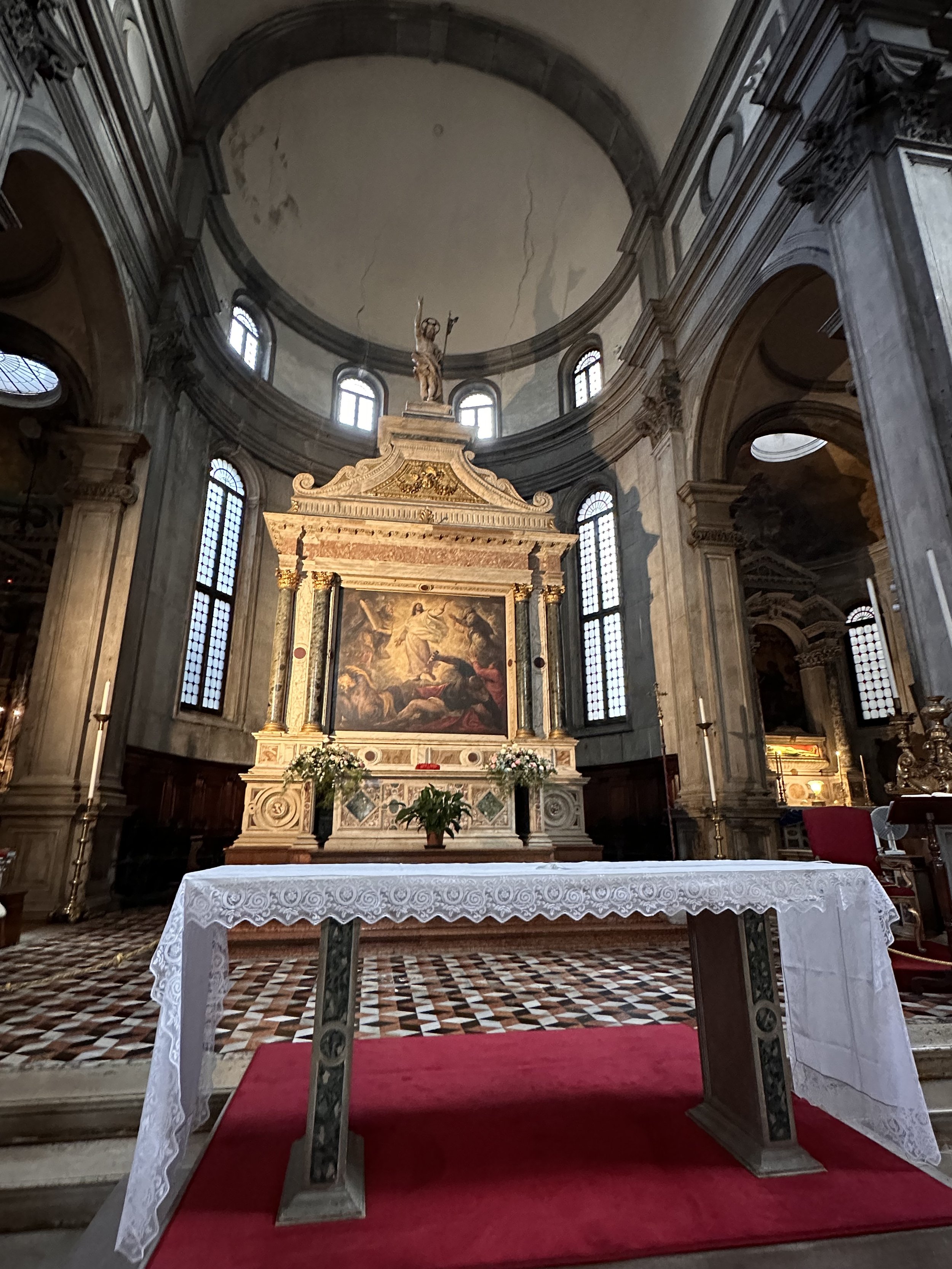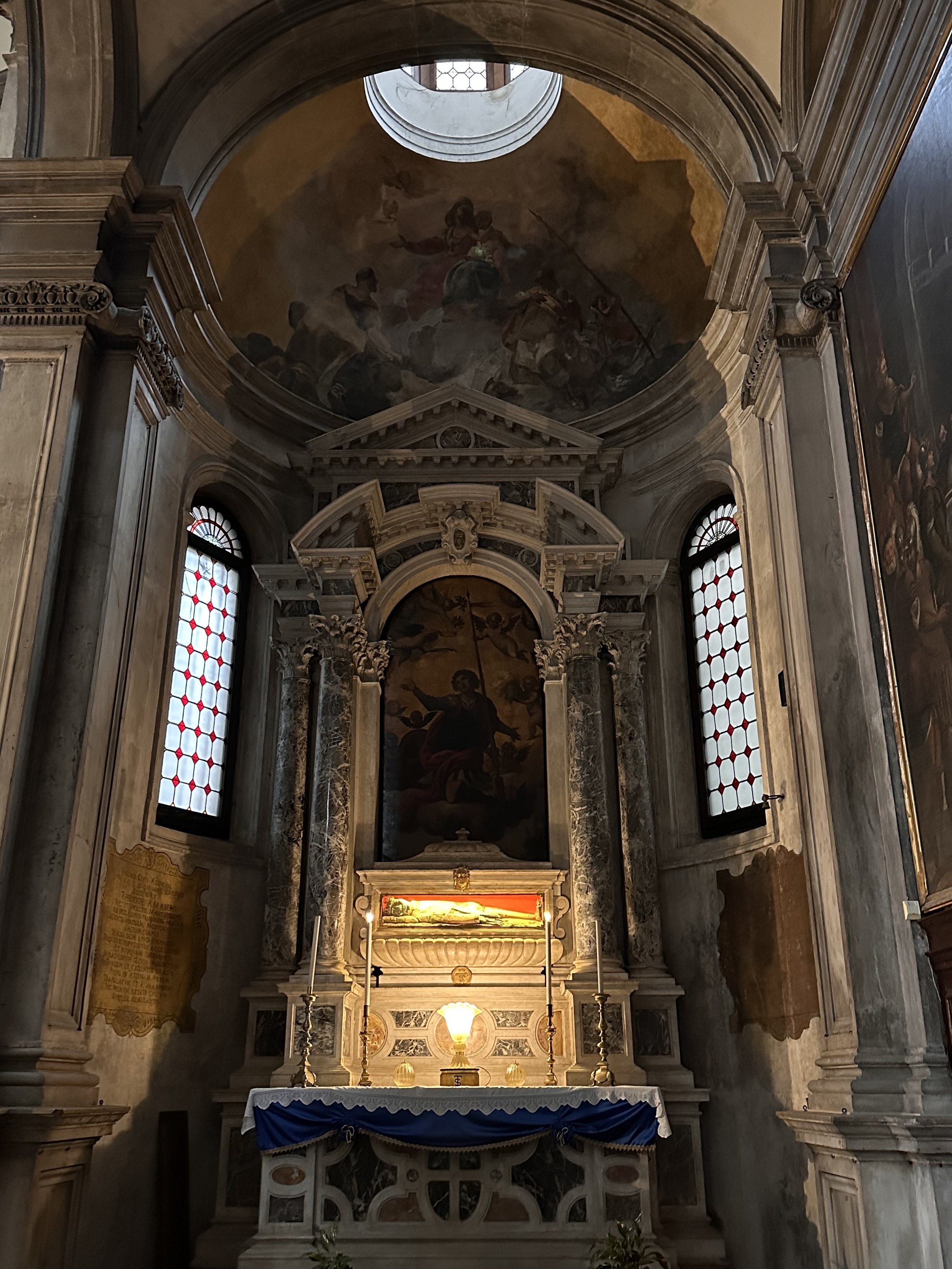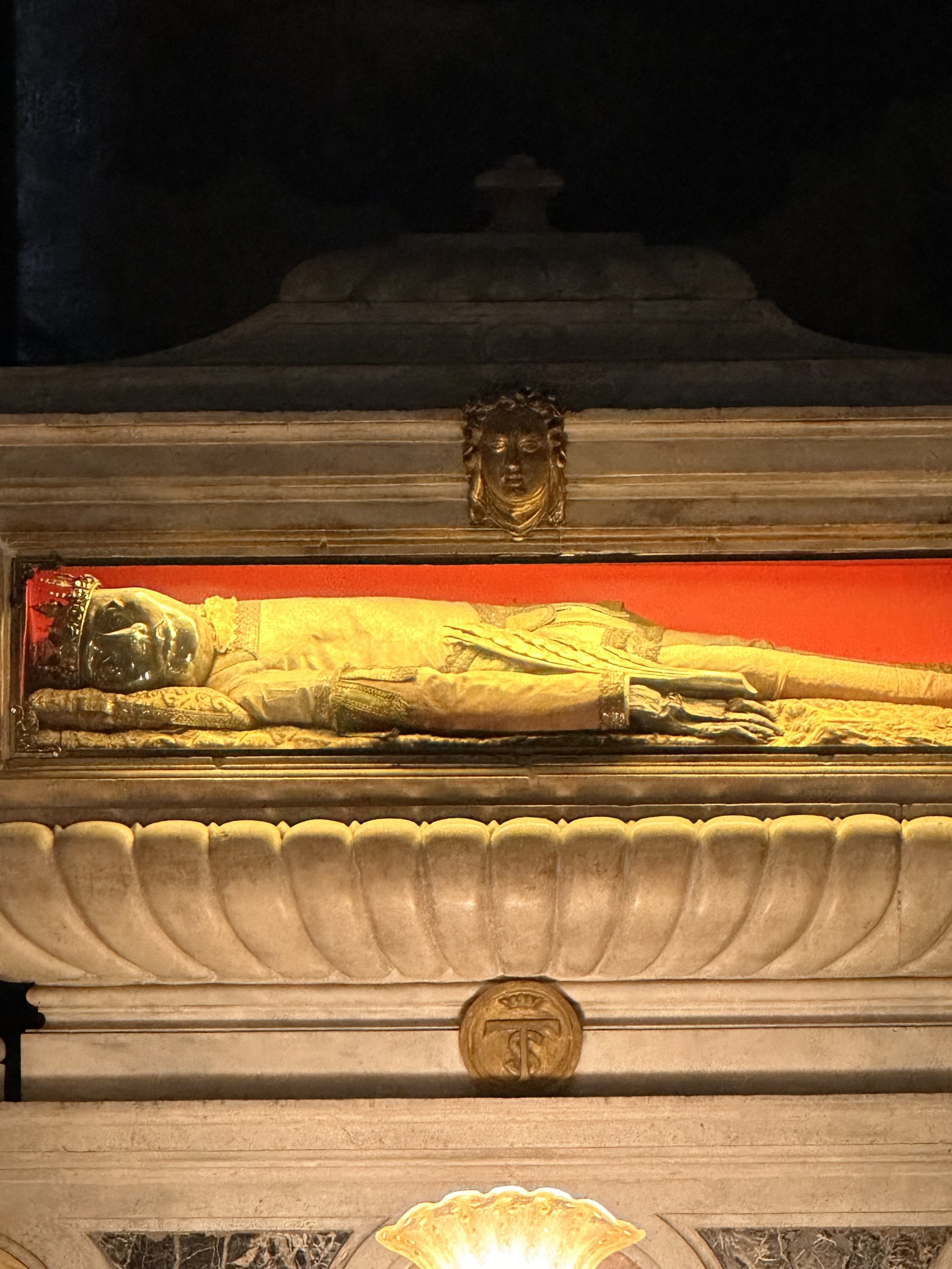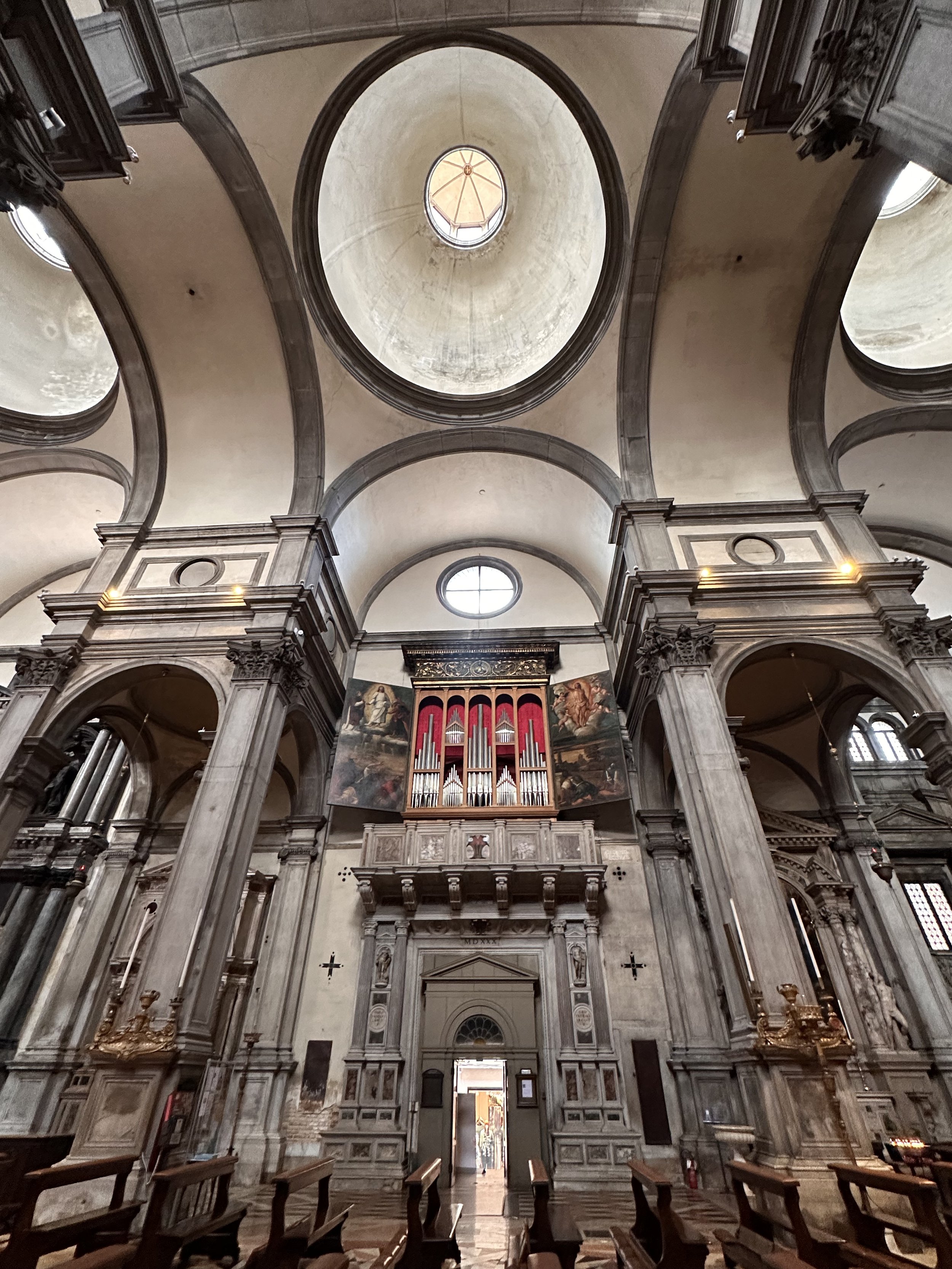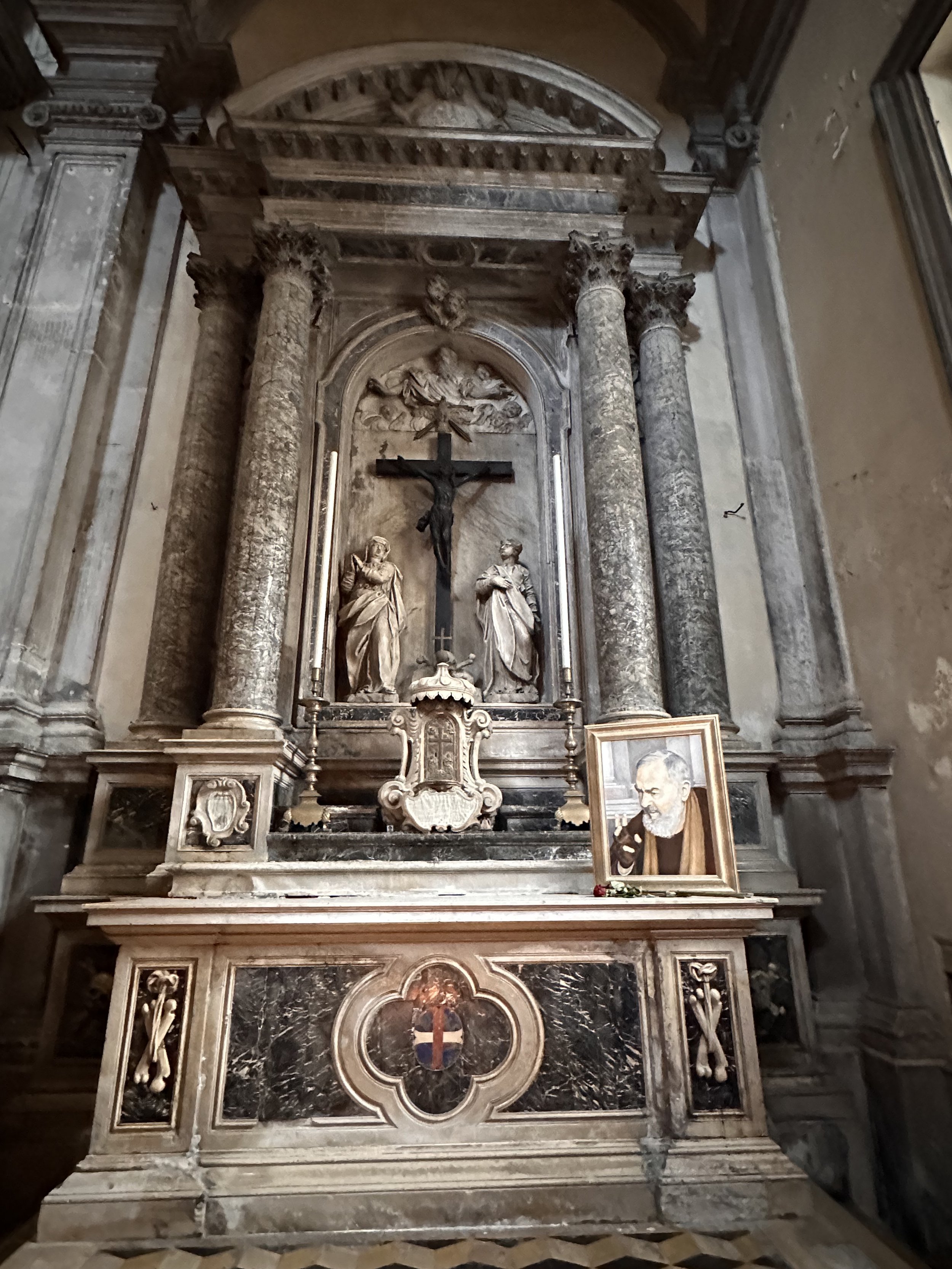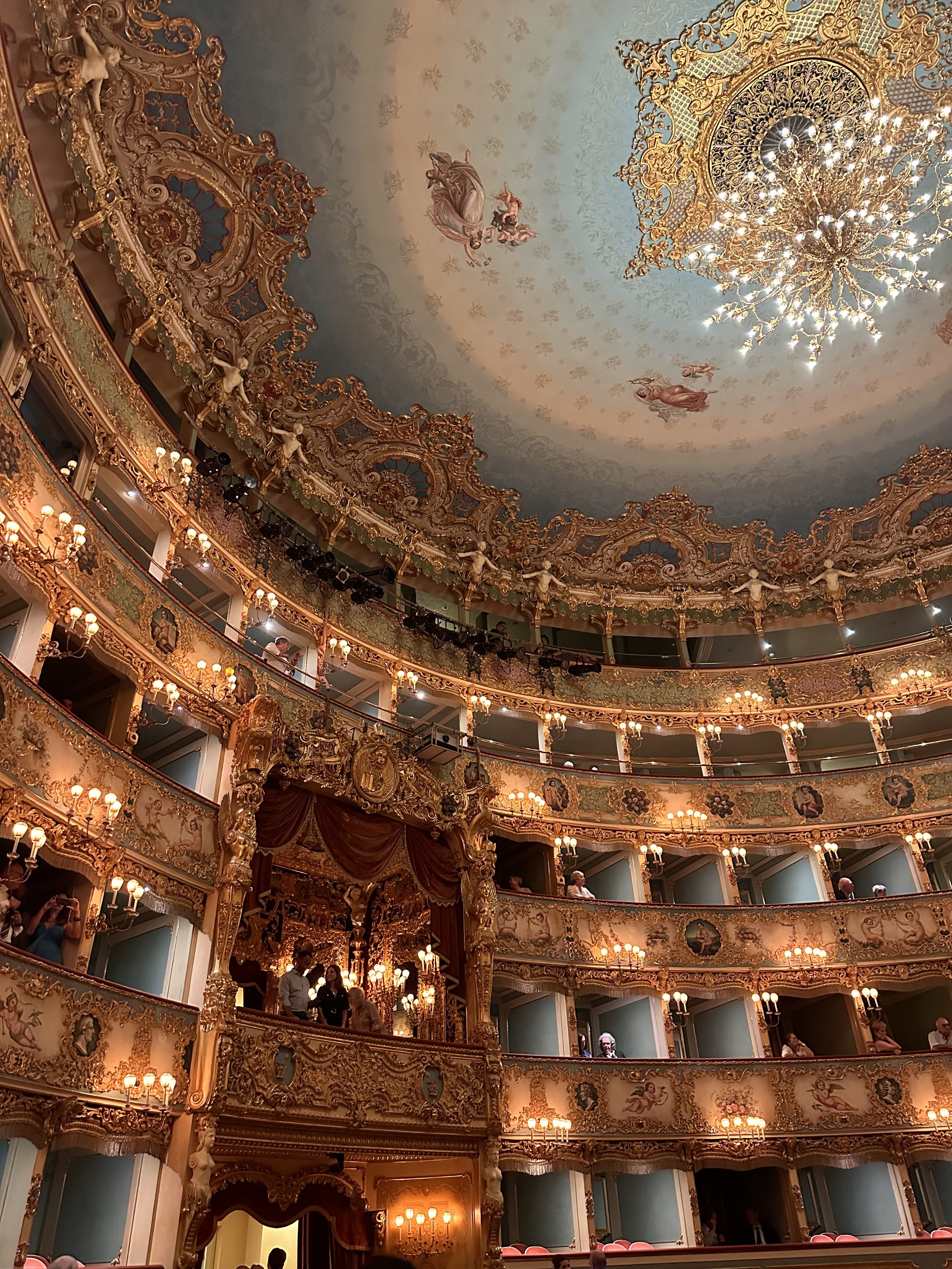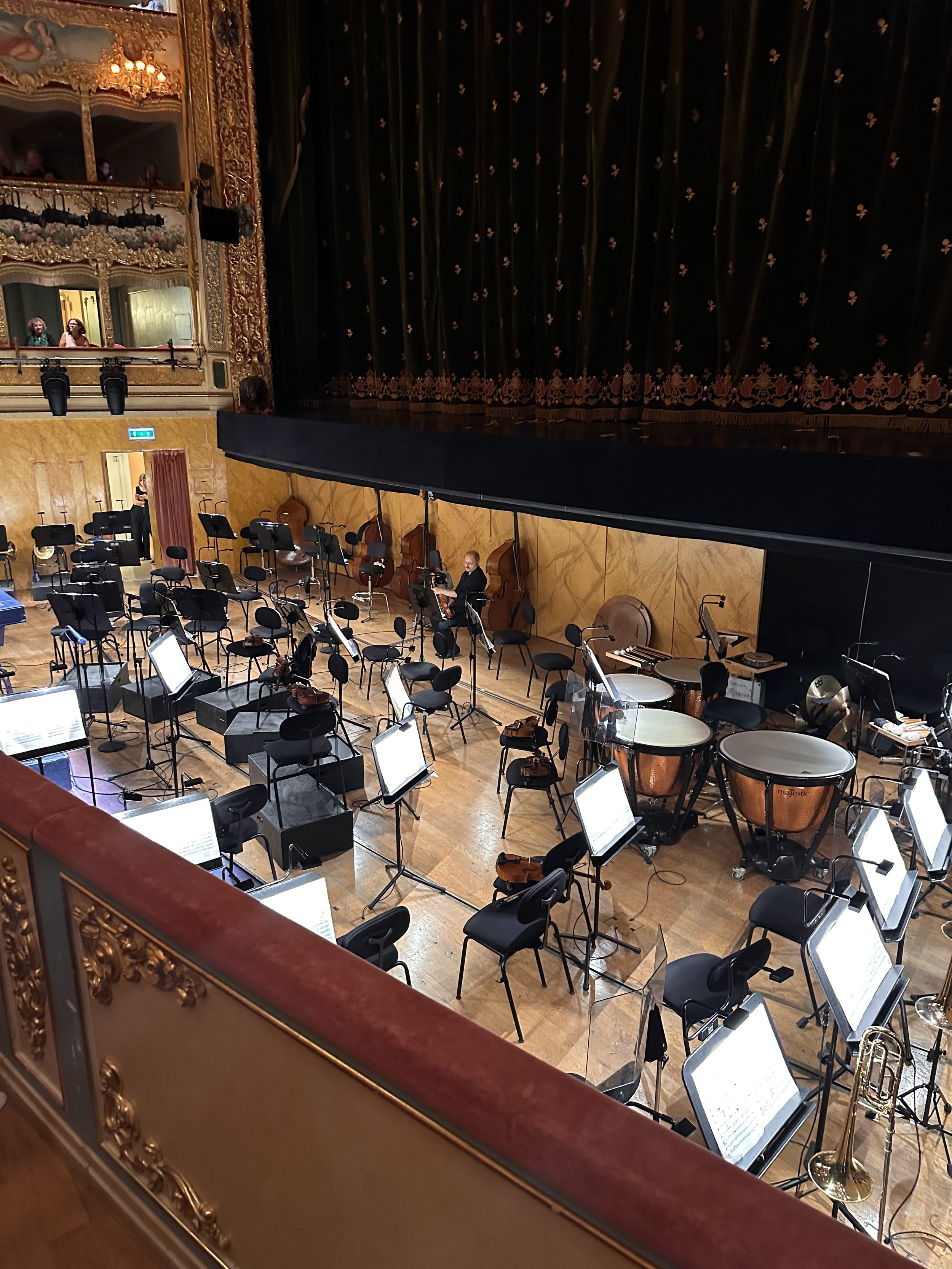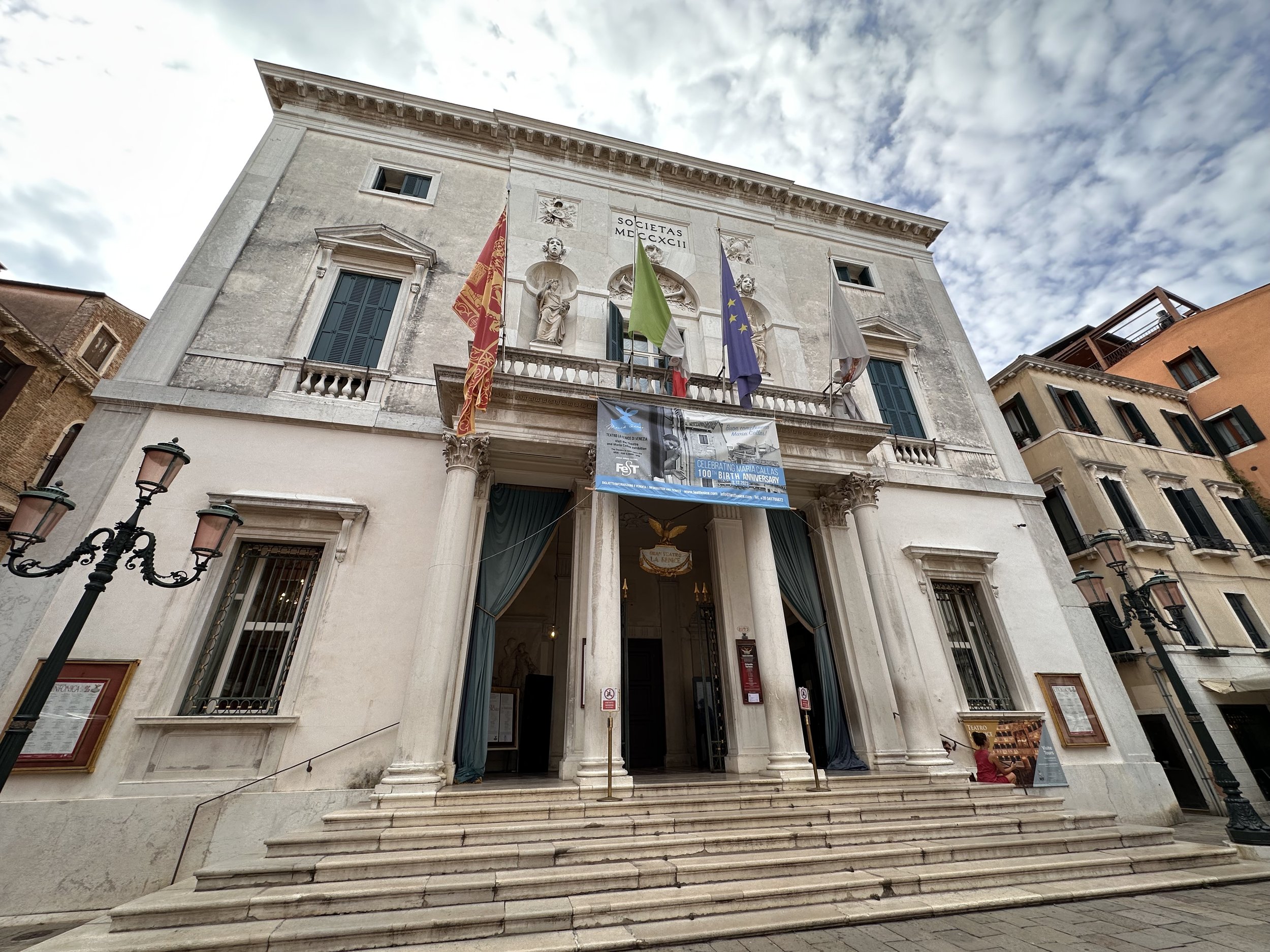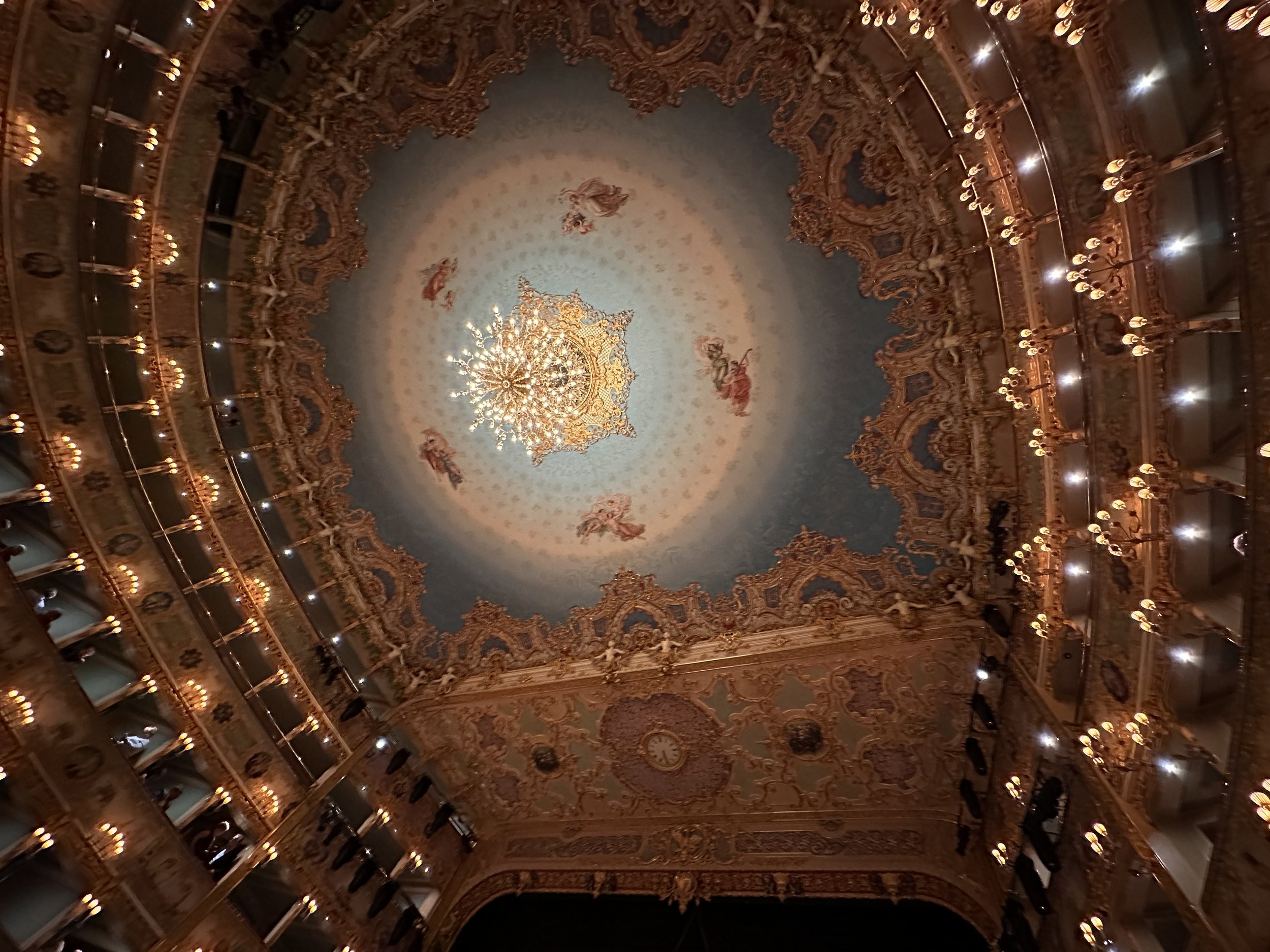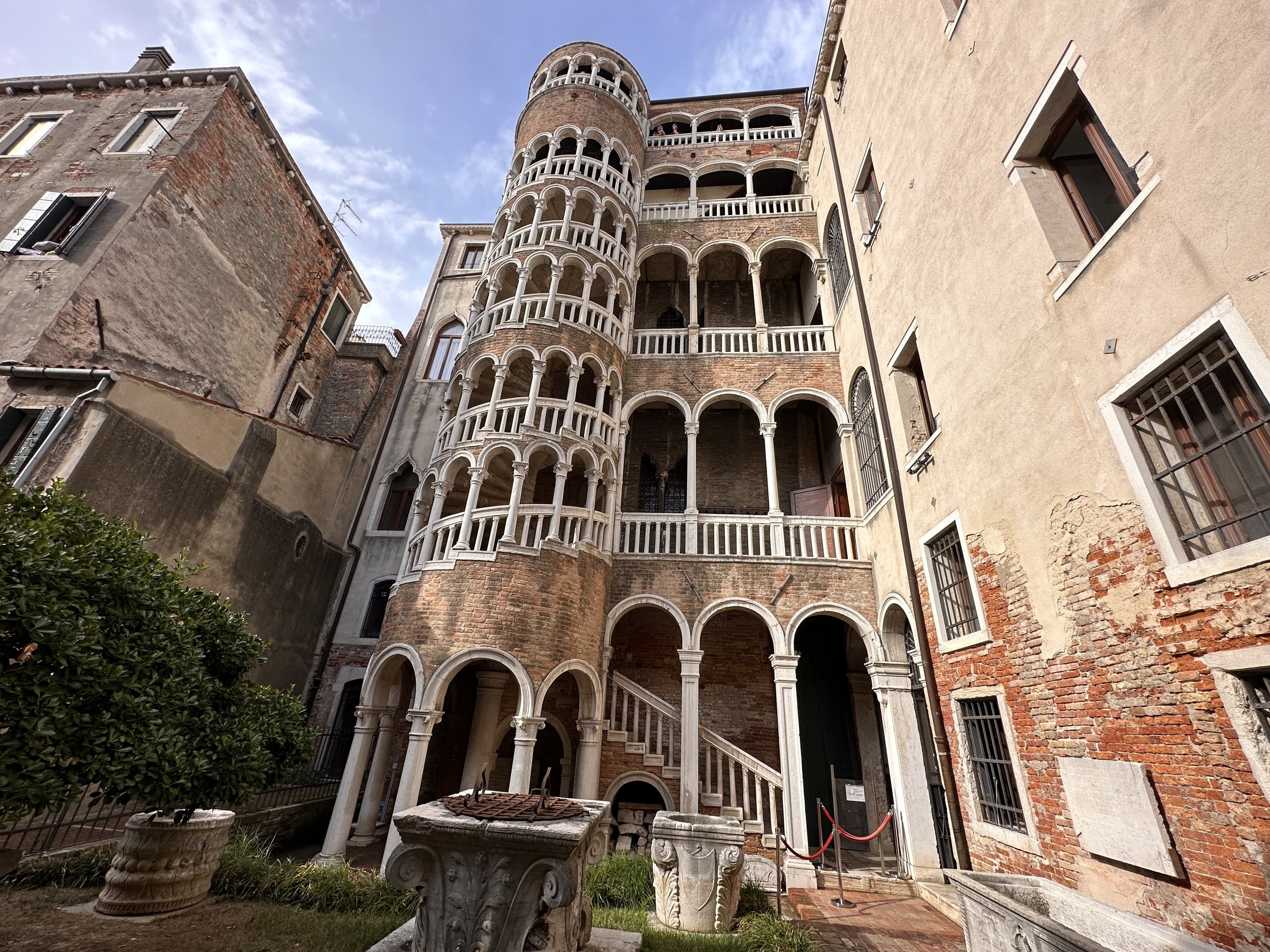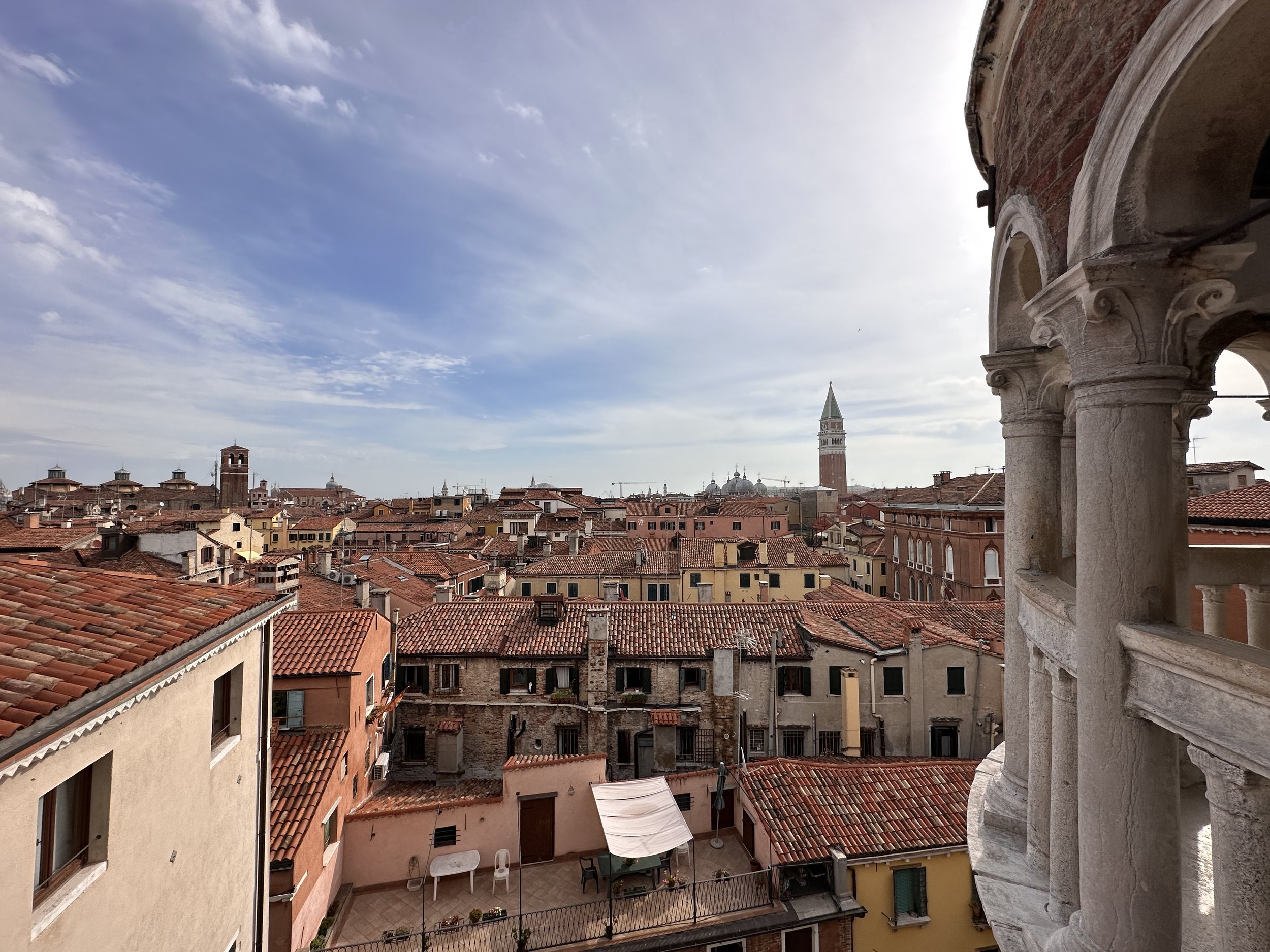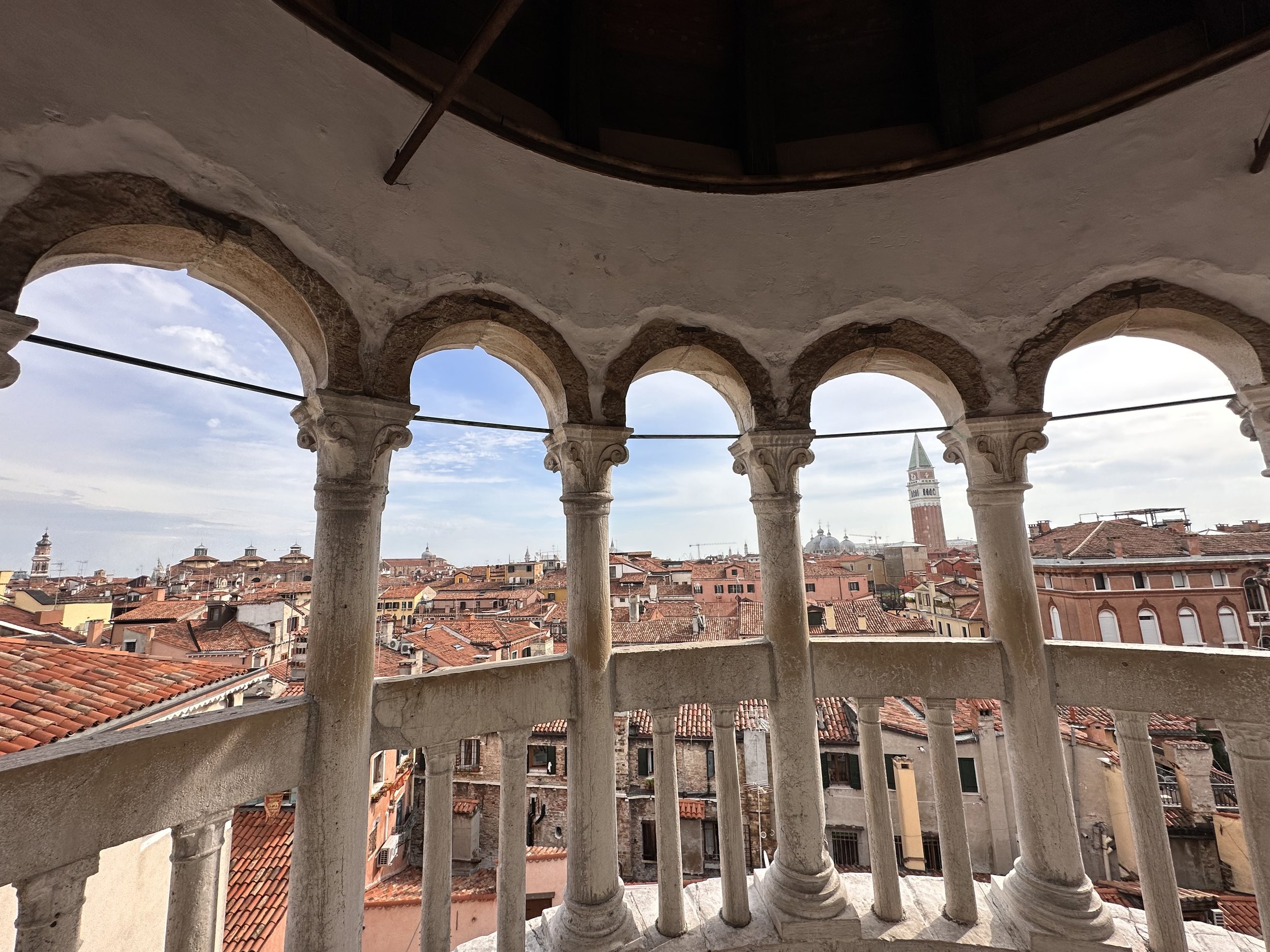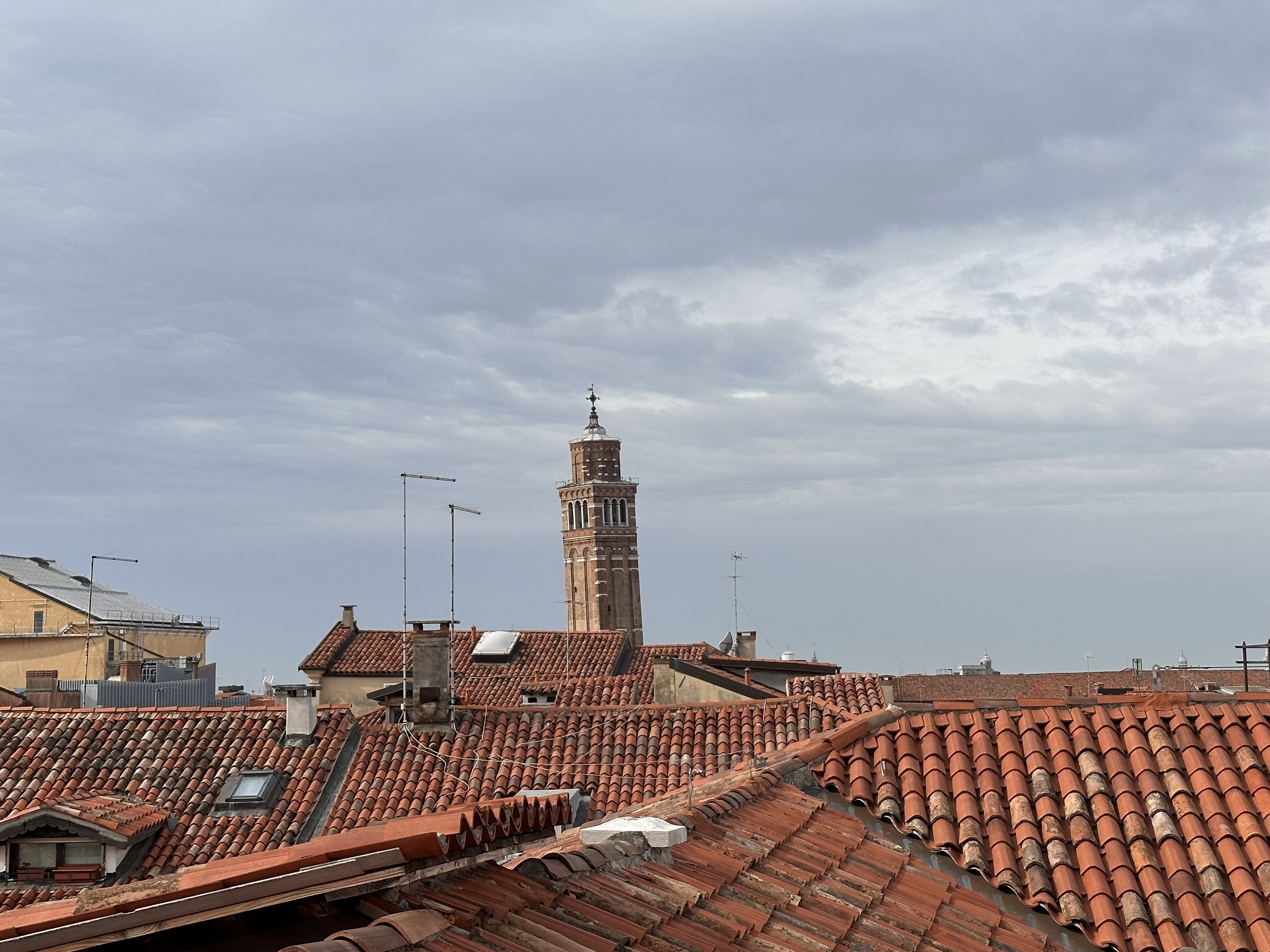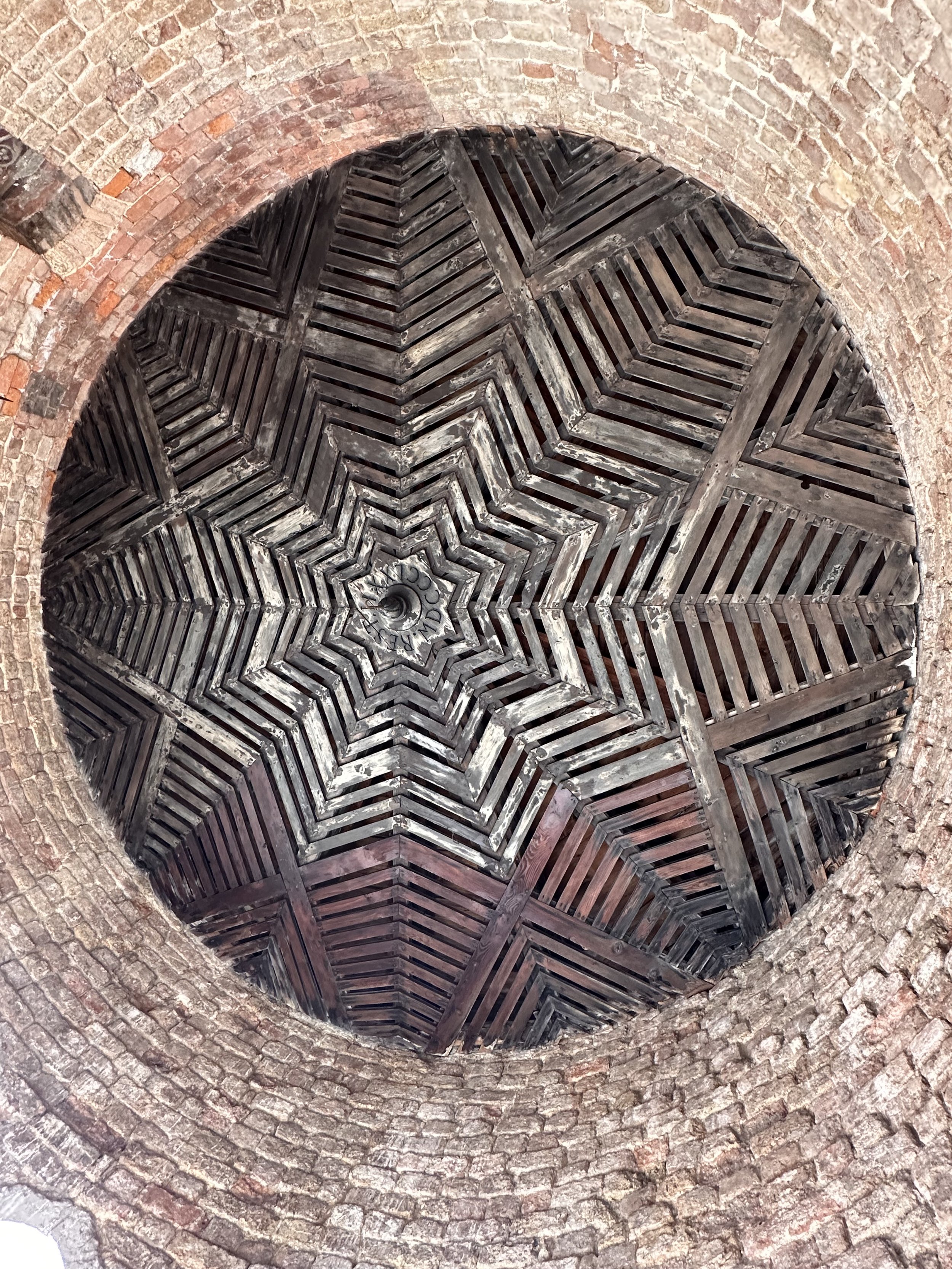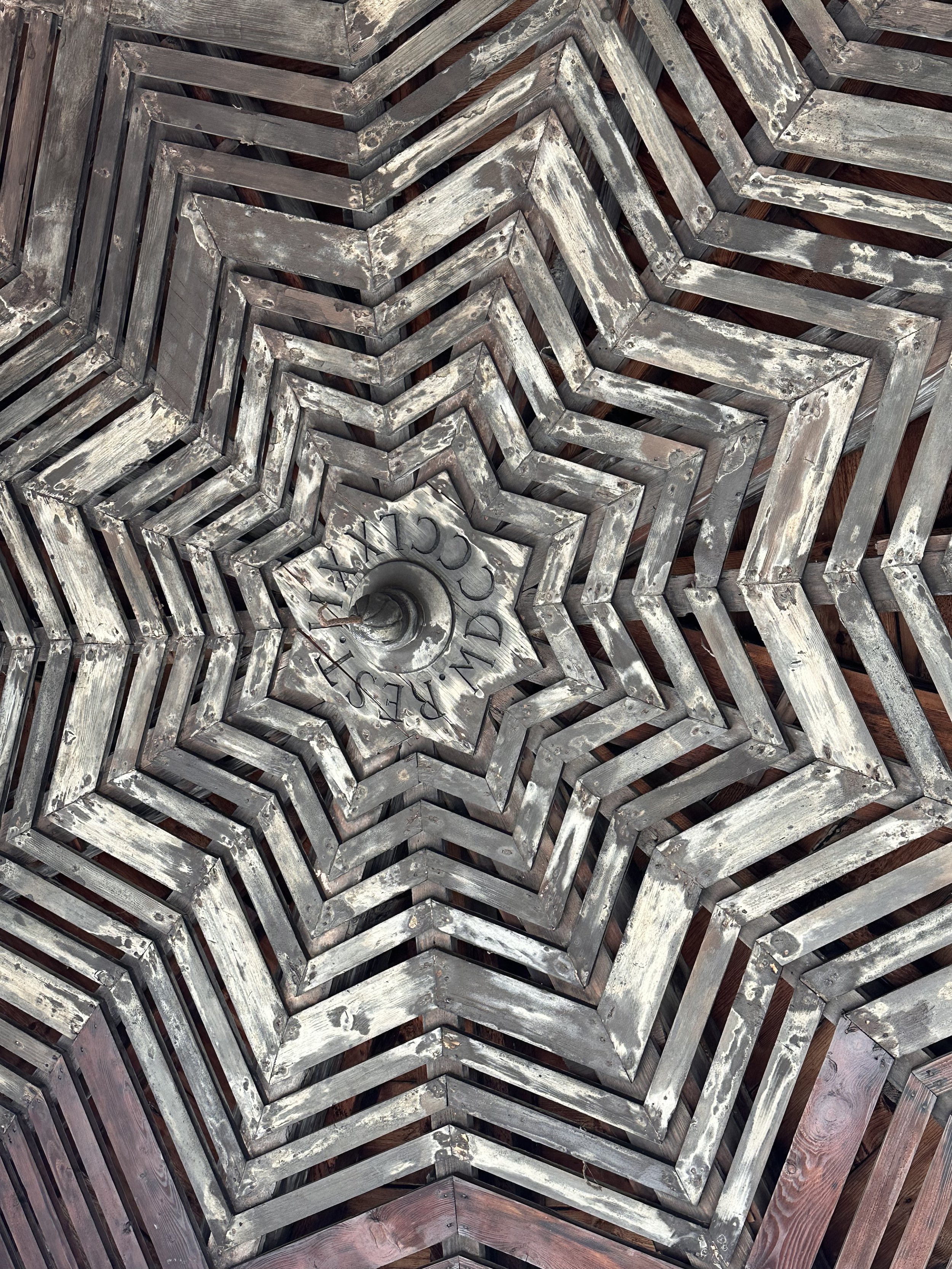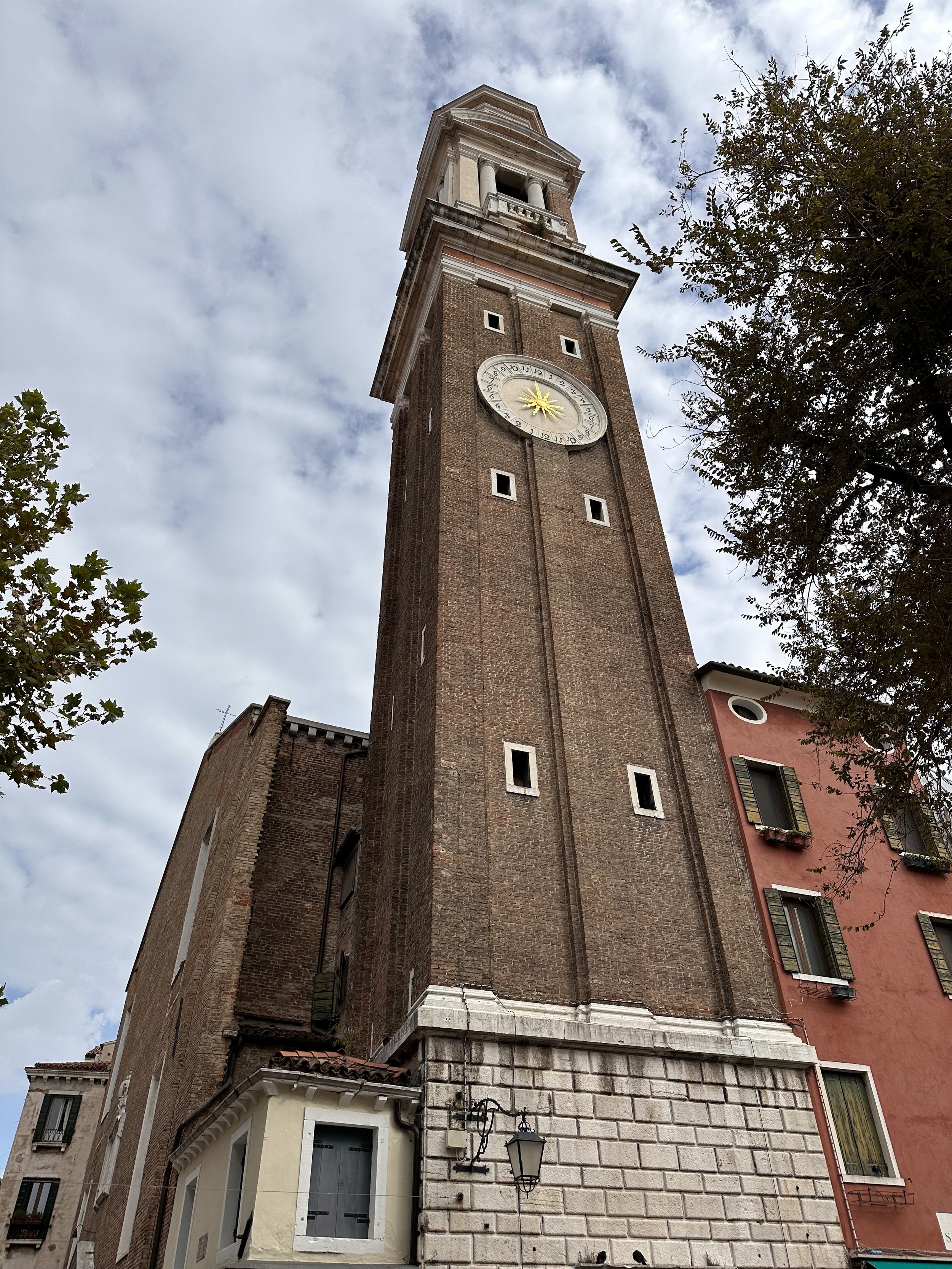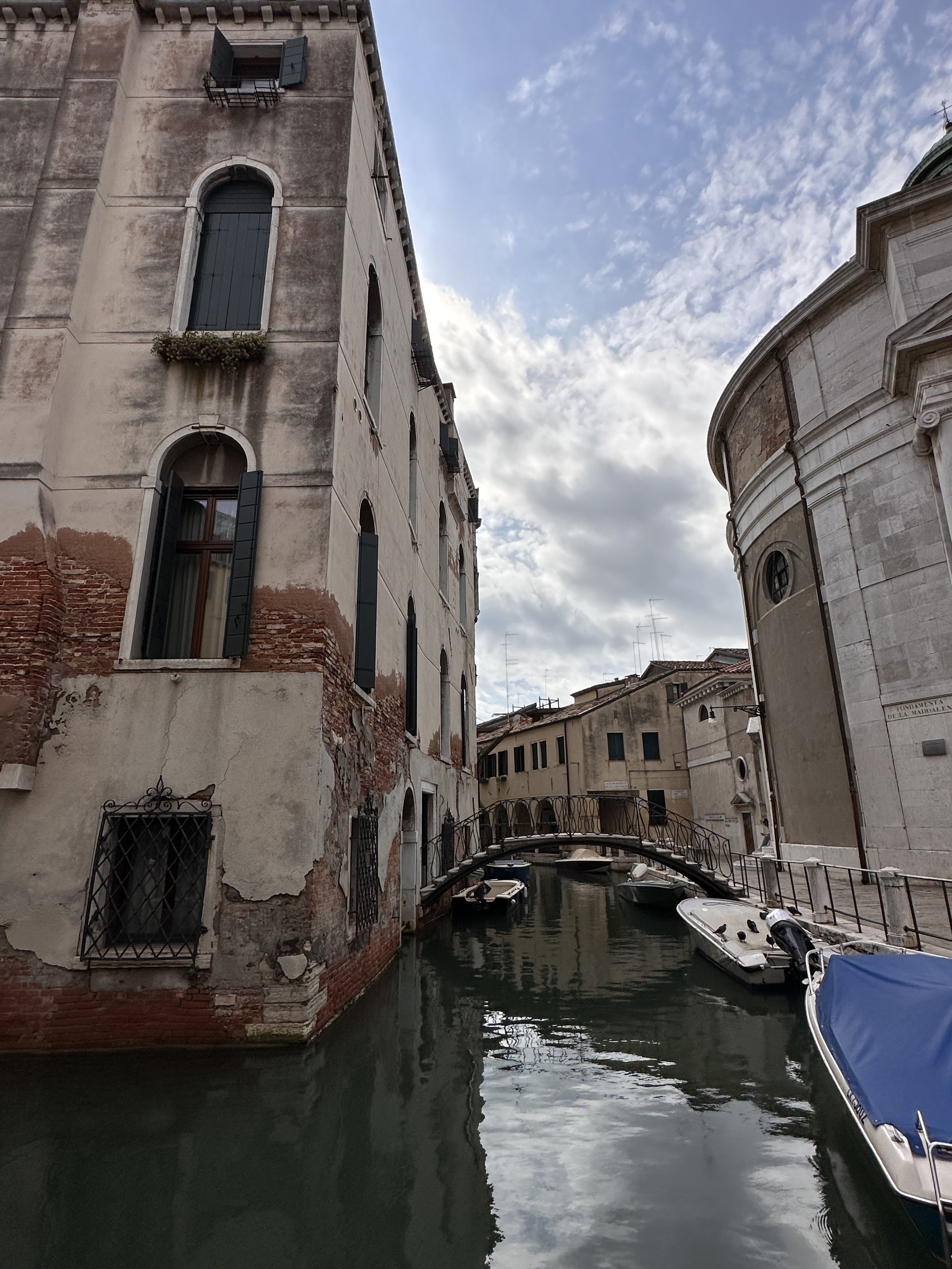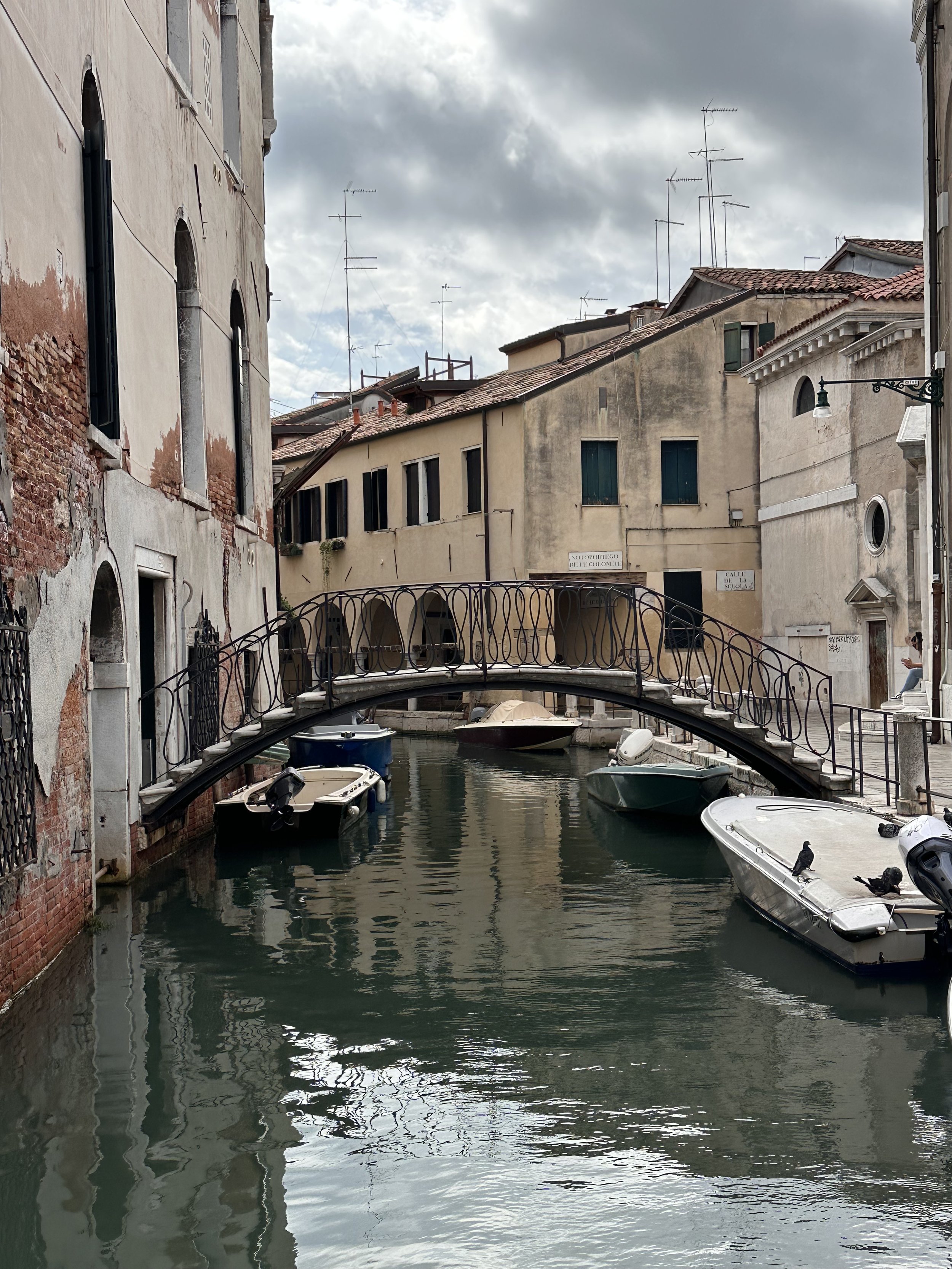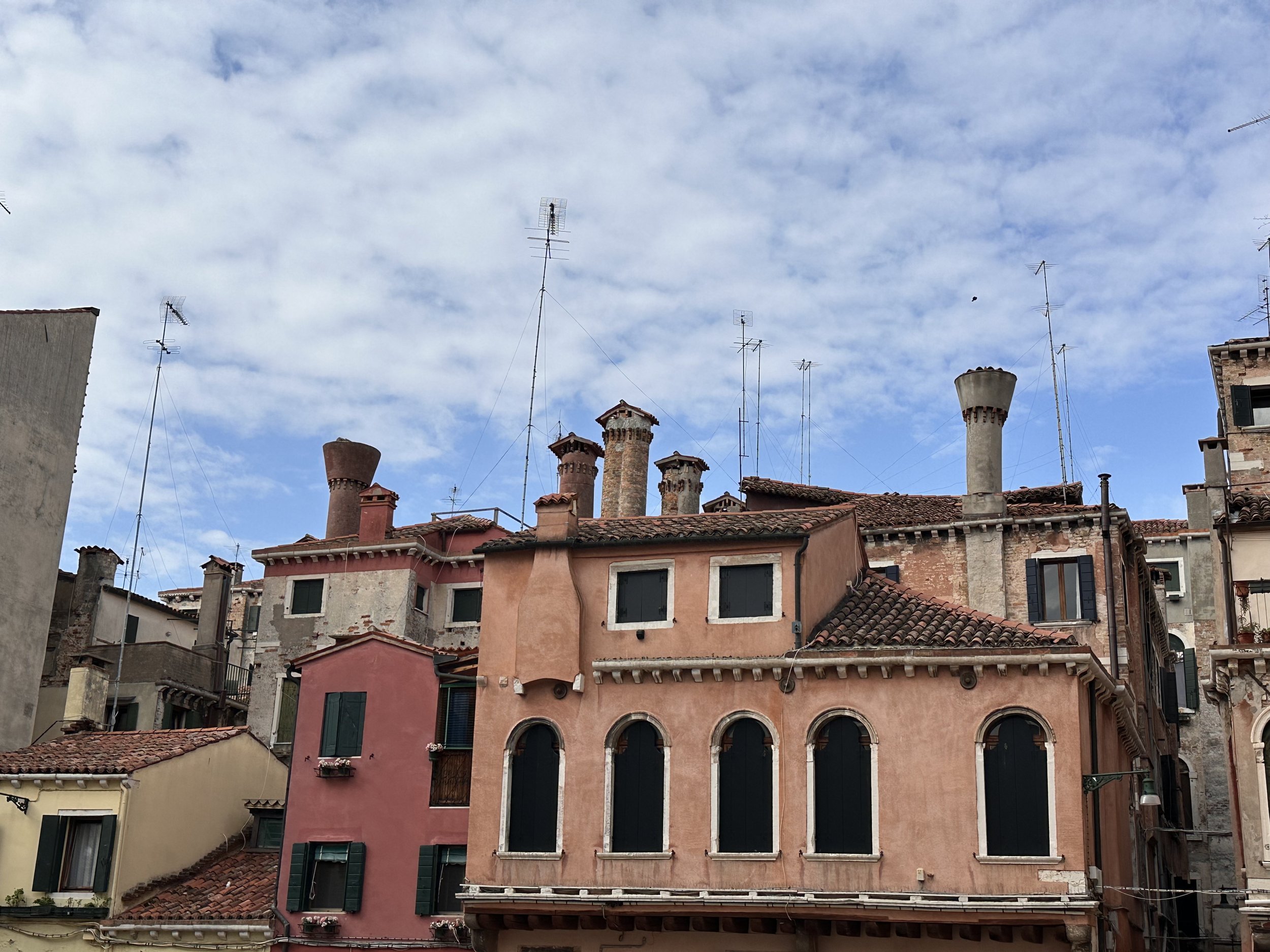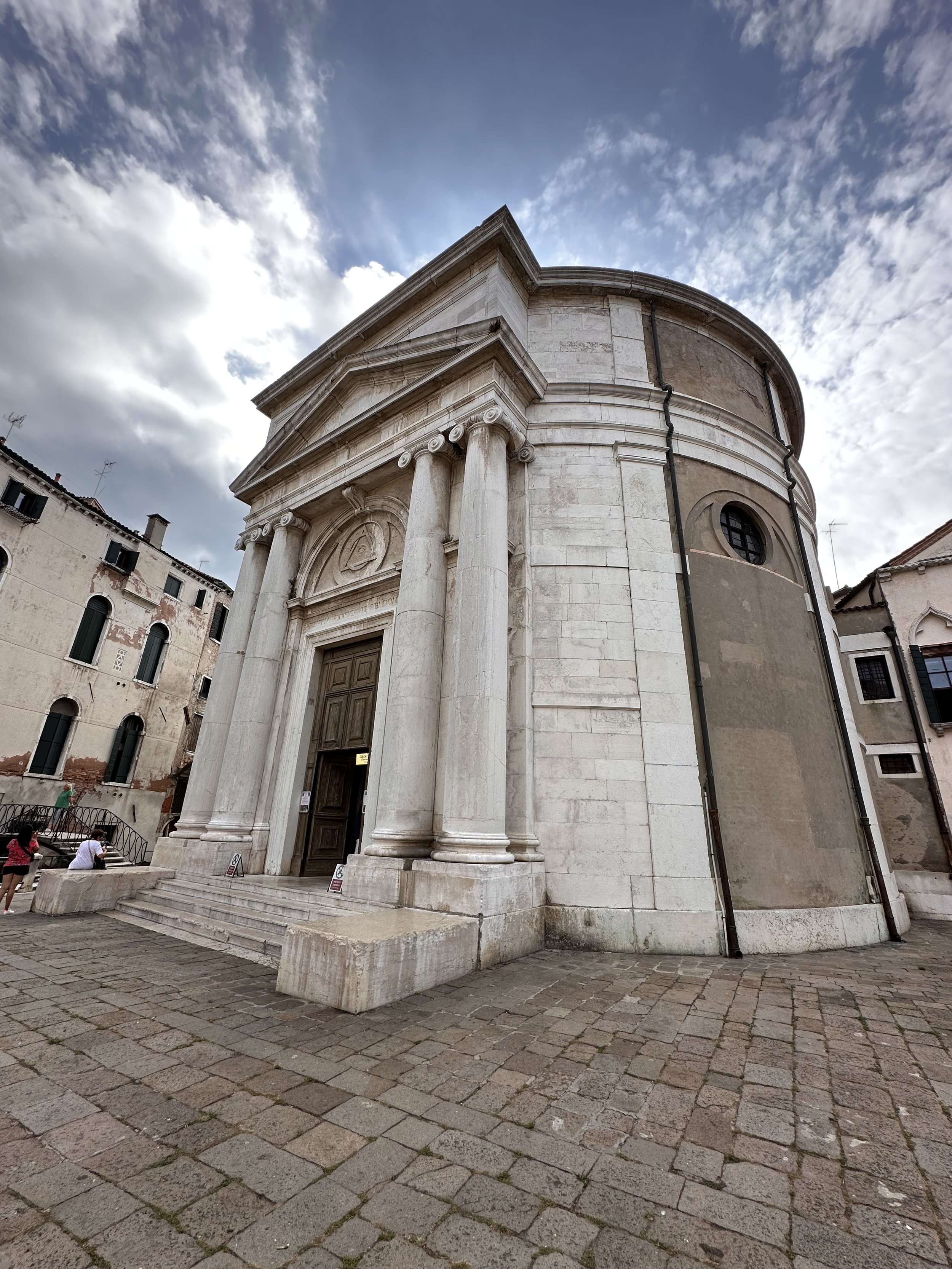Exploring Venice, Italy
This post has been updated on June 21, 2023.
Time needed in this town: 3 nights
NOTE: If you’re interested in learning about Murano Island, click here.
Venice is one of the most iconic parts of Italy (next to Rome). An entire floating city that’s kept its history in-tact - a place where you can get lost down the streets that have been around for centuries, while hearing the faint sounds of accordions playing to gondola riders. It’s certainly a magical place that only needs two days to explore.
The below information is a complete guide of the best places to stay, the top rated places to dine and drink, and all there is to see and do. We’ve also included transportation tips, as well as a summary of the history of this very historic floating island!
Jump To
Where to Stay
It’s amazing how many hotels, bed & breakfasts, and rentals are packed into this tiny island. We’ve compiled a list of the best places to stay (4.6 stars and above) for you to review however, note that the prices per night are not for the faint of heart as it’s one of the most expensive places in Italy to visit.
Naturally, most want to stay on the Grand Canal and unfortunately, the rates are far too steep for most people. If you have the means and this will be a one-time trip, definitely splurge. Otherwise, there are great hotels all over the island.
Baglioni Hotel Luna
We chose the 12th century hotel, Baglioni Hotel Luna, for its proximity to St. Mark’s Square, as well as the Grand Canal (at also doesn’t hurt that during the Venice film festival, a lot of celebs stay here).
Our experience was phenomenal - the customer service has been outstanding and the Venetian-style rooms are spacious and comfortable. We were very fortunate to be upgraded to a suite, and to have the amazing breakfast included. See below for a bit more about this beautiful property:
other recommendations
Hotel Moresco (hundreds of 10-star ratings)
Santa Croce Boutique Hotel (hundreds of 10-star ratings)
Where to Dine & Drink
Ai Mercanti
Restaurant with a terrace presenting sophisticated, seasonal cuisine amid intimate surrounds.
Al Covo
Refined, updated Venetian classics in a charming, rustic-style restaurant, with outside tables.
Alle Corone
Elegant hotel restaurant featuring traditional Venetian cooking & a robust wine list.
Arva at Aman Venice
Dine surrounded by a decor of stucco and paintings in this highly luxurious restaurant serving modern Mediterranean cuisine. Lighter lunches can be enjoyed alfresco overlooking the Grand Canal.
Bistrot de Venise
Elegant restaurant serving updates of traditional Venetian dishes, plus over 60 wines by the glass.
Caffé Florian
Caffè Florian is a coffee house situated in the Procuratie Nuove of Piazza San Marco, Venice. It was established in 1720 and is the oldest coffee house in continuous operation, in Italy, and one of the oldest in the world
On December 29, 1720, Caffè Florian opened with two simply furnished rooms as "Alla Venezia Trionfante" (Venice the Triumphant), but soon became known as “Caffè Florian”, after its original owner Floriano Francesconi. The Caffè was patronized in its early days by notable people, including the playwright Carlo Goldoni, Goethe, and Casanova (who was no doubt attracted by the fact that Caffè Florian was the only coffee house that allowed women). Later, Lord Byron, Marcel Proust, and Charles Dickens were frequent visitors. It was one of the few places where Gasparo Gozzi's early newspaper Gazzetta Veneta could be bought in the mid-18th century, and became a meeting place for people from different social classes. In 1750, it expanded to four rooms.
In 1773, Valentino Francesconi, the grandson of Floriano Francesconi, took over the business. In 1796, in a European atmosphere characterized by the French Revolution, the Venetian state feared that the revolutionary ideas could spread also in Venice. The Florian, with its international clientele, had become a meeting place for many French Jacobins, so the State Inquisitors obliged Valentino Francesconi to close the café. In May 1797, when the French armies entered in Venice, Valentino Francesconi put down the double-obsolete "Venice Triumphant" sign outside the café and replaced it with one simply bearing the name of his uncle "Florian".
In 1814, Valentino Francesconi passed the café on to his son Antonio. By 1858, the establishment had passed into the hands of Vincenzo Porta, Giovanni Pardelli, and Pietro Baccanello, and was in need of some restoration. The new rooms were named "Sala del Senato" (Senate Room), "Sala Greca" (Greek Room), "Sala Cinese" (Chinese room) and "Sala Orientale" (Oriental Room).
In the 19th century, the Florian played a role in the Italian Risorgimento because the "Senate Hall" was the meeting point for a group of Venetian patriots. This group had a key role in the Venetian Revolution of 1848, which would see Venice temporarily independent from Austria. During the convulsed hours of the Revolution, the Florian hosted the wounded patriots, becoming a temporary hospital.
Other restorations occurred at the Florian in 1872 and 1891 when two other rooms were added to the café: la "Sala degli Uomini Illustri" (the Hall of the Illustrious Men) and the "Sala delle Stagioni" (the Hall of the Seasons). In 1920 another room was added: the Liberty Room.
This was my second time visiting the caffé and this time, we got to sit in one of the old salons and have an afternoon treat.
NOTE: The prices are expensive and we also learned they charge 12 euros for the musicians playing outside.
Dama Ristorante
Guests create their own tasting menu following an unconventional approach in which spices from distant lands are combined with fish and vegetables to create top-quality dishes full of flavor. The menu is seasonal, with a section dedicated to vegetarian dishes.
Estro
Upscale eatery offering reimagined regional dishes & a curated wine list in rustic-chic environs.
Frary’s
Colorfully plated dishes fusing Mediterranean & Middle Eastern recipes in a quaint, candlelit space. They have many gluten-free options to choose from.
GROM
A 100% gluten-free gelateria with gluten-free cones.
Hostaria da Franz
Genteel, old-fashioned destination offering a range of traditional seafood & meat dishes.
La Colombina
Unfussy destination for ambitious, artfully presented Venetian cuisine, with tasting menus & wine.
La Palanca
While they do serve traditional Venetian food, they also serve breakfast with some fantastic coffee, right on the canal.
La Zucca
Seasonal Venetian dishes with vegetarian leanings, in a cozy setting with tables by the canal. There are plenty of gluten-free options.
Local
A Michelin-starred restaurant offering a tasting menu of reimagined Venetian cuisine in rustic-chic surrounds.
Locanda Cipriani
Distinguished Venetian dishes
L’Osteria di Santa Marina
Imaginative local fare in a cozy, rustic setting with dark wood interior, plus a candlelit terrace.
Mea Libera Tutti
A 100% gluten-free supermarket! Note that they are only open from 10:30am - 12:45pm and again from 4:30pm - 6:00pm.
Osteria All’Arco
Straightforward, quaint bar offering meat & seafood light bites, plus a streetside terrace.
Osteria alle Testiere
Specializing in Venetian seafood dishes
Osteria Anice Stellato
Modern takes on classic regional recipes in an elegant, rustic-style setting with canalside tables.
Ostaria Antico Dolo
Family-run restaurant with a lively atmosphere & a menu of classic Venetian dishes. They also have a gluten-free menu and serve gluten-free bread.
Ostaria Boccadoro
Creative fish-focused Venetian cuisine in an elegant dining room with rustic touches & a terrace.
Osteria Enoteca San Marco
Informal taverna with a long list of wines by the glass & a menu of seasonal dishes.
Ristorante Glam
A two Michelin-starred restaurant serving a pre-fixe menu
Ristorante La Caravella
Stylish restaurant with Venetian cuisine & a decor reminiscent of a ship, plus tables in the garden.
Ristorante Lineadombra
High-end Italian seafood, wine & homemade pasta in a chic space with a romantic waterside terrace.
Ristorante Wistèria
A Michelin-starred restaurant spotlighting a local tasting menu featuring avant-garde dishes paired with wine.
Terrazza Danieli
Opulent, rooftop dining room in Hotel Danieli serving classic Venetian cuisine overlooking the city.
Trattoria Al Gazzettino
Popular, rustic destination specializing in meat & fish dishes, plus a lively vibe. They offer an amazing amount of gluten-free options and we’re lucky we got a table - it’s super popular with locals, fashionable tourists, and celebs!
Trattoria Al Passo
Enjoy a selection of fish and seafood dishes (raw, grilled or fried with numerous condiments to accompany your starters) in a maritime themed dining room or on the light and airy veranda.
Trattoria Antiche Carampane
Seafood-focused Venetian dishes served in a cozy, family-run restaurant adorned with photos.
Vecia Cavana
Fish-based menu of Venetian dishes, including a gluten-free menu, in former 16th-century boathouse.
Vini da Gigio
Refined, family-run trattoria known for its market-fresh classic Venetian dishes & varied wine list.
Zanze XVI
Polished eatery presenting reimagined local fare such as pasta, fish & meat dishes, plus wine.
Things to See & Do
Historical Exploration
In 1600, Venice’s Pozzi prison for common criminals was being moved from the ground floor of Doge’s Palace to a building across a narrow canal from the Palace. They government wanted to be as discreet as possible and weren’t sure how to get “guilty” inmates from the confessional room in the palace to the torture chamber without causing a public scene. Thus, a passageway-cum- bridge was needed and a young architect named Antonio Contino was chosen for the job. His creation was a small, enclosed span of white limestone, with stone bars covering the windows.
If you want to see the Bridge of Sighs from the inside (as old inmates like Casanova would have seen it) you have to take the Secret Itinerary Tour which starts at specific times for different languages, and must be booked in advance.
CAMPANILE DI SAN MARCO
The Magyar raids into northern Italy, in 898 and again in 899, resulted in the plundering and brief occupation of the important mainland cities of Cittanova, Padua, and Treviso as well as several smaller towns and settlements in and around the Venetian Lagoon. Although the Venetians ultimately defeated the Magyars on the Lido of Albiola on June 29, 900 AD, and repelled the incursion, Venice remained vulnerable by way of the deep navigable channel that allowed access to the harbor from the sea. In particular, the young city was threatened by the Slavic pirates who routinely menaced Venetian shipping lanes in the Adriatic.
A series of fortifications were consequently erected during the reign of Doge Pietro Tribuno to protect Venice from invasion by sea. These fortifications included a wall that started at the rivulus de Castello (Rio del Palazzo), just east of the Doge's Castle, and eventually extended along the waterfront to the area occupied by the early Church of Santa Maria Iubanico.
Integral to this defensive network, an iron harbor chain that could be pulled taut across the Grand Canal, to impede navigation and block access to the center of the city, was installed at the height of San Gregorio. In addition, a massive watchtower was built in Saint Mark's Square, which also intended to serve as a point of reference to guide Venetian ships safely into the harbor.
Facts about the tower:
It was built and expanded upward from the middle of the 10th century, through to the middle of the 12th century
The belfry and spire were first built in 1172, then rebuilt in 1329, 1406, 1489, and 1511, 1548, 1562, 1565, 1567, 1653, 1745, 1761, and 1762 - all due to fires from lightning strikes and other natural disasters. They didn’t install a lightning rod until 1776.
The bells were a means to communicate to the Great Council when they were next meeting - it would be rung in the evening if the council was to meet the following morning, and in the early afternoon if the meeting was scheduled for the evening of the same day.
July 14, 1902 - the bell tower collapsed due to a weakened foundation, as a result of the construction happening to repair and strengthen the tower. Work did not complete on this rebuild until nearly six years later.
In 1962, an elevator was installed that could reach the top of the tower in under 30 seconds.
In 2007 - 2013, titanium cables were installed to strengthen the tower and prevent it from collapsing again.
Doge’s Palace
In 810, Doge Agnello Participazio moved the seat of government from the island of Malamocco to the area of the present-day Rialto, when it was decided a palatium duci (Latin for "ducal palace") should be built. However, no trace remains of that 9th-century building as the palace was partially destroyed in the 10th century by a fire. The following reconstruction works were undertaken at the behest of Doge Sebastiano Ziani, who would drastically change the entire layout of the St. Mark's Square. The new palace was built out of fortresses - one façade to the Piazzetta, the other overlooking St. Mark's Basin.
Political changes in the mid-13th century led to the need to re-think the palace's structure due to the considerable increase in the number of the Great Council's members. The new Gothic palace's constructions started around 1340, focusing mostly on the side of the building facing the lagoon. Only in 1424 did Doge Francesco Foscari decide to extend the rebuilding works to the wing overlooking the Piazzetta, serving as law-courts, and with a ground-floor arcade on the outside, open first-floor loggias running along the façade, and the internal courtyard side of the wing, completed with the construction of the Porta della Carta in 1442.
In 1483, a violent fire broke out in the side of the palace overlooking the canal, where the Doge's Apartments were. Once again, an important reconstruction became necessary and an entire new structure was raised alongside the canal, stretching from the Ponte della Canonica to the Ponte della Paglia.
Another huge fire in 1547 destroyed some of the rooms on the second floor, but fortunately, without undermining the structure as a whole. Refurbishment works were being held at the palace when in 1577, a third fire destroyed the Scrutinio Room and the Great Council Chamber, together with many art works.
From 1797 - 1866, the palace was occupied by various administrative offices, as well as housing the Biblioteca Marciana and other important cultural institutions within the city.
By the end of the 19th century, the structure was showing clear signs of decay, and the Italian government set aside significant funds for its restoration and all public offices were moved elsewhere, with the exception of the State Office for the protection of historical Monuments, which is still housed at the palace's loggia floor. In 1923, the Italian State entrusted the management to the Venetian municipality to be run as a museum. Since 1996, the Doge's Palace has been part of the Venetian museums network, which has been under the management of the Fondazione Musei Civici di Venezia since 2008.
Want to skip the line? Click here to book a tour.
Ponte Dei Pugni (aka The Bridge of Fists)
Epic fist fights, atop neighborhood bridges, were a celebrated tradition. Beginning in about 1600, from September to Christmas each year, rival clans would gather en masse on small bridges (without rails) and throw punches with the goal of knocking their opponents into the cold and sewage-strewn canal below.
These “Wars of the Fist” were frowned upon (if not outright outlawed), but tolerated as they marked a big improvement over the earlier tradition of fights with deadly sharpened and fire-hardened sticks. Legend has it that in a stick battle in 1585, the Castelanni clan, seeing that they had lost most of their sticks and were out-armed by the opposing Nicoletti clan, bravely threw off their protective clothing and offered to go mano-a-mano.
The fights were enormously popular spectacles and drew huge crowds as shown in the “La Guerra Dei Pugni” painting by Antonio Stom (now hanging in Venice’s Pinacoteca Querini Stampalia). The fight would begin with champions placed on the four corners of the top of the bridge, with masses of fighters behind them. In 1670, the new Diedo bridge at San Marziale opened with marble footprints marking fighters’ starting points.
The Venetian pugilists honed their skills, and even traveled to teach the close-quarters fighting technique.
As the 1600s came to a close, the fights began to lose popularity, and aristocrats who had attended and sponsored fighters began to look to new sports. On September 29, 1705, the last war of fists began in the usual manner, but punches elevated to general fighting, then a hail of roof tiles, and finally, ended bloodily when knives were pulled.
The battles were officially outlawed, and this time it was enforced. For decades after the last battle, the fighters were celebrated in poetry, painting, and myth.
Although the fights took place on several bridges around the city, the most famous fighting bridge is the “Ponte dei Pugni”, located near Campo San Barnaba in Dorsoduro. Four white marble footprints mark the starting point for fighters (restored in 2005). Other notable fighting bridges were the Diedo bridge at San Marziale, Ponte della Guerra at Santa Fosca, and Ponte della Guerra at San Zulien.
PONTE DELL’ACCADEMIA
The Ponte dell'Accademia is one of only four bridges to span the Grand Canal in Venice. It crosses near the southern end of the canal, and is named for the Accademia di Belle Arti di Venezia, which from 1807 to 2004, was housed in the Scuola della Carità, together with the Gallerie dell'Accademia, which is still there. The bridge links the sestieri of Dorsoduro and San Marco.
A bridge on the site was first suggested as early as 1488. The provveditore Luca Trum proposed to build two bridges across the Grand Canal. The members of the council, however, laughed at him, and the motion was not even put to the vote. The original steel structure, designed by Alfred Neville, opened on November 20, 1854, but was demolished and replaced by a wooden bridge, designed by Eugenio Miozzi, and opened in 1933,
It has one of the best views of the grand canal.
Rialto Bridge
The first dry crossing of the Grand Canal was a pontoon bridge built in 1181 by Nicolò Barattieri. It was called the “Ponte della Moneta”, presumably because of the mint that stood near its eastern entrance.
The development and importance of the Rialto market, on the eastern bank, increased traffic on the floating bridge, so it was replaced in 1255 by a wooden bridge. This structure had two ramps meeting at a movable central section, that could be raised to allow the passage of tall ships. The connection with the market eventually led to a change of name for the bridge. During the first half of the 15th century, two rows of shops were built along the sides of the bridge. The rents brought an income to the State Treasury, which helped maintain it.
Unfortunately, it was partly burnt in the revolt led by Bajamonte Tiepolo in 1310. In 1444, it collapsed under the weight of a crowd rushing to see the marriage of the Marquis of Ferrara, then again in 1524.
The idea of rebuilding the bridge in stone was first proposed in 1503. In 1551, the authorities requested proposals for the renewal of the Rialto Bridge, including Michelangelo’s.
The present stone bridge, a single span designed by Antonio da Ponte, began to be constructed in 1588 and was completed in 1591 - it’s similar to the wooden bridge it succeeded. Two ramps lead up to a central portico and on either side of it, the covered ramps carry rows of shops. The engineering of the bridge was considered so audacious that architect Vincenzo Scamozzi predicted future ruin. Clearly, he was wrong.
Religious History
Beginning in the summer of 1630, a wave of the plague assaulted Venice and until 1631, killed nearly a third of the population. In the city, 46,000 people died, while in the lagoons, it was closer to 94,000. Repeated displays of the sacrament, as well as prayers and processions to churches, dedicated to San Rocco and San Lorenzo Giustiniani, had failed to stem the epidemic. Echoing the architectural response to a prior assault of the plague (1575–76), when Palladio was asked to design the Redentore church, the Venetian Senate on October 22, 1630, decreed that a new church would be built. It was not to be dedicated to a mere "plague" or patron saint, but to the Virgin Mary, who for many reasons, was thought to be a protector of the Republic.
It was also decided that the Senate would visit the church each year. On November 21st, the Feast of the Presentation of the Virgin (Festa della Madonna della Salute), the city's officials parade from San Marco to the Salute for a service in gratitude, for deliverance from the plague, is celebrated. This involved crossing the Grand Canal on a specially constructed pontoon bridge and is still a major event in Venice, today.
The desire to create a suitable monument at a place that allows for easy processional access from Piazza San Marco led senators to select the present site from among eight potential locations. The location was chosen partially due to its relationship to San Giorgio, San Marco, and Il Redentore, with which it forms an arc, and razing of some of the buildings began by 1631.
A competition was held to design the building. Of the 11 submissions, architect Baldassare Longhena was selected to design the new church. It was finally completed in 1681 - the year before Longhena's death.
Fun fact: It was built on a platform made of 1,000,000 wooden piles.
Chiesa di san zaccaria
Dating back to the 9th century, the period in which the first building was built to house the remains of the father of Saint John the Baptist , which had been donated by the Byzantine emperor Leo V the Armenian to the city of Venice to strengthen his friendship.
The doges, Agnello and Giustiniano Partecipazio, had a Benedictine monastery added , which was rebuilt under the doge Orso I Partecipazio by the abbess Giovanna, who was his daughter. In the year 1105, a terrible fire destroyed it and the church, and it’s said that more than a hundred nuns died of asphyxiation in the basement, which still exists today, under the main altar.
On June 10, 1458 the construction site for the "new church" of San Zaccaria was officially opened. The Church of San Zaccaria is one of the oldest places of worship in the city.
Established in the 15th century, using a mixture of Gothic and Renaissance styles that reflect the transitional times, Venice’s San Zaccaria church is a beautifully ornate church whose crypt has been filled with the ubiquitous waters of the surrounding canals.
There has actually been a church on the site since the 9th century when it was created by one of the local leaders (known as a doge) of the time. It was not until centuries later that the current architectural jewel was built on the site, but the crypt is mainly populated by the bodies of the doges from the church’s initial tenure. The lovely burial basement features the columns and vaulted ceilings indicative of the times, but like many buildings in Venice, this subterranean level is partially filled with a permanent level of standing water. However, rather than destroying the funereal beauty of the site, it tends to enhance it by acting as a sort of mirror pool, making the columns look almost twice as long and setting the tombs off from the dry portions of the floor, giving them an even more sacred feel.
While most visitors to San Zaccaria focus on the ornate decoration of the main hall and facade, it is the crypt that truly set this place of worship apart from the rest of the pack.
San Benedetto Church (Saint Benedict)
Not much is recorded about this church, which was built during the 11th century and rebuilt in 1685. We discovered the remains of Saint Benedict in there, which was quite fascinating! It’s worth going in and taking all the art in!
SAN GIORGIO MAGGIORE
The first church on the island was built about 790, and in 982, the island was given to the Benedictine order by the Doge Tribuno Memmo. The Benedictines founded a monastery there, but in 1223, all the buildings on the island were destroyed by an earthquake, of which the church and monastery were rebuilt.
The church, which had a nave with side chapels, was not in the same position as the present church, but farther back at the side of a small campo or square. There were cloisters in front of it, which were demolished in 1516. The monks were considering the rebuilding of the church from 1521.
Palladio arrived in Venice in 1560, when the refectory of the monastery was being rebuilt. He made great improvements to this and in 1565, was asked to prepare a model for a new church, which was completed the following year, as was the stone foundation. The work was not finished before his death in 1580, but the body of the church was complete by 1575 except for the choir behind the altar (completed in 1589) and the façade (completed in 1610).
The campanile (bell tower), first built in 1467, fell in 1774, and was rebuilt in neo-classic style by 1791.
TIP: Visiting the church is free, though there is a fee to climb to the top of the bell tower. Also, take the water bus (vaporetto lines 2 and N). It’s best to purchase a daily pass, since your total visit could be longer than 75 minutes. There is no ticket machine for the vaporetto on San Giorgio Maggiore island. You can also take a water taxi, but getting back will be more challenging, since water taxis don’t regularly visit this island.
St. Mark’s Basilica
The Patriarchal Cathedral Basilica of Saint Mark, commonly known as St Mark's Basilica, is the cathedral church of the Catholic Patriarchate of Venice. It is dedicated to and holds the relics of Saint Mark the Evangelist, the patron saint of the city.
The church is located on the eastern end of Saint Mark's Square, the former political and religious center of the Republic of Venice, and is attached to the Doge's Palace. Prior to the fall of the republic in 1797, it was the chapel of the Doge and was subject to his jurisdiction, with the concurrence of the procurators of Saint Mark de supra for administrative and financial affairs.
The present structure is the third church, constructed in 1063, to express Venice's growing civic consciousness and pride. Like the two earlier churches, its model was the sixth-century Church of the Holy Apostles in Constantinople, although accommodations were made to adapt the design to the limitations of the physical site and to meet the specific needs of Venetian state ceremonies. Middle-Byzantine, Romanesque, and Islamic influences are also evident, and Gothic elements were later incorporated. To convey the republic's wealth and power, the original brick façades and interior walls were embellished over time with precious stones and rare marbles, primarily in the 13th century. Many of the columns, reliefs, and sculptures were spoils stripped from the churches, palaces, and public monuments of Constantinople as a result of the Venetian participation in the Fourth Crusade. Among the plundered artifacts brought back to Venice, were the four ancient bronze horses that were placed prominently over the entry.
The interior of the domes, the vaults, and the upper walls were slowly covered with gold-ground mosaics depicting saints, prophets, and biblical scenes. Many of these mosaics were later retouched or remade as artistic tastes changed and damaged mosaics had to be replaced, such that the mosaics represent 800 years of artistic styles. Some of them derive from traditional Byzantine representations and are masterworks of Medieval art; others are based on preparatory drawings made by prominent Renaissance artists from Venice and Florence, including Paolo Veronese, Tintoretto, Titian, Paolo Uccello, and Andrea del Castagno.
TIP: Book the 3-hour skip-the-line tour , which includes both St. Mark’s Basilica and the Doge’s Palace. This is a great tour to consider since it includes both of these sights and you get to tour them with a knowledgeable guide.
The Arts & Sciences
Four Seasons Concert in Vivaldi Church
Swap city sightseeing for the peaceful alternative of a classical music concert in Venice. Guarantee your spot by prebooking entry to a concert at Santa Maria della Pietà church—often nicknamed “Vivaldi Church”, as it was the place where Antonio Vivaldi worked as a violin teacher and concertmaster. The concert focuses on Vivaldi’s Four Seasons compositions and other classical European baroque music.
PEGGY GUGGENHEIM COLLECTION
The Peggy Guggenheim Collection is an art museum on the Grand Canal in the Dorsoduro sestiere of Venice, Italy. It is one of the most visited attractions in Venice. The collection is housed in the Palazzo Venier dei Leoni, an 18th-century palace, which was the home of the American heiress Peggy Guggenheim for three decades. She began displaying her private collection of modern artworks to the public, seasonally, in 1951. After her death in 1979, it passed to the Solomon R. Guggenheim Foundation, which opened the collection year-round from 1980.
The collection includes works of prominent Italian futurists and American modernists working in such genres as Cubism, Surrealism, and abstract expressionism (including Picasso and Dalí). It also includes sculptural works. In 2017, Karole Vail, a granddaughter of Peggy Guggenheim, was appointed Director of the collection, succeeding Philip Rylands, who led the museum for 37 years.
Teatro La Fenice
Seven old theaters were active in Venice at the end of the 18th century, two for the production of plays and the others for music. The grandest of these was the Teatro San Benedetto, which stood on the site currently occupied by the Rossini cinema. Built by the Grimani family in 1755, it was subsequently assigned to the Nobile Società di Palchettisti (Noble Association of Box-holders). However, following a judicial ruling in 1787, this association was expelled and forced to give up the opera house to the noble Venier family - the owners of the land on which it was built. The association immediately proposed building a larger and more sumptuous opera house than the one it had lost, which would become the symbol of their changing fortunes and their capacity for ′rebirth′. It was, therefore, to be called “La Fenice”, like the mythical, immortal bird able to rise out of its own ashes, to symbolize the association's splendid rebirth after its misfortunes.
The piece of land for it was bought in 1790 and the private houses on it were demolished. A competition was then announced for the design of the opera house, and Architect Giannantonio Selva was selected from the 29 plans submitted. Work began in 1791 and was completed just 18 months later, in April 1792. La Fenice immediately made its mark as one of the leading opera houses, noted in Italy and Europe, both for the high artistic quality of its work and the splendour of its building. But, almost as if the name were the bearer of bad omens, on the night of December 13, 1836, the opera house was devastated by a first fire caused by a recently installed Austrian heater. The newspapers said it took three days and three nights to put out the fire, and that various hotspots were still smouldering among the debris 18 days later. The flames entirely destroyed the house, and only the foyer and the Sale Apollinee were saved. The work to rebuild it began in February 1837 and on December 22nd of that same year, it reopened.
However, the speed of the work led to urgent restoration work on the framework being required as early as 1854, then 1938, and again in 1996. On the night of January 29, 1996, while it was closed for restoration, a second fire erupted, though this time it was arson. It was rebuilt and opened again in 2003.
Unique Experiences
The gondola has existed in Venice since the 11th century, being first mentioned by name in 1094. It is estimated that there were 10,000 gondolas in the 16th century, 8,000 - 10,000 gondolas during the 17th and 18th century., and 4,000 in the 19th century, There are only around 400 in active service today, with virtually all of them used for tourist hire. Those few that are in private ownership are either hired out to Venetians for weddings or used for racing.
Even though the gondola has become a widely publicized icon of Venice, in the times of the Republic of Venice, it was by far not the only means of transportation - in the 1500s, the majority of boats were batellas, caorlinas, galleys, and other boats. Now, only a handful of batellas survive, and caorlinas are used for racing only.
The design of the historical gondola was quite different from its modern evolution - the paintings of Canaletto and others show a much lower prow, a higher "ferro", and usually two rowers. The banana-shaped modern gondola was developed only in the 19th century by the boat-builder, Tramontin, whose heirs still run the Tramontin boatyard. The design of the gondola continued to evolve until the mid-20th century, when the city government prohibited any further modifications.
The origin of the word "gondola" has never been satisfactorily established, despite many theories.
Gondoliers
During their heyday, as a means of public transports, teams of four men would share ownership of a gondola – three oarsmen (gondoliers) and a fourth person, primarily shore-based and responsible for the booking and administration of the gondola.
However, as the gondolas became more of a tourist attraction than a mode of public transport, all but one of these cooperatives and their offices have closed. The category is now protected by the Institution for the Protection and Conservation of Gondolas and Gondoliers, headquartered in the historical center of Venice.
The profession of a gondolier is controlled by a guild, which issues a limited number of licenses (approximately 400), granted after periods of training (400 hours over six months), an apprenticeship, and a major comprehensive exam, which tests knowledge of Venetian history and landmarks, foreign language skills, and practical skills in handling the gondola (such skills are necessary in the tight spaces of Venetian canals).
Gondoliers dress in a blue or red striped top, red neckerchief, wide-brimmed straw hat and dark pants. They can earn the equivalent of up to US$150,000 per year.
In August 2010, Giorgia Boscolo became Venice's first fully-licensed female gondolier.
These Gondoliers are incredibly knowledgeable about Venice, so definitely take advantage of that and ask lots of questions. Ours gave us some interesting historical facts I didn't know about Venice:
Venice was founded 1100 years ago
In its heyday, it was home to more than 350,000 people. Now it's home to just 57,000. The main reason for this is the flooding. The water isn't clean and also causes a lot of damage.
The buildings stay "afloat" on wooden stakes, driven into the sediment. Since oxygen is needed for decay, these stakes can last a very long time.
When repairs need to be made to the stakes (which they do over time), they block off and drain the canal to remove sediment build up and repair any stakes that might begin deteriorating.
The worst flood they had, rose the water about 5 feet higher than usual in 2012. The worst ever flood was in 1966 and that was about 6 feet higher than usual.
The famous 18th Century opera house (La Fenice) had burned down in 1996 and had to be rebuilt - it's still a mystery if it was arson by the Mafia.
Price
The official tariff of a 30-minute ride on a gondola is € 80 (US$ 87.30). The price goes up to € 100 (US$ 109.20) from 7 pm, onwards. If you want the gondolier to sing or to play an instrument during the ride, you will have to pay extra.
Note that most gondoliers will charge you more than the official tariff.
SCALA CONTARINI DEL BOVOLO
The palazzo was designed and built in the 15th century, by the architect Giovanni Candi, as one of the city residences of the Contarini family. Giorgio Spavento is believed to have been responsible for the addition of the grand spiral staircase on the exterior in 1499.
Fun fact: The Palazzo del Bovolo was chosen by Orson Welles as one of the main locations (Brabantio's house) for his 1952 adaptation of Shakespeare's Othello, and the staircase is prominently featured in the film.
TIP: Book access to the steps in advance.
T FONDACO ROOFTOP TERRACE
The Fondaco Dei Tedeschi building sits next to the Rialto Bridge on the Grand Canal. It was originally built 800 years ago by Germans for trade and lodging. In 1925, it was the headquarters of the Central Post Office in Venice. And in 2016, the building opened to the public as the first DFS store in Europe.
Sitting on top of the building is a rooftop terrace that overlooks the Grand Canal. From here, you look out over the Rialto Bridge and can watch as gondolas, water taxis, the vaporetto, and other boats zip back and forth along the Grand Canal.
TIP: Tickets to visit the terrace are free and can be reserved online in advance (they usually sell out one week in advance), and are released 21 days in advance. You will be reserving a 15-minute time slot and visitation is limited to 40 people.
Tour the Real Hidden Venice
Discover a side of Venice many tourists never see with this 'secret Venice' walking tour. Join your Venetian guide for a stroll through authentic local neighborhoods and past captivating hidden gems. Delve into the history and lore of the Jewish Ghetto, Cannaregio, and San Polo districts, stopping to admire its quiet canals and tiny artisan workshops that still handcraft traditional masks and gondolas.
Walking Tours
Burano Island
A day trip from Venice, Burano Island is famous for its lace and it’s colorful houses. It’s a great place to explore, especially if you’ve already seeing Murano Island.
Cannaregio & Jewish Quarter
Instituted on March 29, 1516, the Venetian Ghetto was the area of Venice in which Jews were forced to live, by the government of the Venetian Republic, and where the word “ghetto” is derived from. In 1555, Venice had 160,208 inhabitants, including 923 Jews, who were mainly merchants.
Between 1541 and 1633, the Ghetto Vecchio and Ghetto Nuovo were made to accommodate the increase in Jewish immigration. Nevertheless, the overall number of Jews in Italy were not exceed 25,000 - it didn't top 5,000 until the early 17th century.
In 1797, the French Army of Italy, commanded by the 28-year-old General Napoleon Bonaparte, occupied Venice, forced the Venetian Republic to dissolve itself on May 12, 1797, and ended the ghetto's separation from the city on July 11th that same year. In the 19th century, the ghetto was renamed the Contrada dell'unione.
Today, the Ghetto is still a center of Jewish life in the city. The community is about 450 people and is culturally active, though few live in the actual neighborhood, due to the cost.
St. Mark’s Square
Piazza San Marco is 590 ft long and 230 ft wide, and is the only “piazza” in Venice, since the rest of the squares are called “piazzales” or “campos”. It was established during the ninth century AD, but adopted its current size and form in 1177 AD, and was paved one hundred years later.
The most prominent building facing the square is the Byzantine Saint Mark’s Basilica, originally founded in 828 AD. Near the Basilica, is the late-15th century elaborately decorated St Mark’s Clocktower. The northern and southern wings of St Mark’s Square are comprised of two historic buildings – the Old Procurators’ Offices and the New Procurators’ Offices. The most towering feature of the square is St Mark’s Campanile, a watchtower originally built in the 12th century, extended in the 16th, and rebuilt following its collapse in the early 20th century. Right next to it is the mid-15th century Biblioteca Marciana (the Library of Saint Mark).
The square is also home to the columns of San Todaro and San Marco - the latter having the famous Lion of Venice statue on top of it, depicting the Lion of Saint Mark. The statue originates from Roman times in the 3rd century AD. The second column has a sculpture of Theodore Tiron, an ancient warrior saint, mounted on it.
The Piazza San Marco, as Napoleon called it, “the world’s most beautiful drawing room”.
Fun Fact: It is the lowest point in Venice, so when there is “Acqua Alta” (high water/tide), which happens several times a year, it is the first place to be flooded. When this happens, the authorities place wooden footbridges for the locals and tourists.
Tip: Do not feed the pigeons - it’s actually illegal.
Take in the Sights and Sounds by the grand canal
There is nothing quite like the experience of the Grand Canal for the first time, and it’s something you will never forget. Turn the sound on to experience it for yourself, below:
How to Get Around
Taking the train from Rome to Venice
It takes about three hours to get to Venice, from Rom, via Tren Italia. It was a beautiful ride that took us through some of the notable countrysides. We were in the first class cabin, which gives you a comfortable seat, as well as a small drink and snack from the attendant. The café car has the common fare you see on most trains (at an additional purchase) but for those who are gluten-free, they do have some great treats!
Water TaxiS in Venice
Upon arriving to the Venizia - St. Lucia stop, we exited right out of the station and down to the water taxis. Note that this cost is steep and usually depends on the company and how many people/pieces of luggage are being transported. It’s roughly between € 65 and € 100. But, if you have never been to Europe, it’s worth it (plus, it saves the headache of dragging luggage all the way to your hotel and back, which can add nearly 1.5 hours each way).
Our water taxi ride was Blackbeard’s first real taste of Venice - to see in the historic buildings, other water taxis, gondolas, music, and people go by, created this sort of euphoric sensation a 5 year-old gets when they see the Cinderella Castle for the first time at Disneyland.
Note: They can accept credit card payments, but tips cannot be added to a card.
A History Summary
568 AD - Venice came into being after the fall of the Roman Empire in the West. The Lombard hordes, whose incursions into northern Italy began in 568 AD, drove great numbers of mainlanders onto the islands, which were previously the homes of itinerant fishermen and salt workers.
584 AD - The isolated communities (islands of Veneto-Byzantine civilization) became part of the exarchate of Ravenna when it was created in 584.
641 AD - When the mainland Byzantine city of Oderzo fell to the Lombards in 641, political authority was shifted to one of the islands in the Venetian lagoon.
8th century AD - The first elected duke (doge) was Orso, chosen in an anti-Byzantine military declaration in 727, but he was succeeded by Byzantine officials until about 751, when the exarchate of Ravenna came to an end. There followed decades of internal political strife among various settlements vying for supremacy, especially by church authorities wanting to acquire temporal influence. It was also during this century that the doge, Obelerio, and his brother, Beato, formed an alliance with the Franks of Italy and placed Venice under the authority of the Italian king, Pippin, in order to free themselves from Byzantine control.
814 AD - The Franco-Byzantine treaty guaranteed Venice political and juridical independence from the rule of the Western Empire.
840–841 AD - The doge was negotiating international agreements in his own name, which contributed greatly to its function as a trading intermediary.
Beginning 9th century AD - The doges were chosen by popular election, though the right was frequently abused during times of civil strife.
Late 9th century AD- Increase in private wealth led to the gradual achievement of internal stability by creating a broader ruling class that was capable of putting a limit to the power of the doge. Also, the group of Rialto islands was solemnly transformed into the city of Venice.
1031 - 1070 AD - The final collapse of family faction rule led to a change in the system of government, in which people of the sovereign had the right to elect the doge (though it restricted to the residents of the Rialto and, more narrowly, to a select group of nobles). A new church was built for St. Mark during this time as well.
11th century AD - The greatest danger to Venetian interests was the Norman expansion under Robert Guiscard, which threatened to cut Venetian communications to the south. Action was taken against the Normans, which helped to assure Venetian freedom on the Mediterranean Sea.
Late 11th century AD - The Crusades focused the newly awakened trading interests of the West on the Mediterranean. At first, Venice was chiefly concerned with gaining control of the European trading ports of the Byzantine Empire, leaving to private interests the commercial opportunities in Syria and Asia Minor. Although they had been the first to win trade concessions and a commercial quarter in Constantinople, the Venetians were aggressive and arrogant, causing further rifts that led to nearly a war.
1171 - 1198 AD - All Venetian residents in Constantinople and the provinces were arrested, and their goods, confiscated. Relations were patched up in 1187 and again in 1198, but the Venetians remained embittered.
1239 - 1242 AD - Maritime statutes were established and the civil statutes of Jacopo Tiepolo regulated civil and economic relations. The number of elected members of the Great Council was raised from 45, to 60, and then to 100.
1290 - 1310 AD - New laws restricted the right for families to take part in the government as magistrates, which meant a high degree of corruption and manipulation. To counter any attempts at sole personal rule, the Council of Ten was established to police the patrician order and defend the existing regime.
14th century AD - The republic was swept into struggles on the mainland of Italy and in the Adriatic and Mediterranean seas. Deviating from its strict maritime policy, Venice established sovereignty over Treviso, thereby ensuring its own food supply, but also taking on the defense of a land frontier. This reignited the war between them and Genoa (which took place mainly in Dalmatia), made all the worse by the Black Plague in 1348. Finally, nearly 40 years later, The Peace of Turin eliminated Genoese political influence from the Mediterranean and the East, leaving the Venetian government arbiter of the sea routes.
1420 AD - Venice incorporated the principality in the Venetian domains.
15th century AD - Greed and power continued to consume Venetians, which meant a series of fights and wars that all but took away maritime trade away from Venice.
16th century AD- By the early 16th century, leagues were formed to reroute trade routes away from Venice in response to its continued aloofness.
1645 - 1969 AD - Crete was taken away from Venice, though they remained in control of Dalmatia and allied with Austria.
1797 AD - The end of the Venetian republic came after the outbreak of the French Revolution. Napoleon, determined to destroy the Venetian oligarchy, claimed as a pretext that Venice was hostile to him and a menace to his line of retreat during his Austrian campaign of 1797. As a result, Venice was handed over to Austria.
1846 - The railway was brought to Venice
1866 AD - After the defeat of Austria by the Prussians, Venice was ceded to Italy.
1932 AD- A parallel road (to the train) for car traffic was built.
1940s - 1990s AD - Venice continued to experience a high degree of political strife between parties.
20th century and beyond - While politics still remains large, Venice is now facing more environmental strife than ever. Flooding and the sulfuric acid from shipbuilding factories is eroding away historical buildings, which is causing the government to scramble for ways to save the city.

